
2022 Morbi bridge collapse
On 30 October 2022 a pedestrian suspension bridge over the Machchhu River in the city of Morbi in Gujarat, India, collapsed, causing the deaths of at least 135 people and injuries to more than 180 others.
A pedestrian suspension bridge collapsed in the city of Morbi, Gujarat, leading to the deaths of at least 135 people.

On 30 October 2022 a pedestrian suspension bridge over the Machchhu River in the city of Morbi in Gujarat, India, collapsed, causing the deaths of at least 135 people and injuries to more than 180 others.

Morbi or Morvi is a city in the Morbi district in the state of Gujarat, India. It is situated on the Kathiawar peninsula. In 2011, the city's population was determined to be 194,947. The city is on the Machhu River, 35 km (22 mi) from the sea and 60 km (37 mi) from Rajkot.

Gujarat is a state along the western coast of India. Its coastline of about 1,600 km (990 mi) is the longest in the country, most of which lies on the Kathiawar peninsula. Gujarat is the fifth-largest Indian state by area, covering some 196,024 km2 (75,685 sq mi); and the ninth-most populous state, with a population of 60.4 million. It is bordered by Rajasthan to the northeast, Dadra and Nagar Haveli and Daman and Diu to the south, Maharashtra to the southeast, Madhya Pradesh to the east, and the Arabian Sea and the Pakistani province of Sindh to the west. Gujarat's capital city is Gandhinagar, while its largest city is Ahmedabad. The Gujaratis are indigenous to the state and their language, Gujarati, is the state's official language.
A magnitude 7.0 earthquake strikes the Aegean Sea between Greece and Turkey, triggering a tsunami. At least 119 people die mainly due to collapsed buildings.

An earthquake with a moment magnitude of 6.9–7.0 occurred on 30 October 2020 about 14 km (8.7 mi) northeast of the Greek island of Samos. Although Samos was closest to the epicentre, it was the Turkish city İzmir, 70 km (43 mi) northeast that was heavily affected—more than 700 residential and commercial structures were seriously damaged or destroyed. One hundred and seventeen people died in İzmir Province while an additional 1,034 were injured. In Greece, there were two fatalities and 19 injured. The earthquake is the deadliest in the year 2020, and the third major earthquake to strike Turkey that year. It is also the deadliest in Turkey since 2011. The event is called the Samos earthquake by the International Seismological Centre.
Sixty-four people are killed and more than 147 injuries after a fire in a nightclub in the Romanian capital Bucharest.

The Colectiv nightclub fire was a deadly fire in Bucharest, Romania, on 30 October 2015, which killed 64 people and injured 146. The fire, which was the deadliest fire in the country's history, occurred during a free concert performed by the metalcore band Goodbye to Gravity to celebrate the release of their new album, Mantras of War. The band's pyrotechnics, consisting of sparkler firework candles, ignited the club's flammable polyurethane acoustic foam, and the fire spread rapidly. Most of the victims were poisoned by toxins released from the burning foam. Overwhelmed by the high number of victims, Romanian authorities transferred some of the seriously injured to hospitals in Israel, the Netherlands, Belgium, Austria, the United Kingdom, Norway, Germany and France. Mass protests over the corruption linked to the fire led to the resignation of the Prime Minister of Romania, Victor Ponta.

Bucharest is the capital and largest city of Romania, as well as its cultural, industrial, and financial centre. It is located in the southeast of the country, on the banks of the Dâmbovița River, less than 60 km (37.3 mi) north of the Danube River and the Bulgarian border.
Sweden is the first European Union member state to officially recognize the State of Palestine.

Sweden, formally the Kingdom of Sweden, is a Nordic country in Scandinavia. It borders Norway to the west and north, Finland to the east, and is connected to Denmark in the southwest by a bridge–tunnel across the Öresund. At 450,295 square kilometres (173,860 sq mi), Sweden is the largest Nordic country, the third-largest country in the European Union, and the fifth-largest country in Europe. The capital and largest city is Stockholm. Sweden has a total population of 10.5 million, and a low population density of 25.5 inhabitants per square kilometre (66/sq mi), with around 87% of Swedes residing in urban areas in the central and southern half of the country.

The European Union (EU) is a supranational political and economic union of 27 member states that are located primarily in Europe. The union has a total area of 4,233,255.3 km2 (1,634,469.0 sq mi) and an estimated total population of about 447 million. The EU has often been described as a sui generis political entity combining the characteristics of both a federation and a confederation.
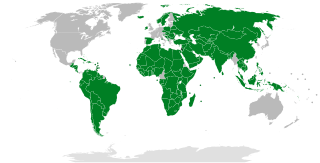
International recognition of the State of Palestine has been the objective of the Palestine Liberation Organization (PLO) since the Palestinian Declaration of Independence formally established the de jure sovereign state on 15 November 1988 in Algiers, Algeria, at an extraordinary session in-exile of the Palestinian National Council. The declaration was promptly acknowledged by a range of countries, and by the end of the year, the proclaimed Palestinian state was recognized by over 78 countries. As of 31 July 2019, 138 of the 193 United Nations (UN) member states and two non-member states have recognized it. Palestine also has been a non-member observer state of the UN General Assembly since the passing of United Nations General Assembly resolution 67/19 in November 2012.

Palestine, officially the State of Palestine, is a state located in Western Asia. Officially governed by the Palestine Liberation Organization (PLO), it claims the West Bank, including East Jerusalem, and the Gaza Strip as its territory, though the entirety of that territory has been occupied by Israel since the 1967 Six-Day War. As a result of the Oslo Accords of 1993–1995, the West Bank is currently divided into 165 Palestinian enclaves that are under partial Palestinian National Authority (PNA) rule; the remainder, including 200 Israeli settlements, is under full Israeli control. The Gaza Strip has been ruled by the militant Islamic group Hamas and has been subject to a long-term blockade by Egypt and Israel since 2007.
Four people are killed when a Beechcraft Super King Air crashes at Wichita Dwight D. Eisenhower National Airport in Wichita, Kansas.

The Beechcraft Super King Air family is part of a line of twin-turboprop aircraft produced by Beechcraft. The Model 200 and Model 300 series were originally marketed as the "Super King Air" family; the "Super" designation was dropped in 1996. They form the King Air line together with the King Air Model 90 and 100 series.

On October 30, 2014, a Beechcraft King Air B200 twin turboprop crashed into a building hosting a FlightSafety International (FSI) training center shortly after taking off from Wichita Mid-Continent Airport in Wichita, Kansas. The pilot, the only person on board, was killed along with three people in the building; six more people in the building were injured.

Wichita Dwight D. Eisenhower National Airport is a commercial airport 7 miles (11 km) west of downtown Wichita, Kansas, United States. It is the largest and busiest airport in the state of Kansas. Located south of US-54 in southwest Wichita, it covers 3,248 acres and contains three runways.

Wichita is the largest city in the U.S. state of Kansas and the county seat of Sedgwick County. As of the 2020 census, the population of the city was 397,532. The Wichita metro area had a population of 647,610 in 2020. It is located in south-central Kansas on the Arkansas River.
The rebuilt Dresden Frauenkirche (destroyed in the firebombing of Dresden during World War II) is reconsecrated after a thirteen-year rebuilding project.
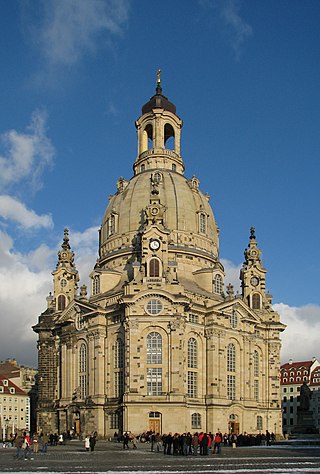
The Dresden Frauenkirche is a Lutheran church in Dresden, the capital of the German state of Saxony. Destroyed during the Allied firebombing of Dresden towards the end of World War II, the church was reconstructed between 1994 and 2005.

The bombing of Dresden was a joint British and American aerial bombing attack on the city of Dresden, the capital of the German state of Saxony, during World War II. In four raids between 13 and 15 February 1945, 772 heavy bombers of the Royal Air Force (RAF) and 527 of the United States Army Air Forces (USAAF) dropped more than 3,900 tons of high-explosive bombs and incendiary devices on the city. The bombing and the resulting firestorm destroyed more than 1,600 acres (6.5 km2) of the city centre. An estimated 22,700 to 25,000 people were killed. Three more USAAF air raids followed, two occurring on 2 March aimed at the city's railway marshalling yard and one smaller raid on 17 April aimed at industrial areas.
Quebec citizens narrowly vote (50.58% to 49.42%) in favour of remaining a province of Canada in their second referendum on national sovereignty.

Quebec is one of the thirteen provinces and territories of Canada. It is the largest province by area and the second-largest by population. Much of the population lives in urban areas along the St. Lawrence River, between the most populous city, Montreal, and the provincial capital, Quebec City. Quebec is the home of the Québécois nation. Located in Central Canada, the province shares land borders with Ontario to the west, Newfoundland and Labrador to the northeast, New Brunswick to the southeast, and a coastal border with Nunavut; in the south it borders Maine, New Hampshire, Vermont, and New York in the United States.

Within the geographical areas of Canada, the ten provinces and three territories are sub-national administrative divisions under the jurisdiction of the Canadian Constitution. In the 1867 Canadian Confederation, three provinces of British North America—New Brunswick, Nova Scotia, and the Province of Canada —united to form a federation, becoming a fully independent country over the next century. Over its history, Canada's international borders have changed several times as it has added territories and provinces, making it the world's second-largest country by area.

The 1995 Quebec referendum was the second referendum to ask voters in the predominantly French-speaking Canadian province of Quebec whether Quebec should proclaim sovereignty and become an independent country, with the condition precedent of offering a political and economic agreement to Canada.
The Troubles: Three members of the Ulster Defence Association opened fire in a crowded pub during a Halloween party, killing eight people and wounding nineteen others.

The Troubles were an ethno-nationalist conflict in Northern Ireland that lasted about 30 years from the late 1960s to 1998. Also known internationally as the Northern Ireland conflict, it is sometimes described as an "irregular war" or "low-level war". The conflict began in the late 1960s and is usually deemed to have ended with the Good Friday Agreement of 1998. Although the Troubles mostly took place in Northern Ireland, at times violence spilled over into parts of the Republic of Ireland, England and mainland Europe.

The Ulster Defence Association (UDA) is an Ulster loyalist paramilitary group in Northern Ireland. It was formed in September 1971 as an umbrella group for various loyalist groups and undertook an armed campaign of almost 24 years as one of the participants of the Troubles. Its declared goal was to defend Ulster Protestant loyalist areas and to combat Irish republicanism, particularly the Provisional Irish Republican Army (IRA). In the 1970s, uniformed UDA members openly patrolled these areas armed with batons and held large marches and rallies. Within the UDA was a group tasked with launching paramilitary attacks; it used the cover name Ulster Freedom Fighters (UFF) so that the UDA would not be outlawed. The British government proscribed the UFF as a terrorist group in November 1973, but the UDA itself was not proscribed until August 1992.
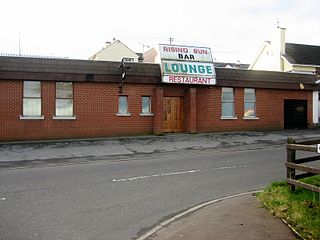
The Greysteel massacre was a mass shooting that took place on the evening of 30 October 1993 in Greysteel, County Londonderry, Northern Ireland. Members of the Ulster Defence Association (UDA), a loyalist paramilitary group, opened fire on civilians in a crowded pub during a Halloween party, killing eight and wounding nineteen. The pub was targeted because it was frequented by Catholics, though two of the victims were Protestant. The group claimed responsibility using their cover name "Ulster Freedom Fighters", saying the attack was revenge for the Shankill Road bombing by the Provisional IRA a week earlier. Four men were sentenced to life imprisonment for the massacre, but were released in 2000 under the terms of the Good Friday Agreement.
The Madrid Conference, an attempt by the international community to revive the Israeli–Palestinian peace process through negotiations, convened.
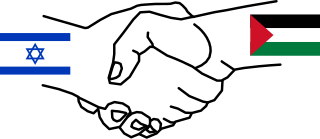
The Madrid Conference of 1991 was a peace conference, held from 30 October to 1 November 1991 in Madrid, hosted by Spain and co-sponsored by the United States and the Soviet Union. It was an attempt by the international community to revive the Israeli–Palestinian peace process through negotiations, involving Israel and the Palestinians as well as Arab countries, including Jordan, Lebanon and Syria.

The Israeli–Palestinian peace process refers to the intermittent discussions held by various parties and proposals put forward in an attempt to resolve the ongoing Israeli–Palestinian conflict. Since the 1970s, there has been a parallel effort made to find terms upon which peace can be agreed to in both the Arab–Israeli conflict and in the Palestinian–Israeli conflict. Some countries have signed peace treaties, such as the Egypt–Israel (1979) and Jordan–Israel (1994) treaties, whereas some have not yet found a mutual basis to do so.
The Israeli-Palestinian conflict: The Madrid Conference commences in an effort to revive peace negotiations between Israel and Palestine.

The Israeli–Palestinian conflict is one of the world's most enduring conflicts, beginning in the mid-20th century. Various attempts have been made to resolve the conflict as part of the Israeli–Palestinian peace process, alongside other efforts to resolve the broader Arab–Israeli conflict. Public declarations of claims to a Jewish homeland in Palestine, including the First Zionist Congress of 1897 and the Balfour Declaration of 1917, created early tensions in the region. Following World War I, the Mandate for Palestine included a binding obligation for the "establishment in Palestine of a national home for the Jewish people". Tensions grew into open sectarian conflict between Jews and Arabs. The 1947 United Nations Partition Plan for Palestine was never implemented and provoked the 1947–1949 Palestine War. The current Israeli-Palestinian status quo began following Israeli military occupation of the Palestinian territories in the 1967 Six-Day War.

The Madrid Conference of 1991 was a peace conference, held from 30 October to 1 November 1991 in Madrid, hosted by Spain and co-sponsored by the United States and the Soviet Union. It was an attempt by the international community to revive the Israeli–Palestinian peace process through negotiations, involving Israel and the Palestinians as well as Arab countries, including Jordan, Lebanon and Syria.

A peace treaty is an agreement between two or more hostile parties, usually countries or governments, which formally ends a state of war between the parties. It is different from an armistice, which is an agreement to stop hostilities; a surrender, in which an army agrees to give up arms; or a ceasefire or truce, in which the parties may agree to temporarily or permanently stop fighting. The art of negotiating a peace treaty in the modern era has been referred to by legal scholar Christine Bell as the lex pacificatoria, with a peace treaty potentially contributing to the legal framework governing the post conflict period, or jus post bellum.

Israel, officially the State of Israel, is a country in Western Asia. It is situated on the southeastern shore of the Mediterranean Sea and the northern shore of the Red Sea, and shares borders with Lebanon to the north, Syria to the northeast, Jordan to the east, and Egypt to the southwest. Israel also is bordered by the Palestinian territories of the West Bank and the Gaza Strip to the east and west, respectively. Tel Aviv is the economic and technological center of the country, while its seat of government is in its proclaimed capital of Jerusalem, although Israeli sovereignty over East Jerusalem is unrecognized internationally.

The Palestinian territories are the two regions of the former British Mandate for Palestine that have been militarily occupied by Israel since the Six-Day War of 1967, namely: the West Bank and the Gaza Strip. The International Court of Justice (ICJ) has referred to the West Bank, including East Jerusalem, as "the Occupied Palestinian Territory", and this term was used as the legal definition by the ICJ in its advisory opinion of July 2004. The term occupied Palestinian territory was used by the United Nations and other international organizations between October 1999 and December 2012 to refer to areas controlled by the Palestinian National Authority, but from 2012, when Palestine was admitted as one of its non-member observer states, the United Nations started using exclusively the name State of Palestine. The European Union (EU) also adopts the term occupied Palestinian territory, with a parallel term Palestinian Authority territories also occasionally used.
Space Shuttle Challenger lifts off for mission STS-61-A, its final successful mission.

Space Shuttle Challenger (OV-099) was a Space Shuttle orbiter manufactured by Rockwell International and operated by NASA. Named after the commanding ship of a nineteenth-century scientific expedition that traveled the world, Challenger was the second Space Shuttle orbiter to fly into space after Columbia, and launched on its maiden flight in April 1983. It was destroyed in January 1986 soon after launch in an accident that killed all seven crewmembers aboard. Initially manufactured as a test article not intended for spaceflight, it was utilized for ground testing of the Space Shuttle orbiter's structural design. However, after NASA found that their original plan to upgrade Enterprise for spaceflight would be more expensive than upgrading Challenger, the orbiter was pressed into operational service in the Space Shuttle program. Lessons learned from the first orbital flights of Columbia led to Challenger's design possessing fewer thermal protection system tiles and a lighter fuselage and wings. This led to it being 1,000 kilograms lighter than Columbia, though still 2,600 kilograms heavier than Discovery.

STS-61-A was the 22nd mission of NASA's Space Shuttle program. It was a scientific Spacelab mission, funded and directed by West Germany – hence the non-NASA designation of D-1. STS-61-A was the ninth and last successful flight of Space Shuttle Challenger. STS-61-A holds the current record for the largest crew - eight people - aboard any single spacecraft for the entire period from launch to landing.
The first democratic elections in Argentina, after seven years of military rule, are held.

The Argentine general election of 1983 was held on 30 October and marked the return of constitutional rule following the self-styled National Reorganization Process dictatorship installed in 1976. Voters fully chose the president, governors, mayors, and their respective national, province and town legislators; with a turnout of 85.6%.
A magnitude 6.6 earthquake in the Turkish provinces of Erzurum and Kars leaves 1,340 dead.
The 1983 Erzurum earthquake occurred in northeastern Turkey on 30 October 1983 at 07:12 local time. It had a moment magnitude of 6.6 and a maximum Mercalli intensity of IX (Violent). Reuters reports that about 1340 people have died and 50 settlements in the provinces of Erzurum and Kars have been demolished by the earthquake.

Turkey, officially the Republic of Türkiye, is a transcontinental country located mainly on the Anatolian Peninsula in Western Asia, with a small portion on the Balkan Peninsula in Southeast Europe. It shares borders with the Black Sea to the north; Georgia to the northeast; Armenia, Azerbaijan, and Iran to the east; Iraq to the southeast; Syria and the Mediterranean Sea to the south; the Aegean Sea to the west; and Greece and Bulgaria to the northwest. Cyprus is located off the south coast. Turks form the vast majority of the nation's population and Kurds are the largest minority. Ankara is Turkey's capital, while Istanbul is its largest city and financial centre.

Erzurum Province is a province of Turkey in the Eastern Anatolia Region of the country. The capital of the province is the city of Erzurum. It is bordered by the provinces of Kars and Ağrı to the east, Muş and Bingöl to the south, Erzincan and Bayburt to the west, Rize and Artvin to the north and Ardahan to the northeast. Okay Memiş was appointed as the governor of the province by a presidential decree on 27 October 2018. The province has an overall Turkish-majority.

Kars Province is a province of Turkey, located in the northeastern part of the country. It shares part of its closed border with Armenia. The provincial capital is the city of Kars. The provinces of Ardahan and Iğdır were until the 1990s part of Kars Province.
El Salvador and Honduras agree to put the border dispute fought over in 1969's Football War before the International Court of Justice.

El Salvador, officially the Republic of El Salvador, is a country in Central America. It is bordered on the northeast by Honduras, on the northwest by Guatemala, and on the south by the Pacific Ocean. El Salvador's capital and largest city is San Salvador. The country's population in 2021 is estimated to be 6.8 million.

Honduras, officially the Republic of Honduras, is a country in Central America. The republic of Honduras is bordered to the west by Guatemala, to the southwest by El Salvador, to the southeast by Nicaragua, to the south by the Pacific Ocean at the Gulf of Fonseca, and to the north by the Gulf of Honduras, a large inlet of the Caribbean Sea. Its capital and largest city is Tegucigalpa.
The Football War, also known as the Hundred Hours' War or 100 Hour War, was a brief military conflict fought between El Salvador and Honduras in 1969. Existing tensions between the two countries coincided with rioting during a 1970 FIFA World Cup qualifier. The war began on 14 July 1969 when the Salvadoran military launched an attack against Honduras. The Organization of American States (OAS) negotiated a cease-fire on the night of 18 July, which took full effect on 20 July. Salvadoran troops were withdrawn in early August.

The International Court of Justice, sometimes known as the World Court, is one of the six principal organs of the United Nations (UN). It settles disputes between states in accordance with international law and gives advisory opinions on international legal issues. The ICJ is the only international court that adjudicates general disputes between countries, with its rulings and opinions serving as primary sources of international law.
Prince Juan Carlos I of Spain becomes acting head of state, taking over for the country's ailing dictator, Gen. Francisco Franco.

Juan Carlos I is a member of the Spanish royal family who reigned as King of Spain from 22 November 1975 until his abdication on 19 June 2014. In Spain, since his abdication, Juan Carlos has usually been referred to as the Rey Emérito.

Francisco Franco Bahamonde was a Spanish general who led the Nationalist forces in overthrowing the Second Spanish Republic during the Spanish Civil War and thereafter ruled over Spain from 1939 to 1975 as a dictator, assuming the title Caudillo. This period in Spanish history, from the Nationalist victory to Franco's death, is commonly known as Francoist Spain or as the Francoist dictatorship.
Forty-five people are killed when Inex-Adria Aviopromet Flight 450 crashes into Suchdol, Prague, while on approach to Prague Ruzyně Airport (now Václav Havel Airport Prague) in Czechoslovakia (present-day Czech Republic).
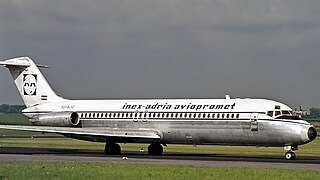
Inex-Adria Aviopromet Flight 450, JP 450, was an international charter flight from Tivat in the Socialist Federal Republic of Yugoslavia to Prague, Czechoslovakia which crashed in the Prague suburb of Suchdol on October 30, 1975, at 09:20 AM. The McDonnell Douglas DC-9-32 with 115 passengers and 5 crew onboard descended, under Instrument Meteorological Conditions (IMC), below defined Minimum Descent Altitude (MDA) during the final approach to Prague Ruzyně Airport RWY 25, entered a gorge above Vltava river, and was unable to out-climb the rising terrain. The crash killed 75 of the 120 occupants. The accident remains the worst aviation disaster on the Czech Republic soil.
Suchdol is a municipal district in Prague, Czech Republic.

Prague is the capital and largest city in the Czech Republic, and the historical capital of Bohemia. On the Vltava river, Prague is home to about 1.3 million people. The city has a temperate oceanic climate, with relatively warm summers and chilly winters.

Václav Havel Airport Prague, formerly Prague Ruzyně International Airport, is the international airport of Prague, the capital of the Czech Republic. The airport was founded in 1937, when it replaced the Kbely Airport. It was reconstructed and extended in 1956, 1968, 1997, and 2006. In 2012, it was renamed after the last president of Czechoslovakia and the first president of the Czech Republic, Václav Havel. It is located at the edge of the Prague-Ruzyně area, next to Kněževes village, 12 km (7 mi) west of the centre of Prague and 12 km (7 mi) southeast of the city of Kladno.

Czechoslovakia was a sovereign state in Central Europe, created in 1918, when it declared its independence from Austria-Hungary. In 1938, after the Munich Agreement, the Sudetenland became part of Germany, while the country lost further territories to Hungary and Poland. Between 1939 and 1945 the state ceased to exist, as Slovakia proclaimed its independence and the remaining territories in the east became part of Hungary, while in the remainder of the Czech Lands the German Protectorate of Bohemia and Moravia was proclaimed. In 1939, after the outbreak of World War II, former Czechoslovak President Edvard Beneš formed a government-in-exile and sought recognition from the Allies.

The Czech Republic, also known as Czechia, is a landlocked country in Central Europe. Historically known as Bohemia, it is bordered by Austria to the south, Germany to the west, Poland to the northeast, and Slovakia to the southeast. The Czech Republic has a hilly landscape that covers an area of 78,871 square kilometers (30,452 sq mi) with a mostly temperate continental and oceanic climate. The capital and largest city is Prague; other major cities and urban areas include Brno, Ostrava, Plzeň and Liberec.
The Bosphorus Bridge in Turkey is completed, connecting the continents of Europe and Asia over the Bosphorus for the second time.

The Bosphorus Bridge, known officially as the 15 July Martyrs Bridge and unofficially as the First Bridge, is one of the three suspension bridges spanning the Bosphorus strait in Istanbul, Turkey, thus connecting Europe and Asia. The bridge extends between Ortaköy and Beylerbeyi.
English model Jean Shrimpton wore a controversially short minidress to Derby Day at Flemington Racecourse in Melbourne, Australia – a pivotal moment of the introduction of the miniskirt to women's fashion.

Jean Rosemary Shrimpton is an English model and actress. She was an icon of Swinging London and is considered to be one of the world's first supermodels. She appeared on numerous magazine covers including Vogue, Harper's Bazaar, Vanity Fair, Glamour, Elle, Ladies' Home Journal, Newsweek, and Time. In 2009, Harper's Bazaar named Shrimpton one of the 26 best models of all time, and in 2012, Time named her one of the 100 most influential fashion icons of all time. She starred alongside Paul Jones in the film Privilege (1967).
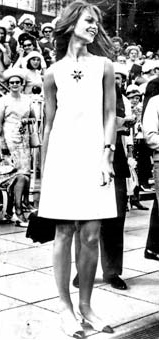
On 1965 Derby Day at Flemington Racecourse in Melbourne, Australia, English model Jean Shrimpton wore a white minidress that sparked controversy and was later described as a pivotal moment in women's fashion. The dress was made by Shrimpton's dressmaker, Colin Rolfe, and its hem was 4 in (10 cm) above the knee because he had not been supplied with enough fabric to complete their intended design.

The Victoria Derby, also known as the Penfolds Victoria Derby, is a Victoria Racing Club Group 1 Thoroughbred horse race for three-year-olds held under Set Weights conditions over a distance of 2,500 metres at Flemington Racecourse, in Melbourne, Australia scheduled annually on the first day of the Melbourne Cup Carnival. Total prize money for the race is A$2,000,000.

Flemington Racecourse is a major horse racing venue located in Melbourne, Victoria, Australia. It is most notable for hosting the Melbourne Cup, which is the world's richest handicap and the world's richest 3200-metre horse race. The racecourse is situated on low alluvial flats, next to the Maribyrnong River. The area was first used for horse racing in March 1840.

A miniskirt is a skirt with its hemline well above the knees, generally at mid-thigh level, normally no longer than 10 cm (4 in) below the buttocks; and a dress with such a hemline is called a minidress or a miniskirt dress. A micro-miniskirt or microskirt is a miniskirt with its hemline at the upper thigh, at or just below crotch or underwear level.
The Soviet Union detonates the Tsar Bomba, the most powerful explosive device ever detonated.

The Soviet Union, officially the Union of Soviet Socialist Republics (USSR), was a transcontinental country that spanned much of Eurasia from 1922 to 1991. A flagship communist state, it was nominally a federal union of fifteen national republics; in practice, both its government and its economy were highly centralized until its final years. It was a one-party state governed by the Communist Party of the Soviet Union, with the city of Moscow serving as its capital as well as that of its largest and most populous republic: the Russian SFSR. Other major cities included Leningrad, Kiev, Minsk, Tashkent, Alma-Ata, and Novosibirsk. It was the largest country in the world, covering over 22,402,200 square kilometres (8,649,500 sq mi) and spanning eleven time zones.

The Tsar Bomba, also known by the alphanumerical designation "AN602", was a thermonuclear aerial bomb, and the most powerful nuclear weapon ever created and tested. Overall, the Soviet physicist Andrei Sakharov oversaw the project at Arzamas-16, while the main work of design was by Sakharov, Viktor Adamsky, Yuri Babayev, Yuri Smirnov, and Yuri Trutnev. The project was ordered by Nikita Khrushchev in July 1961 as part of the Soviet resumption of nuclear testing after the Test Ban Moratorium, with the detonation timed to coincide with the 22nd Congress of the Communist Party of the Soviet Union.
Due to "violations of Vladimir Lenin's precepts", it is decreed that Joseph Stalin's body be removed from its place of honour inside Lenin's tomb and buried near the Kremlin Wall with a plain granite marker.

Vladimir Ilyich Ulyanov, better known as Vladimir Lenin, was a Russian revolutionary, politician, and political theorist. He served as the first and founding head of government of Soviet Russia from 1917 to 1924 and of the Soviet Union from 1922 to 1924. Under his administration, Russia, and later the Soviet Union, became a one-party socialist state governed by the Communist Party. Ideologically a Marxist, his developments to the ideology are called Leninism.

Joseph Vissarionovich Stalin was a Georgian revolutionary and Soviet political leader who led the Soviet Union from 1924 until his death in 1953. He held power as General Secretary of the Communist Party of the Soviet Union (1922–1952) and Chairman of the Council of Ministers of the Soviet Union (1941–1953). Initially governing the country as part of a collective leadership, he consolidated power to become a dictator by the 1930s. Ideologically adhering to the Leninist interpretation of Marxism, he formalised these ideas as Marxism–Leninism, while his own policies are called Stalinism.

Lenin's Mausoleum, also known as Lenin's Tomb, situated on Red Square in the centre of Moscow, is a mausoleum that serves as the resting place of Soviet leader Vladimir Lenin. His preserved body has been on public display there since shortly after his death in 1924, with rare exceptions in wartime. Alexey Shchusev's granite structure incorporates some elements from ancient mausoleums, such as the Step Pyramid, the Tomb of Cyrus the Great and, to some degree, the Temple of the Inscriptions.
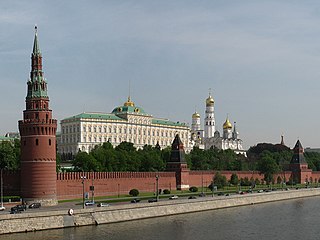
The Moscow Kremlin Wall is a defensive wall that surrounds the Moscow Kremlin, recognisable by the characteristic notches and its Kremlin towers. The original walls were likely a simple wooden fence with guard towers built in 1156. The Kremlin walls, like many cathedrals in the Kremlin, were built by Italian architects.
At the Royal Infirmary of Edinburgh, Michael Woodruff performed the first successful kidney transplantation in the United Kingdom.

The Royal Infirmary of Edinburgh, or RIE, often known as the Edinburgh Royal Infirmary, or ERI, was established in 1729 and is the oldest voluntary hospital in Scotland. The new buildings of 1879 were claimed to be the largest voluntary hospital in the United Kingdom, and later on, the Empire. The hospital moved to a new 900 bed site in 2003 in Little France. It is the site of clinical medicine teaching as well as a teaching hospital for the University of Edinburgh Medical School. In 1960, the first successful kidney transplant performed in the UK was at this hospital. In 1964, the world's first coronary care unit was established at the hospital. It is the only site for liver, pancreas and pancreatic islet cell transplantation and one of two sites for kidney transplantation in Scotland. In 2012, the Emergency Department had 113,000 patient attendances, the highest number in Scotland. It is managed by NHS Lothian.
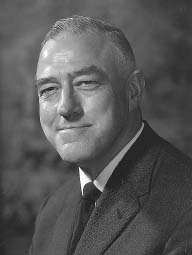
Sir Michael Francis Addison Woodruff, was an English surgeon and scientist principally remembered for his research into organ transplantation. Though born in London, Woodruff spent his youth in Australia, where he earned degrees in electrical engineering and medicine. Having completed his studies shortly after the outbreak of World War II, he joined the Australian Army Medical Corps, but was soon captured by Japanese forces and imprisoned in the Changi Prison Camp. While there, he devised an ingenious method of extracting nutrients from agricultural wastes to prevent malnutrition among his fellow POWs.
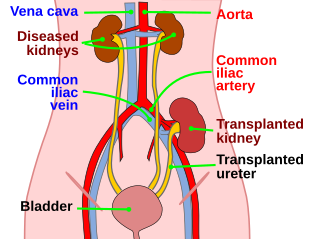
Kidney transplant or renal transplant is the organ transplant of a kidney into a patient with end-stage kidney disease (ESRD). Kidney transplant is typically classified as deceased-donor or living-donor transplantation depending on the source of the donor organ. Living-donor kidney transplants are further characterized as genetically related (living-related) or non-related (living-unrelated) transplants, depending on whether a biological relationship exists between the donor and recipient.
Piedmont Airlines Flight 349 crashes on approach to Charlottesville–Albemarle Airport in Albemarle County, Virginia, killing 26 of the 27 on board.
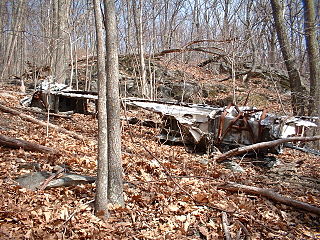
On October 30, 1959, Piedmont Airlines Flight 349, a Douglas DC-3, crashed on Bucks Elbow Mountain near Crozet, Virginia, killing the crew of three and all but one of its twenty-four passengers. The sole survivor, Ernest P. Bradley was seriously injured and lay on the ground near the wreckage, still strapped in his seat.

Charlottesville–Albemarle Airport is eight miles north of Charlottesville, in Albemarle County, Virginia, United States. It opened in 1955 and serves the Charlottesville/Albemarle region with non-stop flights to six major cities on three airlines' subsidiaries. CHO underwent major construction in summer 2006; an 800-foot runway extension began in summer 2010 and was completed in December 2012.

Albemarle County is a county located in the Piedmont region of the Commonwealth of Virginia. Its county seat is Charlottesville, which is an independent city and enclave entirely surrounded by the county. Albemarle County is part of the Charlottesville Metropolitan Statistical Area. As of the 2020 census, the population was 112,395.
Hungarian Revolution: The government recognizes the new workers' councils. Army officer Béla Király leads an attack on the Communist Party headquarters.
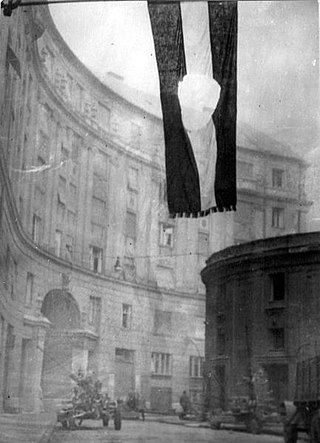
The Hungarian Revolution of 1956, also known as the Hungarian Uprising, was a countrywide revolution against the government of the Hungarian People's Republic (1949–1989) and the Hungarian domestic policies imposed by the Soviet Union (USSR).

Dr. Béla Király was a Hungarian army officer before, during, and after World War II. After the war, he was sentenced to life in prison under the Soviet-allied regime, but was later released. After his release, he commanded the National Guard in the 1956 Hungarian Revolution. He then fled to the United States, where he became an academic historian. He returned to Hungary after the collapse of the Soviet Bloc and was elected a member of Hungarian Parliament.
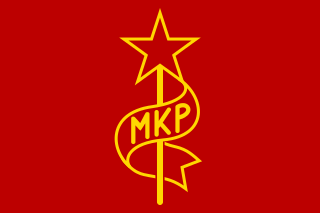
The Hungarian Communist Party, known earlier as the Party of Communists in Hungary, was a communist party in Hungary that existed during the interwar period and briefly after World War II.
President Eisenhower approves the top-secret document NSC 162/2 concerning the maintenance of a strong nuclear deterrent force against the Soviet Union.

Dwight David "Ike" Eisenhower was an American military officer and statesman who served as the 34th president of the United States from 1953 to 1961. During World War II, he served as Supreme Commander of the Allied Expeditionary Force in Europe and achieved the five-star rank of General of the Army. He planned and supervised the invasion of North Africa in Operation Torch in 1942–1943 as well as the invasion of Normandy (D-Day) from the Western Front in 1944–1945.
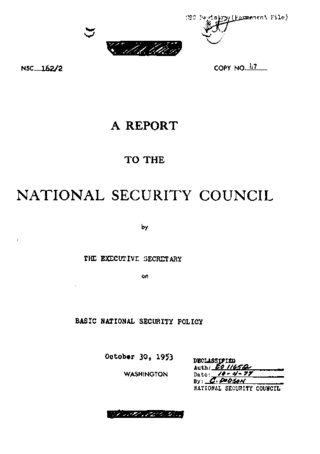
NSC 162/2 was a policy paper of the United States National Security Council approved by President Dwight D. Eisenhower on 30 October 1953 which defined the Cold War national security policy during the Eisenhower administration. NSC 162/2 was based upon NSC 162, which was the final synthesis of the task force reports of Project Solarium. On 7 January 1955, NSC 162/2 was superseded by NSC 5501.
A luzzu fishing boat overloaded with passengers capsizes and sinks in the Gozo Channel off Qala, Gozo, Malta, killing 23 of the 27 people on board.

A luzzu is a traditional fishing boat from the Maltese islands. This type of boat developed in the early 20th century, although it is very similar to much older traditional Maltese boats such as the ferilla. They are usually painted in bright colours, while the bow has a pair of eyes.
The 1948 Gozo luzzu disaster occurred on 30 October 1948 when a luzzu fishing boat carrying passengers from Marfa, Malta, to Mġarr, Gozo, capsized and sank in rough seas off Qala, killing 23 of the 27 people on board. Inquiries held after the accident determined that the boat had been overloaded as it was carrying around double its capacity.
The Gozo Channel is short stretch of Mediterranean Sea separating the Maltese island of Gozo from the northern tip of Malta.

Qala is an administrative unit of Malta, on the island of Gozo, with a population of 1,929 as of September 2019. Nearby is Ħondoq ir-Rummien, a coastline with salt pans and caves.

Gozo, Maltese: Għawdex and in antiquity known as Gaulos, is an island in the Maltese archipelago in the Mediterranean Sea. The island is part of the Republic of Malta. After the island of Malta itself, it is the second-largest island in the archipelago.

The Crown Colony of the Island of Malta and its Dependencies was the British colony in the Maltese islands, today the modern Republic of Malta. It was established when the Malta Protectorate was transformed into a British Crown colony in 1813, and this was confirmed by the Treaty of Paris in 1814.
The General Agreement on Tariffs and Trade (GATT), the foundation of the World Trade Organization (WTO), is founded.
The General Agreement on Tariffs and Trade (GATT) is a legal agreement between many countries, whose overall purpose was to promote international trade by reducing or eliminating trade barriers such as tariffs or quotas. According to its preamble, its purpose was the "substantial reduction of tariffs and other trade barriers and the elimination of preferences, on a reciprocal and mutually advantageous basis."

The World Trade Organization (WTO) is an intergovernmental organization that regulates and facilitates international trade. With effective cooperation in the United Nations System, governments use the organization to establish, revise, and enforce the rules that govern international trade. It officially commenced operations on 1 January 1995, pursuant to the 1994 Marrakesh Agreement, thus replacing the General Agreement on Tariffs and Trade (GATT) that had been established in 1948. The WTO is the world's largest international economic organization, with 164 member states representing over 98% of global trade and global GDP.
Jackie Robinson of the Kansas City Monarchs signs a contract for the Brooklyn Dodgers, breaking the baseball color line.
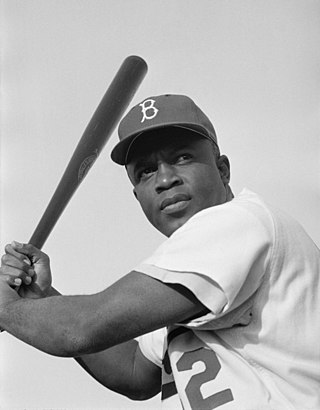
Jack Roosevelt Robinson was an American professional baseball player who became the first African American to play in Major League Baseball (MLB) in the modern era. Robinson broke the baseball color line when he started at first base for the Brooklyn Dodgers on April 15, 1947. When the Dodgers signed Robinson, it heralded the end of racial segregation in professional baseball that had relegated black players to the Negro leagues since the 1880s. Robinson was inducted into the Baseball Hall of Fame in 1962.

The Kansas City Monarchs were the longest-running franchise in the history of baseball's Negro leagues. Operating in Kansas City, Missouri, and owned by J. L. Wilkinson, they were charter members of the Negro National League from 1920 to 1930. J. L. Wilkinson was the first Caucasian owner at the time of the establishment of the team. In 1930, the Monarchs became the first professional baseball team to use a portable lighting system which was transported from game to game in trucks to play games at night, five years before any major league team did. The Monarchs won ten league championships before integration, and triumphed in the first Negro League World Series in 1924. The Monarchs had only one season in which they did not have a winning record. The team produced more major league players than any other Negro league franchise. It was disbanded in 1965.

The Brooklyn Dodgers were a Major League Baseball team founded in 1884 as a member of the American Association before joining the National League in 1890. They remained in Brooklyn until 1957, after which the club moved to Los Angeles, California, where it continues its history as the Los Angeles Dodgers. The team moved west at the same time as its longtime rival, the New York Giants, relocated to San Francisco in northern California as the San Francisco Giants.
Holocaust: Anne and Margot Frank are deported from Auschwitz to the Bergen-Belsen concentration camp, where they die from disease the following year, shortly before the end of WWII.
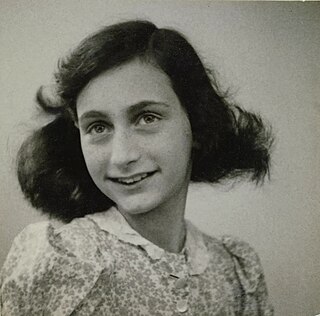
Annelies Marie "Anne" Frank was a Jewish girl who kept a diary in which she documented life in hiding under Nazi persecution. She is a celebrated diarist who described everyday life from her family hiding place in an Amsterdam attic. One of the most-discussed Jewish victims of the Holocaust, she gained fame posthumously with the 1947 publication of The Diary of a Young Girl, in which she documents her life in hiding from 1942 to 1944, during the German occupation of the Netherlands in World War II. It is one of the world's best-known books and has been the basis for several plays and films.

Margot Betti Frank was the elder daughter of Otto Frank and Edith Frank and the elder sister of Anne Frank. Margot's deportation order from the Gestapo hastened the Frank family into hiding. According to the diary of her younger sister, Anne, Margot kept a diary of her own, but no trace of it has ever been found. She died in Bergen-Belsen concentration camp.

Auschwitz concentration camp was a complex of over 40 concentration and extermination camps operated by Nazi Germany in occupied Poland during World War II and the Holocaust. It consisted of Auschwitz I, the main camp (Stammlager) in Oświęcim; Auschwitz II-Birkenau, a concentration and extermination camp with gas chambers; Auschwitz III-Monowitz, a labor camp for the chemical conglomerate IG Farben; and dozens of subcamps. The camps became a major site of the Nazis' final solution to the Jewish question.
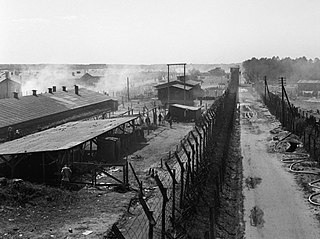
Bergen-Belsen [ˈbɛʁɡn̩.bɛlsn̩], or Belsen, was a Nazi concentration camp in what is today Lower Saxony in northern Germany, southwest of the town of Bergen near Celle. Originally established as a prisoner of war camp, in 1943, parts of it became a concentration camp. Initially this was an "exchange camp", where Jewish hostages were held with the intention of exchanging them for German prisoners of war held overseas. The camp was later expanded to accommodate Jews from other concentration camps.
World War II: Lt. Tony Fasson and Able Seaman Colin Grazier drown while taking code books from the sinking German submarine U-559.

World War II or the Second World War, often abbreviated as WWII or WW2, was a world war that lasted from 1939 to 1945. It involved the vast majority of the world's countries—including all of the great powers—forming two opposing military alliances: the Allies and the Axis powers. World War II was a total war that directly involved more than 100 million personnel from more than 30 countries.
Lieutenant Francis Anthony Blair Fasson,, known as Tony Fasson, was a Royal Navy officer. He was posthumously awarded the George Cross "for outstanding bravery and steadfast devotion to duty in the face of danger" when on 30 October 1942 in action in the Mediterranean Sea he captured codebooks vital for the breaking of the German naval "Shark" Enigma cipher from the sinking German submarine U-559.

Colin Grazier, GC was a sailor in the Royal Navy who was posthumously awarded the George Cross for the "outstanding bravery and steadfast devotion to duty in the face of danger" which he displayed on 30 October 1942 in action in the eastern Mediterranean when capturing codebooks vital for the breaking of the German naval "Shark" Enigma cipher from the sinking German submarine U-559.
German submarine U-559 was a Type VIIC U-boat built for Nazi Germany's Kriegsmarine for service during World War II.
President Roosevelt approves $1 billion in Lend-Lease aid to the Allied nations.

Franklin Delano Roosevelt, often referred to by his initials FDR, was an American politician and attorney who served as the 32nd president of the United States from 1933 until his death in 1945. As the leader of the Democratic Party, he won a record four presidential elections and became a central figure in world events during the first half of the 20th century. Roosevelt directed the federal government during most of the Great Depression, implementing his New Deal domestic agenda in response to the worst economic crisis in U.S. history. He built the New Deal Coalition, which defined modern liberalism in the United States throughout the middle third of the 20th century. His third and fourth terms were dominated by World War II, which ended in victory shortly after he died in office.
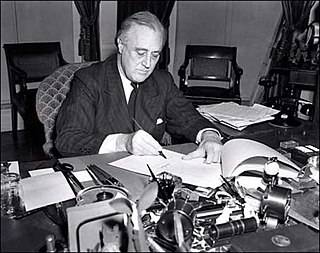
Lend-Lease, formally the Lend-Lease Act and introduced as An Act to Promote the Defense of the United States, was a policy under which the United States supplied the United Kingdom, the Soviet Union and other Allied nations with food, oil, and materiel between 1941 and 1945. It was given on the basis that such help was essential for the defense of the United States; this aid included warships and warplanes, along with other weaponry. It was signed into law on March 11, 1941, and ended on September 20, 1945. In general, the aid was free, although some hardware were returned after the war. Canada, already a belligerent, supplemented its aid to Great Britain with a similar, smaller program called Mutual Aid.
Holocaust: Fifteen hundred Jews from Pidhaytsi are sent by Nazis to Bełżec extermination camp.

The Holocaust, also known as the Shoah, was the genocide of European Jews during World War II. Between 1941 and 1945, Nazi Germany and its collaborators systematically murdered some six million Jews across German-occupied Europe; around two-thirds of Europe's Jewish population. The murders were carried out in pogroms and mass shootings; by a policy of extermination through labor in concentration camps; and in gas chambers and gas vans in German extermination camps, chiefly Auschwitz-Birkenau, Bełżec, Chełmno, Majdanek, Sobibór, and Treblinka in occupied Poland.
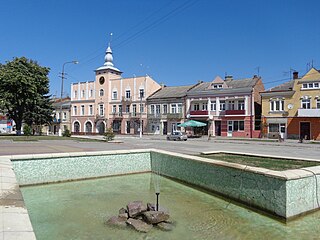
Pidhaitsi is a small city in Ternopil Raion, Ternopil Oblast (province) of western Ukraine. It is located ca. 15.5 mi south of Berezhany, 43.5 mi from Ternopil and ca. 62 mi south-east of Lviv. In 1939 Pidhaitsi obtained the formal status of a city. It hosts the administration of Pidhaitsi urban hromada, one of the hromadas of Ukraine. Population: 2,661.
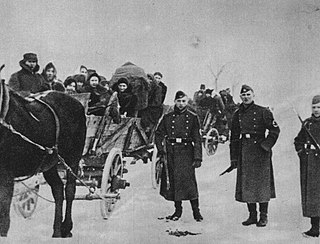
Belzec was a Nazi German extermination camp built by the SS for the purpose of implementing the secretive Operation Reinhard, the plan to murder all Polish Jews, a major part of the "Final Solution" which in total entailed the murder of about 6 million Jews in the Holocaust. The camp operated from 17 March 1942 to the end of June 1943. It was situated about 500 m (1,600 ft) south of the local railroad station of Bełżec, in the new Lublin District of the General Government territory of German-occupied Poland. The burning of exhumed corpses on five open-air grids and bone crushing continued until March 1943.
CBS Radio broadcast the radio drama The War of the Worlds, causing panic among some listeners who believed that an actual Martian invasion was in progress.
CBS Radio was a radio broadcasting company and radio network operator owned by CBS Corporation and founded in 1928, with consolidated radio station groups owned by CBS and Westinghouse Broadcasting/Group W since the 1920s, and Infinity Broadcasting since the 1970s. The broadcasting company was sold to Entercom on November 17, 2017.

Radio drama is a dramatized, purely acoustic performance. With no visual component, radio drama depends on dialogue, music and sound effects to help the listener imagine the characters and story: "It is auditory in the physical dimension but equally powerful as a visual force in the psychological dimension." Radio drama includes plays specifically written for radio, docudrama, dramatized works of fiction, as well as plays originally written for the theatre, including musical theatre, and opera.

"The War of the Worlds" was a Halloween episode of the radio series The Mercury Theatre on the Air directed and narrated by Orson Welles as an adaptation of H. G. Wells's novel The War of the Worlds (1898). It was performed and broadcast live at 8 pm ET on October 30, 1938 over the CBS Radio Network. The episode is famous for inciting a panic by convincing some members of the listening audience that a Martian invasion was taking place, though the scale of panic is disputed, as the program had relatively few listeners.
Orson Welles broadcasts a radio adaptation of H. G. Wells's The War of the Worlds, causing a massive panic in some of the audience in the United States.

George Orson Welles was an American actor, director, producer, and screenwriter, known for his innovative work in film, radio and theatre. He is considered to be among the greatest and most influential filmmakers of all time.

"The War of the Worlds" was a Halloween episode of the radio series The Mercury Theatre on the Air directed and narrated by Orson Welles as an adaptation of H. G. Wells's novel The War of the Worlds (1898). It was performed and broadcast live at 8 pm ET on October 30, 1938 over the CBS Radio Network. The episode is famous for inciting a panic by convincing some members of the listening audience that a Martian invasion was taking place, though the scale of panic is disputed, as the program had relatively few listeners.
The Communist Party of Australia is founded in Sydney.

The Communist Party of Australia (CPA), known as the Australian Communist Party (ACP) from 1944 to 1951, was an Australian political party founded in 1920. The party existed until roughly 1991, with its membership and influence having been in a steady decline since its peak in 1945. Like most communist parties in the west, the party was heavily involved in the labour movement and the trade unions. Its membership, popularity and influence grew significantly during most of the interwar period before reaching its climax in 1945, where the party achieved a membership of slightly above 22,000 members. Although the party did not achieve a federal MP, Fred Paterson was elected to the Parliament of Queensland at the 1944 state election. He won re-election in 1947 before the seat was abolished. The party also held office in over a dozen local government areas across New South Wales and Queensland.
The Armistice of Mudros was signed in Greece, ending hostilities in the Middle Eastern theatre of World War I and paving the way for the occupation of Istanbul and the subsequent partition of the Ottoman Empire.

Concluded on 30 October 1918 and taking effect at noon the next day, the Armistice of Mudros ended hostilities in the Middle Eastern theatre between the Ottoman Empire and the Allies of World War I. It was signed by the Ottoman Minister of Marine Affairs Rauf Bey and British Admiral Somerset Arthur Gough-Calthorpe, on board HMS Agamemnon in Moudros harbor on the Greek island of Lemnos.

The Middle Eastern theatre of World War I saw action between 29 October 1914 and 30 October 1918. The combatants were, on one side, the Ottoman Empire, with some assistance from the other Central Powers; and on the other side, the British, the Russians and the French from among the Allied Powers. There were five main campaigns: the Sinai and Palestine Campaign, the Mesopotamian Campaign, the Caucasus Campaign, the Persian Campaign, and the Gallipoli Campaign. There were also several minor campaigns: Arab Campaign, and South Arabia Campaign.

The occupation of Istanbul, the capital of the Ottoman Empire, by British, French, Italian, and Greek forces, took place in accordance with the Armistice of Mudros, which ended Ottoman participation in the First World War. The first French troops entered the city on 12 November 1918, followed by British troops the next day. The Italian troops landed in Galata on 7 February 1919.

The partition of the Ottoman Empire was a geopolitical event that occurred after World War I and the occupation of Constantinople by British, French and Italian troops in November 1918. The partitioning was planned in several agreements made by the Allied Powers early in the course of World War I, notably the Sykes–Picot Agreement, after the Ottoman Empire had joined Germany to form the Ottoman–German Alliance. The huge conglomeration of territories and peoples that formerly comprised the Ottoman Empire was divided into several new states. The Ottoman Empire had been the leading Islamic state in geopolitical, cultural and ideological terms. The partitioning of the Ottoman Empire after the war led to the domination of the Middle East by Western powers such as Britain and France, and saw the creation of the modern Arab world and the Republic of Turkey. Resistance to the influence of these powers came from the Turkish National Movement but did not become widespread in the other post-Ottoman states until the period of rapid decolonization after World War II.
World War I: The Ottoman Empire signs the Armistice of Mudros with the Allies.

World War I or the First World War, often abbreviated as WWI or WW1, and referred to by some Anglophone authors as the "Great War" or the "War to End All Wars", was a global conflict which lasted from 1914 to 1918, and is considered one of the deadliest conflicts in history. Belligerents included much of Europe, the Russian Empire, the United States, and the Ottoman Empire, with fighting occurring throughout Europe, the Middle East, Africa, the Pacific, and parts of Asia. An estimated 9 million soldiers were killed in combat, plus another 23 million wounded, while 5 million civilians died as a result of military action, hunger, and disease. Millions more died in genocides within the Ottoman Empire and in the 1918 influenza pandemic, which was exacerbated by the movement of combatants during the war.

Concluded on 30 October 1918 and taking effect at noon the next day, the Armistice of Mudros ended hostilities in the Middle Eastern theatre between the Ottoman Empire and the Allies of World War I. It was signed by the Ottoman Minister of Marine Affairs Rauf Bey and British Admiral Somerset Arthur Gough-Calthorpe, on board HMS Agamemnon in Moudros harbor on the Greek island of Lemnos.
World War I: Lands of the Crown of Saint Stephen, a state union of Kingdom of Hungary and Triune Kingdom of Croatia, Slavonia and Dalmatia is abolished with decisions of Croatian and Hungarian parliaments

The Lands of the Crown of Saint Stephen, informally Transleithania were the Hungarian territories of Austria-Hungary, throughout the latter's entire existence, and which disintegrated following its dissolution. The name referenced the historic coronation crown of Hungary, known as the Crown of Saint Stephen of Hungary, which had a symbolic importance to the Kingdom of Hungary.

The Kingdom of Hungary was a monarchy in Central Europe that existed for nearly a millennium, from the Middle Ages into the 20th century. The Principality of Hungary emerged as a Christian kingdom upon the coronation of the first king Stephen I at Esztergom around the year 1000; his family led the monarchy for 300 years. By the 12th century, the kingdom became a European middle power within the Western world.
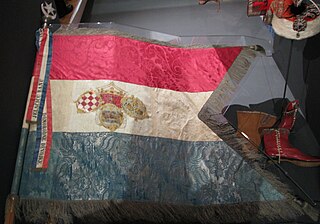
The Triune Kingdom or Triune Kingdom of Croatia, Slavonia and Dalmatia was the concept—advocated by the leaders of the 19th-century Croatian national revival—of a united kingdom between Croatia, Slavonia and Dalmatia, which were already within the Austrian Empire under one king, who was also the Emperor of Austria, but were politically and administratively separate entities. This concept had roots in the high medieval period, as a successor to the historical Kingdom of Croatia which was made up of those regions.

The Croatian Parliament or the Sabor is the unicameral legislature of the Republic of Croatia. Under the terms of the Croatian Constitution, the Sabor represents the people and is vested with legislative power. The Sabor is composed of 151 members elected to a four-year term on the basis of direct, universal and equal suffrage by secret ballot. Seats are allocated according to the Croatian Parliament electoral districts: 140 members of the parliament are elected in multi-seat constituencies. An additional three seats are reserved for the diaspora and Croats in Bosnia and Herzegovina, while national minorities have eight places reserved in parliament. The Sabor is presided over by a Speaker, who is assisted by at least one deputy speaker.

The National Assembly is the parliament of Hungary. The unicameral body consists of 199 members elected to 4-year terms. Election of members is done using a semi-proportional representation: a mixed-member majoritarian representation with partial compensation via transfer votes and mixed single vote; involving single-member districts and one list vote; parties must win at least 5% of the popular vote in order to gain list seats assembly. The Assembly includes 25 standing committees to debate and report on introduced bills and to supervise the activities of the ministers. The Constitutional Court of Hungary has the right to challenge legislation on the grounds of constitutionality. The assembly has met in the Hungarian Parliament Building in Budapest since 1902.
Czar Nicholas II issues the October Manifesto, granting the Russian peoples basic civil liberties and the right to form a duma. (October 17 in the Julian calendar)

Nicholas II or Nikolai II Alexandrovich Romanov, known in the Russian Orthodox Church as Saint Nicholas the Passion-Bearer, was the last Emperor of Russia, King of Congress Poland and Grand Duke of Finland, ruling from 1 November 1894 until his abdication on 15 March 1917. During his reign, Nicholas gave support to the economic and political reforms promoted by his prime ministers, Sergei Witte and Pyotr Stolypin. He advocated modernization based on foreign loans and close ties with France, but resisted giving the new parliament major roles. Ultimately, progress was undermined by Nicholas's commitment to autocratic rule, strong aristocratic opposition and defeats sustained by the Russian military in the Russo-Japanese War and World War I. By March 1917, public support for Nicholas had collapsed and he was forced to abdicate the throne, thereby ending the Romanov dynasty's 304-year rule of Russia (1613–1917).

The October Manifesto, officially "The Manifesto on the Improvement of the State Order", is a document that served as a precursor to the Russian Empire's first Constitution, which was adopted the following year in 1906. The Manifesto was issued by Tsar Nicholas II, under the influence of Sergei Witte (1849–1915), on 30 October [O.S. 17 October] 1905 as a response to the Russian Revolution of 1905. Nicholas strenuously resisted these ideas, but gave in after his first choice to head a military dictatorship, Grand Duke Nicholas, threatened to shoot himself in the head if the Tsar did not accept Witte's suggestion. Nicholas reluctantly agreed, and issued what became known as the October Manifesto, promising basic civil rights and an elected parliament called the Duma, without whose approval no laws were to be enacted in Russia in the future. According to his memoirs, Witte did not force the Tsar to sign the October Manifesto, which was proclaimed in all the churches.
King Lobengula of Matabeleland granted the Rudd Concession to agents of Cecil Rhodes, leading to the creation of the British South Africa Company.

Lobengula Khumalo was the second and last official king of the Northern Ndebele people. Both names in the Ndebele language mean "the men of the long shields", a reference to the Ndebele warriors' use of the Nguni shield.

Matabeleland is a region located in southwestern Zimbabwe that is divided into three provinces: Matabeleland North, Bulawayo, and Matabeleland South. These provinces are in the west and south-west of Zimbabwe, between the Limpopo and Zambezi rivers and are further separated from Midlands by the Shangani River in central Zimbabwe. The region is named after its inhabitants, the Ndebele people who were called "Amatabele"(people with long spears - Mzilikazi 's group of people who were escaping the Mfecani wars). Other ethnic groups who inhabit parts of Matabeleland include the Tonga, Bakalanga, Venda, Nambya, Khoisan, Xhosa, Sotho, Tswana, and Tsonga. The population of Matabeleland is just over 20% of the Zimbabwe's total.
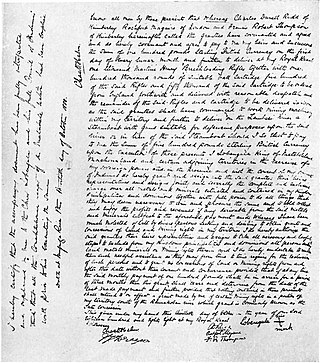
The Rudd Concession, a written concession for exclusive mining rights in Matabeleland, Mashonaland and other adjoining territories in what is today Zimbabwe, was granted by King Lobengula of Matabeleland to Charles Rudd, James Rochfort Maguire and Francis Thompson, three agents acting on behalf of the South African-based politician and businessman Cecil Rhodes, on 30 October 1888. Despite Lobengula's retrospective attempts to disavow it, it proved the foundation for the royal charter granted by the United Kingdom to Rhodes's British South Africa Company in October 1889, and thereafter for the Pioneer Column's occupation of Mashonaland in 1890, which marked the beginning of white settlement, administration and development in the country that eventually became Rhodesia, named after Rhodes, in 1895.

Cecil John Rhodes was a British mining magnate and politician in southern Africa who served as Prime Minister of the Cape Colony from 1890 to 1896.
The British South Africa Company was chartered in 1889 following the amalgamation of Cecil Rhodes' Central Search Association and the London-based Exploring Company Ltd, which had originally competed to capitalize on the expected mineral wealth of Mashonaland but united because of common economic interests and to secure British government backing. The company received a Royal Charter modelled on that of the British East India Company. Its first directors included The 2nd Duke of Abercorn, Rhodes himself, and the South African financier Alfred Beit. Rhodes hoped BSAC would promote colonisation and economic exploitation across much of south-central Africa, as part of the "Scramble for Africa". However, his main focus was south of the Zambezi, in Mashonaland and the coastal areas to its east, from which he believed the Portuguese could be removed by payment or force, and in the Transvaal, which he hoped would return to British control.
The Rudd Concession is granted by Matabeleland to agents of Cecil Rhodes.

The Rudd Concession, a written concession for exclusive mining rights in Matabeleland, Mashonaland and other adjoining territories in what is today Zimbabwe, was granted by King Lobengula of Matabeleland to Charles Rudd, James Rochfort Maguire and Francis Thompson, three agents acting on behalf of the South African-based politician and businessman Cecil Rhodes, on 30 October 1888. Despite Lobengula's retrospective attempts to disavow it, it proved the foundation for the royal charter granted by the United Kingdom to Rhodes's British South Africa Company in October 1889, and thereafter for the Pioneer Column's occupation of Mashonaland in 1890, which marked the beginning of white settlement, administration and development in the country that eventually became Rhodesia, named after Rhodes, in 1895.

Matabeleland is a region located in southwestern Zimbabwe that is divided into three provinces: Matabeleland North, Bulawayo, and Matabeleland South. These provinces are in the west and south-west of Zimbabwe, between the Limpopo and Zambezi rivers and are further separated from Midlands by the Shangani River in central Zimbabwe. The region is named after its inhabitants, the Ndebele people who were called "Amatabele"(people with long spears - Mzilikazi 's group of people who were escaping the Mfecani wars). Other ethnic groups who inhabit parts of Matabeleland include the Tonga, Bakalanga, Venda, Nambya, Khoisan, Xhosa, Sotho, Tswana, and Tsonga. The population of Matabeleland is just over 20% of the Zimbabwe's total.

Cecil John Rhodes was a British mining magnate and politician in southern Africa who served as Prime Minister of the Cape Colony from 1890 to 1896.
The Treaty of Vienna is signed, by which Denmark relinquishes one province each to Prussia and Austria.

The Treaty of Vienna was a peace treaty signed on 30 October 1864 in Vienna between the Austrian Empire, the Kingdom of Prussia, and the Kingdom of Denmark. The treaty ended the Second War of Schleswig. Denmark ceded the Duchy of Schleswig the Duchy of Holstein and the Duchy of Lauenburg. They would be jointly governed by Prussia and Austria in a condominium. A subsequent treaty between Austria and Prussia on August 14, 1865 known as the Gastein Convention provided that Prussia would administer Schleswig and Austria would similarly govern Holstein. Austria also sold its rights over Lauenburg to Prussia. Disputes over the administration of Schleswig and Holstein would lead to the 1866 Austro-Prussian War. When that war was over, Prussia annexed Schleswig and Holstein.

Prussia was a German state on the southeast coast of the Baltic Sea. It formed the German Empire under Prussian rule when it united the German states in 1871. It was de facto dissolved by an emergency decree transferring powers of the Prussian government to German Chancellor Franz von Papen in 1932 and de jure by an Allied decree in 1947. For centuries, the House of Hohenzollern ruled Prussia, expanding its size with the Prussian Army. Prussia, with its capital at Königsberg and then, when it became the Kingdom of Prussia in 1701, Berlin, decisively shaped the history of Germany.

The Republic of Austria, commonly just Austria, is a country in the southern part of Central Europe, lying in the Eastern Alps. It is a federation of nine states, one of which is the capital, Vienna, the most populous city and state. A landlocked country, Austria is bordered by Germany to the northwest, the Czech Republic to the north, Slovakia to the northeast, Hungary to the east, Slovenia and Italy to the south, and Switzerland and Liechtenstein to the west. The country occupies an area of 83,871 km2 (32,383 sq mi) and has a population of 9 million.
Seventeen-year-old Vilhelm, Prince of Denmark, arrived in Athens to become King George I of Greece (pictured).
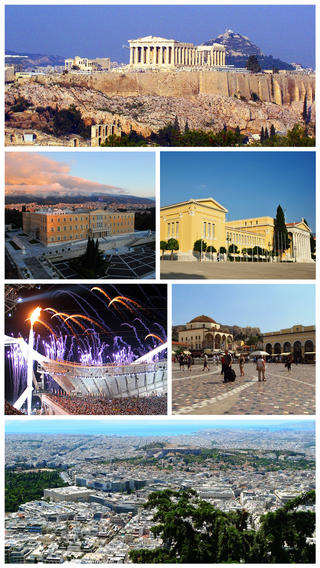
Athens is both the capital and largest city of Greece. With a population close to four million, it is also the seventh largest city in the European Union. Athens dominates and is the capital of the Attica region and is one of the world's oldest cities, with its recorded history spanning over 3,400 years and its earliest human presence beginning somewhere between the 11th and 7th millennia BC.

George I was King of Greece from 30 March 1863 until his assassination in 1913.
Danish Prince Vilhelm arrives in Athens to assume his throne as George I, King of the Hellenes.

George I was King of Greece from 30 March 1863 until his assassination in 1913.
Nat Turner is arrested for leading the bloodiest slave rebellion in United States history.
Nat Turner's Rebellion, also known as the Southampton Insurrection, was a rebellion of enslaved Virginians that took place in Southampton County, Virginia, in August 1831. Led by Nat Turner, the rebels killed between 55 and 65 people, at least 51 of whom were White. The rebellion was effectively suppressed within a few days, at Belmont Plantation on the morning of August 23, but Turner survived in hiding for more than two months afterward.
Simón Bolívar becomes President of the Third Republic of Venezuela.

Simón José Antonio de la Santísima Trinidad Bolívar y Palacios was a Venezuelan military and political leader who led what are currently the countries of Colombia, Venezuela, Ecuador, Peru, Panama and Bolivia to independence from the Spanish Empire. He is known colloquially as El Libertador, or the Liberator of America.

The Third Republic of Venezuela is the reestablished Republic of Venezuela declared by Simón Bolívar in the year 1817, during the Venezuelan War of Independence. The beginning of the Third Republic of Venezuela is attributed to the period after the Guayana campaign, during which the republicans restored democratic institutions in Angostura. The Republic ended after the Congress of Angostura of 1819 decreed the union of Venezuela with New Granada, to form the republic of Gran Colombia.
War of the Fourth Coalition: Believing that they were outnumbered, the German garrison at Stettin surrendered to a much smaller French force without a fight.

The Fourth Coalition fought against Napoleon's French Empire and were defeated in a war spanning 1806–1807. The main coalition partners were Prussia and Russia with Saxony, Sweden, and Great Britain also contributing. Excluding Prussia, some members of the coalition had previously been fighting France as part of the Third Coalition, and there was no intervening period of general peace. On 9 October 1806, Prussia declared war on France and joined a renewed coalition, fearing the rise in French power after the defeat of Austria and establishment of the French-sponsored Confederation of the Rhine in addition to having learned of French plans to cede Prussian-desired Hannover to Britain in exchange for peace. Prussia and Russia mobilized for a fresh campaign with Prussia massing troops in Saxony.

Szczecin is the capital and largest city of the West Pomeranian Voivodeship in northwestern Poland. Located near the Baltic Sea and the German border, it is a major seaport and Poland's seventh-largest city. As of December 2021, the population was 395,513.
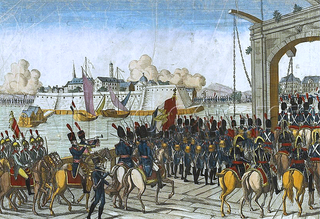
In the Capitulation of Stettin on 29–30 October 1806, Lieutenant General Friedrich Gisbert Wilhelm von Romberg surrendered the garrison and fortress to a much smaller French light cavalry brigade led by General of Brigade Antoine Lasalle. This event was one of a number of surrenders by demoralized Prussian soldiers to equal or inferior French forces after their disastrous defeat at the Battle of Jena-Auerstedt on 14 October. Stettin, now Szczecin, Poland, is a port city on the Oder River near the Baltic Sea, about 120 kilometres (75 mi) northeast of Berlin.
War of the Fourth Coalition: Convinced that he is facing a much larger force, Prussian General von Romberg, commanding 5,300 men, surrenders the city of Stettin to 800 French soldiers.

The Fourth Coalition fought against Napoleon's French Empire and were defeated in a war spanning 1806–1807. The main coalition partners were Prussia and Russia with Saxony, Sweden, and Great Britain also contributing. Excluding Prussia, some members of the coalition had previously been fighting France as part of the Third Coalition, and there was no intervening period of general peace. On 9 October 1806, Prussia declared war on France and joined a renewed coalition, fearing the rise in French power after the defeat of Austria and establishment of the French-sponsored Confederation of the Rhine in addition to having learned of French plans to cede Prussian-desired Hannover to Britain in exchange for peace. Prussia and Russia mobilized for a fresh campaign with Prussia massing troops in Saxony.
Friedrich Gisbert Wilhelm Freiherr von Romberg was a German officer who rose to lieutenant general (Generalleutnant) in the Prussian Army. As governor of Stettin in 1806, he surrendered without a fight, for which he was sentenced to life imprisonment by a Prussian military tribunal.

In the Capitulation of Stettin on 29–30 October 1806, Lieutenant General Friedrich Gisbert Wilhelm von Romberg surrendered the garrison and fortress to a much smaller French light cavalry brigade led by General of Brigade Antoine Lasalle. This event was one of a number of surrenders by demoralized Prussian soldiers to equal or inferior French forces after their disastrous defeat at the Battle of Jena-Auerstedt on 14 October. Stettin, now Szczecin, Poland, is a port city on the Oder River near the Baltic Sea, about 120 kilometres (75 mi) northeast of Berlin.
Anglo-Spanish War: Spanish forces fail to retake Jamaica at the Battle of Ocho Rios.

The Anglo-Spanish War was a conflict between the English Protectorate under Oliver Cromwell, and Spain, between 1654 and 1660. It was caused by commercial rivalry. Each side attacked the other's commercial and colonial interests in various ways such as privateering and naval expeditions. In 1655, an English amphibious expedition invaded Spanish territory in the Caribbean. In 1657, England formed an alliance with France, merging the Anglo–Spanish war with the larger Franco-Spanish War resulting in major land actions that took place in the Spanish Netherlands.

Jamaica is an island country situated in the Caribbean Sea. Spanning 10,990 square kilometres (4,240 sq mi) in area, it is the third-largest island of the Greater Antilles and the Caribbean. Jamaica lies about 145 kilometres (90 mi) south of Cuba, and 191 kilometres (119 mi) west of Hispaniola ; the British Overseas Territory of the Cayman Islands lies some 215 kilometres (134 mi) to the north-west.
The Battle of Ocho Rios also known as Battle of Las Chorreras was a military action which took place on the island of Jamaica on 30 October 1657 where a Spanish force under Cristóbal Arnaldo Isasi hoping to take back the island was defeated by the English occupying force under the Governor Edward D'Oyley.
Reconquista: Portuguese and Castilian forces halt a Muslim invasion at the Battle of Río Salado.

The Reconquista is a historiographical construction describing the 781-year period in the history of the Iberian Peninsula between the Umayyad conquest of Hispania in 711 and the fall of the Nasrid kingdom of Granada in 1492, in which the Christian kingdoms expanded through war and conquered al-Andalus; the territories of Iberia ruled by Muslims. The concept of a Reconquista emerged in Western and especially in Spanish historiography in the 19th century, and was a fundamental component of Spanish nationalism.

Portugal, officially the Portuguese Republic, is a country whose mainland is located on the Iberian Peninsula of Southwestern Europe, and whose territory also includes the Atlantic archipelagos of the Azores and Madeira. It features the westernmost point in continental Europe, and its Iberian portion is bordered to the west and south by the Atlantic Ocean and to the north and east by Spain, the sole country to have a land border with Portugal. Its two archipelagos form two autonomous regions with their own regional governments. Lisbon is the capital and largest city by population.

The Crown of Castile was a medieval polity in the Iberian Peninsula that formed in 1230 as a result of the third and definitive union of the crowns and, some decades later, the parliaments of the kingdoms of Castile and León upon the accession of the then Castilian king, Ferdinand III, to the vacant Leonese throne. It continued to exist as a separate entity after the personal union in 1469 of the crowns of Castile and Aragon with the marriage of the Catholic Monarchs up to the promulgation of the Nueva Planta decrees by Philip V in 1715.

The Battle of Río Salado also known as the Battle of Tarifa was a battle of the armies of King Afonso IV of Portugal and King Alfonso XI of Castile against those of Sultan Abu al-Hasan 'Ali of the Marinid dynasty and Yusuf I of Granada.
The Eighth Crusade ends by an agreement between Charles I of Anjou (replacing his deceased brother King Louis IX of France) and the Hafsid dynasty of Tunis, Tunisia.

The Eighth Crusade was the second Crusade launched by Louis IX of France, this one against the Hafsid dynasty in Tunisia in 1270. It is also known as the Crusade of Louis IX against Tunis or the Second Crusade of Louis. The Crusade did not see any significant fighting as King Louis died of dysentery shortly after arriving on the shores of Tunisia. The Treaty of Tunis was negotiated between the Crusaders and the Hafsids. No changes in territory occurred, though there were commercial and some political rights granted to the Christians. The latter withdrew back to Europe soon after.

Charles I, commonly called Charles of Anjou, was a member of the royal Capetian dynasty and the founder of the second House of Anjou. He was Count of Provence (1246–85) and Forcalquier in the Holy Roman Empire, Count of Anjou and Maine (1246–85) in France; he was also King of Sicily (1266–85) and Prince of Achaea (1278–85). In 1272, he was proclaimed King of Albania, and in 1277 he purchased a claim to the Kingdom of Jerusalem.
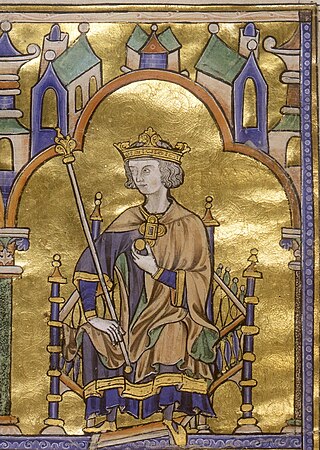
Louis IX, commonly known as Saint Louis or Louis the Saint, was King of France from 1226 to 1270, and the most illustrious of the Direct Capetians. He was crowned in Reims at the age of 12, following the death of his father Louis VIII. His mother, Blanche of Castile, ruled the kingdom as regent until he reached maturity, and then remained his valued adviser until her death. During Louis' childhood, Blanche dealt with the opposition of rebellious vassals and secured Capetian success in the Albigensian Crusade, which had started 20 years earlier.

The Hafsids were a Sunni Muslim dynasty of Berber descent who ruled Ifriqiya from 1229 to 1574.

Tunis is the capital and largest city of Tunisia. The greater metropolitan area of Tunis, often referred to as "Grand Tunis", has about 2,700,000 inhabitants. As of 2020, it is the third-largest city in the Maghreb region and the eleventh-largest in the Arab world.
Ranulf of Apulia defeats Roger II of Sicily at the Battle of Rignano, securing his position as duke until his death two years later.
Ranulf II was the count of Alife and Caiazzo, and duke of Apulia. He was a member of the Italo-Norman Drengot family which dominated the Principality of Capua for most of the century between 1050 and 1150. Ranulf's wife, Matilda, was the sister of King Roger II of Sicily.

Roger II was King of Sicily and Africa, son of Roger I of Sicily and successor to his brother Simon. He began his rule as Count of Sicily in 1105, became Duke of Apulia and Calabria in 1127, then King of Sicily in 1130 and King of Africa in 1148. By the time of his death at the age of 58, Roger had succeeded in uniting all the Norman conquests in Italy into one kingdom with a strong centralized government.

The Battle of Rignano was the second great defeat of the career of Roger II of Sicily and, like the first, the Battle of Nocera, it too came at the hands of Ranulf II, Count of Alife. The prime difference was the position of the two combatants.
Guangzhou is sacked by Arab and Persian pirates.

Guangzhou, also known as Canton and alternatively romanized as Kwongchow or Kwangchow, is the capital and largest city of Guangdong province in southern China. Located on the Pearl River about 120 km (75 mi) north-northwest of Hong Kong and 145 km (90 mi) north of Macau, Guangzhou has a history of over 2,200 years and was a major terminus of the maritime Silk Road; it continues to serve as a major port and transportation hub as well as being one of China's three largest cities. For a long time, the only Chinese port accessible to most foreign traders, Guangzhou was captured by the British during the First Opium War. No longer enjoying a monopoly after the war, it lost trade to other ports such as Hong Kong and Shanghai, but continued to serve as a major transshipment port. Due to a high urban population and large volumes of port traffic, Guangzhou is classified as a Large-Port Megacity, the largest type of port-city in the world. Due to worldwide travel restrictions at the beginning of the COVID-19 pandemic, Guangzhou Baiyun International Airport, the major airport of Guangzhou, briefly became the world's busiest airport by passenger traffic in 2020.
Arab–Byzantine wars: Antioch surrenders to the Rashidun Caliphate after the Battle of the Iron Bridge.
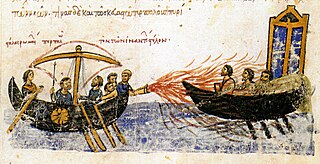
The Arab–Byzantine wars were a series of wars between a number of Muslim Arab dynasties and the Byzantine Empire between the 7th and 11th centuries AD. Conflict started during the initial Muslim conquests, under the expansionist Rashidun and Umayyad caliphs, in the 7th century and continued by their successors until the mid-11th century.
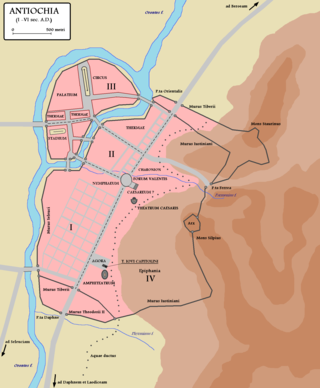
Antioch on the Orontes was a Hellenistic, and later, a Biblical Christian city, founded by Seleucus I Nicator in 300 BC. This city served as the capital of the Seleucid Empire and later as regional capital to both the Roman and Byzantine Empire. During the Crusades, Antioch served as the capital of the Principality of Antioch, one of four Crusader states that were founded in the Levant. Its inhabitants were known as Antiochenes; the city's ruin lies on the Orontes River, near Antakya, the modern city in Hatay Province of Turkey (Türkiye), to which the ancient city lends its name.

The Rashidun Caliphate was the first caliphate to succeed the Islamic prophet Muhammad. It was ruled by the first four successive caliphs of Muhammad after his death in 632 CE. During its existence, the empire was the most powerful economic, cultural, and military force in West Asia.
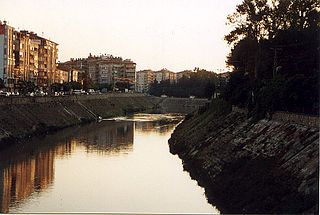
The Battle of the Iron Bridge was fought between the Muslim Rashidun army and the Byzantine army in 637 AD. The battle took its name from a nearby nine-arch stone bridge spanning the Orontes River which had gates trimmed with iron. It was one of the last battles fought between the Byzantines and Rashidun Caliphate in the province of Syria. The aftermath of the battle marked the nearly complete annexation of the province into the Rashidun Caliphate with the fall of its capital.
Kim Joo-hyuk, South Korean actor (b. 1972) deaths

Kim Joo-hyuk was a South Korean actor. He was known for his leading roles in the films My Wife Got Married (2008), The Servant (2010), and Yourself and Yours (2016), his supporting roles in Confidential Assignment (2017) and Believer (2018), as well as the television series Lovers in Prague (2005), God of War (2012), Hur Jun, The Original Story (2013) and Argon (2017). He was also an original regular cast member on the third season of the KBS2's reality-variety show 2 Days & 1 Night.
Mel Daniels, American basketball player and coach (b. 1944) deaths

Melvin Joe Daniels was an American professional basketball player. He played in the American Basketball Association (ABA) for the Minnesota Muskies, Indiana Pacers, and Memphis Sounds, and in the National Basketball Association for the New York Nets. Daniels was a two-time ABA Most Valuable Player, three-time ABA Champion and a seven-time ABA All-Star. Daniels was the All-time ABA rebounding leader, and in 1997 was named a unanimous selection to the ABA All-Time Team. Daniels was enshrined into the Naismith Memorial Basketball Hall of Fame in 2012.
Al Molinaro, American actor (b. 1919) deaths

Albert Francis Molinaro was an American actor. He played Al Delvecchio on Happy Days and Officer Murray Greshler on The Odd Couple. He also appeared in many television commercials, including On-Cor frozen dinners.
Sinan Şamil Sam, Turkish boxer (b. 1974) deaths
Sinan Şamil Sam was a Turkish heavyweight professional boxer. As a professional boxer, Sam won the EBU,WBC international and WBC Mediterranean titles in the heavyweight division. According to his former managers, Sam died after battling liver and kidney failure.
Norm Siebern, American baseball player and scout (b. 1933) deaths

Norman Leroy Siebern was an American professional baseball player and scout. He appeared in 1,406 games over a 12-year career in Major League Baseball as a first baseman and left fielder for the New York Yankees, Kansas City Athletics, Baltimore Orioles, California Angels, San Francisco Giants and Boston Red Sox between 1956 and 1968. A two-time World Series champion and four-time American League All-Star, his best season came in 1962 with the Athletics, when he hit 25 home runs, had 117 runs batted in and a .308 batting average. He might be most remembered, however, as being one of the players the Yankees traded for Roger Maris on December 11, 1959.
Elijah Malok Aleng, Sudanese general and politician (b. 1937) deaths
Elijah Malok Aleng was a South Sudanese public servant, general, and politician, from Bor in Jonglei State. He was born on 28 November 1937 at Thianwong village when his family was living among the Pen people in Angakuei in Baidit, about 20 miles northeast of Bor town. His family, which is originally from Awulian in Wangulei, Twic East County, migrated back to be with fellow Awulian kinfolks. He attended Malek Primary School (1950–1953), and then Juba Intermediate School and Juba Commercial Senior Secondary School, graduating He then attended Free University of the Congo, in the present Democratic Republic of Congo (DRC), and later got a scholarship to study in Fribourg Catholic University, Switzerland, from which he obtained a master's degree in economics in 1972. In 1975 he obtained another Masters in Development Studies and Economic Planning from Wolfson College, Cambridge in the United Kingdom. In his memoirs: the Southern Sudan: Struggle for Liberty, named Chief Deng Biar Abit, leader of the Awulian clan, Paul Logali, former finance minister of Southern Sudan regional government and Akec Kwai Biar, former Bor District Commissioner and his cousin as the people who positively influenced him.
Renée Asherson, English actress (b. 1915) deaths

Dorothy Renée Ascherson, known professionally as Renée Asherson, was an English actress. Much of her theatrical career was spent in Shakespearean plays, appearing at such venues as the Old Vic, the Liverpool Playhouse, and the Westminster Theatre. Her first stage appearance was on 17 October 1935, aged 20, and her first major film appearance was in The Way Ahead (1944). Her last film appearance was in The Others (2001).
Juan Flavier, Filipino physician and politician (b. 1935) deaths
Juan Martin Flavier was a Filipino physician and politician. He served as the Secretary of Health under President Fidel V. Ramos from 1992 to 1995, and was later elected to the Senate, serving from 1995 to 2007.
Ida Elizabeth Osbourne, Australian actress and radio host (b. 1916) deaths
Ida Elizabeth Lea MBE, professionally known as "Elizabeth" Osbourne and Ida Elizabeth Jenkins, was an Australian actor and broadcaster, best known as the co-founder of the Australian Broadcasting Commission's long-running children's radio program the Argonauts Club.
Bob Geigel, American wrestler and promoter (b. 1924) deaths

Robert Frederick Geigel was an American professional wrestling promoter and professional wrestler. He operated the Kansas City, Missouri-based Heart of America Sports Attractions promotion from 1963 to 1986, and served three terms as the president of the National Wrestling Alliance from 1978 to 1980, 1982 to 1985, and 1986 to 1987.
Thomas Menino, American businessman and politician, 53rd Mayor of Boston (b. 1942) deaths

Thomas Michael Menino was an American politician who served as the 53rd mayor of Boston, from 1993 to 2014. He was the city's longest-serving mayor. He was elected mayor in 1993 after first serving three months in the position of "acting mayor" following the resignation of his predecessor Raymond Flynn. Before serving as mayor, Menino was a member of Boston City Council and had been elected president of the City Council in 1993.

The mayor of Boston is the head of the municipal government in Boston, Massachusetts. Boston has a mayor–council government. Boston's mayoral elections are nonpartisan, and elect a mayor to a four-year term; there are no term limits. The mayor's office is in Boston City Hall, in Government Center.
Bill Currie, American baseball player (b. 1928) deaths
William Cleveland Currie was an American professional baseball player. He was a right-handed pitcher whose ten-year minor league career was punctuated by a three-game stint in Major League Baseball with the 1955 Washington Senators.
Pete Haycock, English singer-songwriter and guitarist (b. 1951) deaths

Peter John Haycock was an English musician and film score composer. He began his career as lead guitarist, vocalist, and founding member of the Climax Blues Band.
Michael Palmer, American physician and author (b. 1942) deaths

Michael Stephen Palmer, M.D., was an American physician and author. His novels are often referred to as medical thrillers. Some of his novels have made The New York Times Best Seller list and have been translated into 35 languages. One, Extreme Measures (1991), was adopted into a 1996 film of the same name starring Hugh Grant, Sarah Jessica Parker, and Gene Hackman.
Frank Wess, American saxophonist and flute player (b. 1922) deaths

Frank Wellington Wess was an American jazz saxophonist and flutist. In addition to his extensive solo work, Wess is remembered for his time in Count Basie's band from the early 1950s into the 1960s. Critic Scott Yanow described him as one of the premier proteges of Lester Young, and a leading jazz flutist of his era—using the latter instrument to bring new colors to Basie's music.
Franck Biancheri, French politician (b. 1961) deaths

Franck Biancheri was the founder of the Newropeans European political party and the leader from June 2006. The party planned to run for campaigns in the 2009 elections to the European Parliament with representatives in all member states simultaneously.
Samina Raja, Pakistani poet and educator (b. 1961) deaths
Samina Raja was a Pakistani Urdu poet, writer, editor, translator, educationist and broadcaster. She lived in Islamabad, Pakistan, and worked in the National Language Authority as a subject specialist.
Dan Tieman, American basketball player and coach (b. 1940) deaths
Daniel Theodore Tieman was an American basketball player, coach, and teacher.
Harry Mulisch, Dutch author, poet, and playwright (b. 1927) deaths
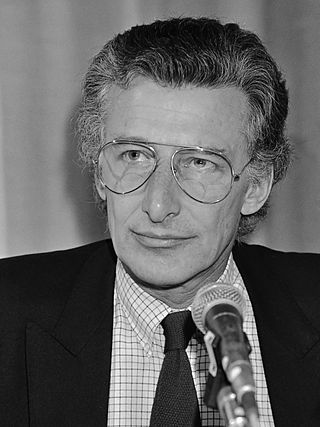
Harry Kurt Victor Mulisch was a Dutch writer. He wrote more than 80 novels, plays, essays, poems, and philosophical reflections. Mulisch's works have been translated into over thirty languages.
Claude Lévi-Strauss, French anthropologist and ethnologist (b. 1908) deaths

Claude Lévi-Strauss was a French anthropologist and ethnologist whose work was key in the development of the theories of structuralism and structural anthropology. He held the chair of Social Anthropology at the Collège de France between 1959 and 1982, was elected a member of the Académie française in 1973 and was a member of the School for Advanced Studies in the Social Sciences in Paris. He received numerous honors from universities and institutions throughout the world.
Pedro Pompilio, Argentinian businessman (b. 1950) deaths
Pedro Pompilio was a football businessman and chairman of Boca Juniors. He began his mandate at the club on 4 December 2007 and it lasted until his death on 30 October 2008 due to heart problems. He was also the second Vice President of the Argentinian Football Association.
Washoe, American chimpanzee (b. 1965) deaths
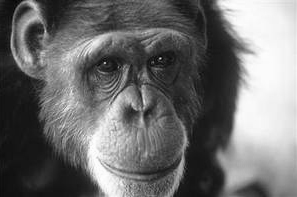
Washoe was a female common chimpanzee who was the first non-human to learn to communicate using American Sign Language (ASL) as part of an animal research experiment on animal language acquisition.
Robert Goulet, American actor and singer (b. 1933) deaths
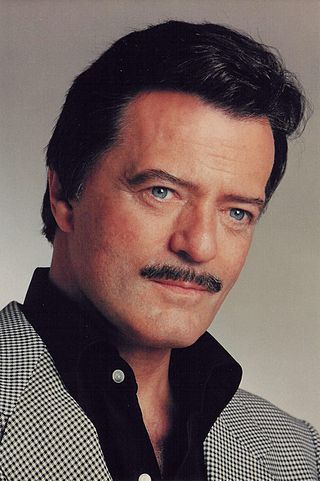
Robert Gérard Goulet was an American and Canadian singer and actor of French-Canadian ancestry. Goulet was born and raised in Lawrence, Massachusetts until age 13, and then spent his formative years in Canada. Cast as Sir Lancelot and originating the role in the 1960 Broadway musical Camelot starring opposite established Broadway stars Richard Burton and Julie Andrews, he achieved instant recognition with his performance and interpretation of the song "If Ever I Would Leave You", which became his signature song. His debut in Camelot marked the beginning of a stage, screen, and recording career. A Grammy Award winner, his career spanned almost six decades. He starred in a 1966 television version of Brigadoon, a production which won five primetime Emmy Awards. In 1968, he won the Tony Award for Best Actor in a Musical for The Happy Time, a musical about a French-Canadian family set in Ottawa.
Linda S. Stein, American businesswoman and manager (b. 1945) deaths
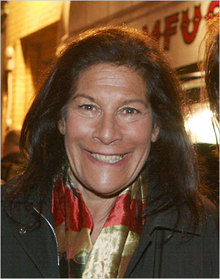
Linda Stein was an American rock music manager and real estate broker.
John Woodruff, American runner and colonel (b. 1915) deaths

John Youie "Long John" Woodruff was an American middle-distance runner, winner of the 800 meter event at the 1936 Summer Olympics.
Clifford Geertz, American anthropologist and author (b. 1926) deaths
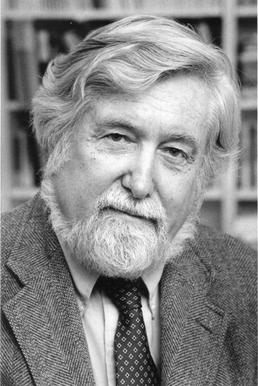
Clifford James Geertz was an American anthropologist who is remembered mostly for his strong support for and influence on the practice of symbolic anthropology and who was considered "for three decades... the single most influential cultural anthropologist in the United States." He served until his death as professor emeritus at the Institute for Advanced Study, Princeton.
Junji Kinoshita, Japanese playwright and scholar (b. 1914) deaths
Junji Kinoshita was the foremost playwright of modern drama in postwar Japan. He was also a translator and scholar of Shakespeare's plays. Kinoshita’s achievements were not limited to Japan. He helped to promote theatrical exchanges between Japan and the People’s Republic of China, and he traveled broadly in Europe and Asia. In addition to his international work, Kinoshita joined various societies that focused on the study of folktales and the Japanese language.
Al López, American baseball player and manager (b. 1908) deaths

Alfonso Ramón López was a Spanish-American professional baseball catcher and manager. He played in Major League Baseball (MLB) for the Brooklyn Robins / Dodgers, Boston Bees, Pittsburgh Pirates, and Cleveland Indians between 1928 and 1947, and was the manager for the Cleveland Indians and the Chicago White Sox from 1951 to 1965 and during portions of the 1968 and 1969 seasons. Due to his Spanish ancestry and "gentlemanly" nature, he was nicknamed "El Señor".
Shamsher Singh Sheri, Indian politician (b. 1942) deaths
Shamsher Singh Sheri, commonly known by his nom de guerre, Karam Singh, was a communist leader and a Politburo member of the CPI (Maoist) in India.
Phyllis Frost, Australian philanthropist, founded Keep Australia Beautiful (b. 1917) deaths
Dame Phyllis Irene Frost was an Australian welfare worker and philanthropist, known for her commitment to causes, such as helping prisoners. She chaired the Victorian Women's Prisons Council for many years, established the Keep Australia Beautiful movement, worked for Freedom from Hunger and raised millions of dollars for charity.
Peggy Ryan, American actress and dancer (b. 1924) deaths
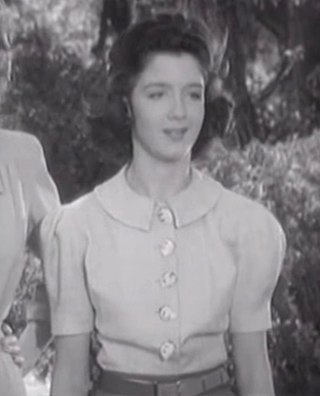
Margaret O'Rene Ryan was an American dancer and actress, best known for starring in a series of movie musicals at Universal Pictures with Donald O'Connor and Gloria Jean.
Steve O'Rourke, English race car driver and manager (b. 1940) deaths
Steve O'Rourke was an English music manager and racing driver. He is known for being the manager of Pink Floyd, a position he held from 1968 until his death. Among his accomplishments is negotiating Pink Floyd's split with bass player and main songwriter Roger Waters.
Juan Antonio Bardem, Spanish actor, director, and screenwriter (b. 1922) deaths

Juan Antonio Bardem Muñoz was a Spanish film director and screen writer, born in Madrid. He was a member of the Communist Party. Bardem was best known for Muerte de un ciclista (1955) which won the FIPRESCI Prize at the 1955 Cannes Film Festival, and El puente (1977) which won the Golden Prize at the 10th Moscow International Film Festival. His 1979 film Seven Days in January won the Golden Prize at the 11th Moscow International Film Festival. In 1981 he was a member of the jury at the 12th Moscow International Film Festival. In 1993 he was a member of the jury at the 43rd Berlin International Film Festival. In 1953 he and Luis García Berlanga founded a film magazine, Objetivo, which existed until 1956. Bardem is the father of director Miguel Bardem and uncle of actor Javier Bardem. Bardem died in Madrid in 2002, at age 80.
Jam Master Jay, American rapper and producer (b. 1965) deaths

Jason William Mizell, better known by his stage name Jam Master Jay, was an American musician and DJ. He was the DJ of the influential hip hop group Run-DMC. During the 1980s, Run-DMC became one of the biggest hip hop groups and are credited with breaking hip hop into mainstream music.
Steve Allen, American actor, television personality, game show panelist, and talk show host (b. 1921) deaths

Stephen Valentine Patrick William Allen was an American television personality, radio personality, musician, composer, actor, comedian, and writer. In 1954, he achieved national fame as the co-creator and first host of The Tonight Show, which was the first late-night television talk show.
Maigonis Valdmanis, Latvian basketball player (b. 1933) deaths

Maigonis Valdmanis was a Soviet and Latvian basketball player and coach. He was born in Riga.
Florence Nagle, English trainer and breeder of racehorses (b. 1894) deaths

Florence Nagle was a British trainer and breeder of racehorses, a breeder of pedigree dogs, and an active feminist. Nagle purchased her first Irish Wolfhound in 1913, and went on to own or breed twenty-one United Kingdom Champions. Best in Show at Crufts in 1960 was awarded to Sulhamstead Merman, who was bred, owned and exhibited by Nagle. She also competed successfully in field trials with Irish Setters, from the 1920s until the mid-1960s resulting in eighteen Field Trial Champions. The male dog who was a linchpin in the 1970s revival of the Irish Red and White Setter breed was descended from one of Nagle's Irish Setters.
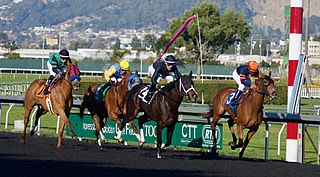
Horse racing is an equestrian performance sport, typically involving two or more horses ridden by jockeys over a set distance for competition. It is one of the most ancient of all sports, as its basic premise – to identify which of two or more horses is the fastest over a set course or distance – has been mostly unchanged since at least classical antiquity.
Samuel Fuller, American actor, director, producer, and screenwriter (b. 1912) deaths

Samuel Michael Fuller was an American film director, screenwriter, novelist, journalist, and World War II veteran known for directing low-budget genre movies with controversial themes, often made outside the conventional studio system. Fuller wrote his first screenplay for Hats Off in 1936, and made his directorial debut with the Western I Shot Jesse James (1949). He would continue to direct several other Westerns and war thrillers throughout the 1950s.
Devin Booker, American basketball player births

Devin Armani Booker is an American professional basketball player for the Phoenix Suns of the National Basketball Association (NBA). He is the son of former basketball player Melvin Booker. After playing college basketball for one season with the Kentucky Wildcats, Booker was selected by the Phoenix Suns in the first round of the 2015 NBA draft with the 13th overall pick. On March 24, 2017, he became the youngest player to score over 60 points in a game, finishing with 70 against the Boston Celtics. In March 2019, at 22 years old, Booker became the youngest player in NBA history with consecutive 50-point games. He is a three-time NBA All-Star and helped the Suns reach the NBA Finals in 2021. Booker also won a gold medal on the 2020 U.S. Olympic team in Tokyo.
John Young, Scottish actor (b. 1916) deaths
John Young was a Scottish actor. He is the father of the actor Paul Young.
Mia Eklund, Finnish tennis player births

Mia Nicole Eklund is a retired Finnish tennis player.
Marcus Mariota, American football player births

Marcus Ardel Taulauniu Mariota is an American football quarterback for the Atlanta Falcons of the National Football League (NFL). He was drafted second overall by the Tennessee Titans in the 2015 NFL Draft. Mariota played college football at Oregon, where he was the starting quarterback from 2012 to 2014. As a junior in 2014, Mariota became the first University of Oregon player, as well as the first Hawaii-born athlete, to win the Heisman Trophy.
Paul Grégoire, Canadian cardinal (b. 1911) deaths

Paul Grégoire, was a Canadian Cardinal of the Roman Catholic Church. He served as Archbishop of Montreal from 1968 to 1990, and was elevated to the cardinalate in 1988.
Matt Parcell, Australian rugby league player births

Matt Steven Parcell is an Australian professional rugby league footballer who plays as a hooker for Hull Kingston Rovers in the Betfred Super League.
Camila Silva, Chilean tennis player births
Camila Silva Espinoza is a Chilean former tennis player.
Joan Mitchell, American painter (b. 1925) deaths

Joan Mitchell was an American artist who worked primarily in painting and printmaking, and also used pastel and made other works on paper. She was an active participant in the New York School of artists in the 1950s. A native of Chicago, she is associated with the American abstract expressionist movement, even though she lived in France for much of her career.
Suwaibou Sanneh, Gambian sprinter births
Suwaibou Sanneh is a Gambian sprinter who specializes in the 100 metres. He was born in Brikama. He set a personal best and national record time of 10.16 seconds during the Twilight Series Meet #3 on 30 May 2013 in New York City.
V. Shantaram, Indian actor, director, and producer (b. 1901) deaths
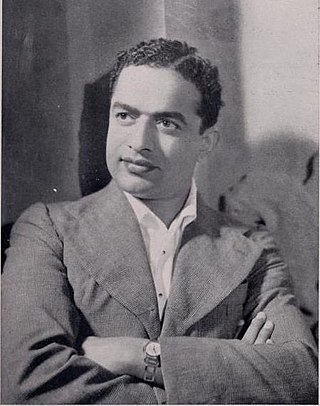
Shantaram Rajaram Vankudre, referred to as V. Shantaram or Shantaram Bapu, was an Indian filmmaker, film producer, and actor known for his work in Hindi and Marathi films. He is most known for films such as Dr. Kotnis Ki Amar Kahani (1946), Amar Bhoopali (1951), Jhanak Jhanak Payal Baaje (1955), Do Aankhen Barah Haath (1957), Navrang (1959), Duniya Na Mane (1937), Pinjara (1972), Chani, Iye Marathiche Nagari and Zunj.
Ashley Barnes, Austrian-English footballer births

Ashley Luke Barnes is an English professional footballer who plays as a striker for EFL Championship club Burnley.
Nastia Liukin, Russian-American gymnast and actress births
Anastasia "Nastia" Liukin is a Russian-born American former artistic gymnast. She is the 2008 Olympic All-Around champion, a five-time Olympic medalist, the 2005 and 2007 world champion on the balance beam, and the 2005 world champion on the uneven bars. She is also a four-time all-around U.S. national champion, winning twice as a junior and twice as a senior. With nine World Championships medals, seven of them individual, Liukin is tied with Shannon Miller for the third-highest tally of World Championship medals. Liukin also tied Miller's record as the American gymnast having won the most medals in a single non-boycotted Olympic Games.
Janel Parrish, American actress and singer births

Janel Meilani Parrish Long is an American actress and singer. She starred as Mona Vanderwaal in the mystery-drama television series Pretty Little Liars (2010–2017) and its spinoff Pretty Little Liars: The Perfectionists (2019), and as Margot Covey in the To All the Boys film series (2018–2021). She also portrayed Young Cosette in the Broadway production of Les Misérables (1996), and Jade in the teen comedy film Bratz (2007).
T. Hee, American animator and screenwriter (b. 1911) deaths
Thornton Hee was an American animator, director, and teacher. He taught character design and caricature.
Ali Riley, New Zealand footballer births
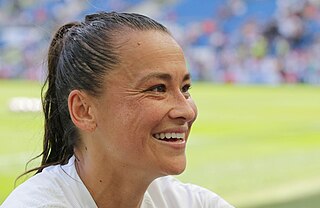
Alexandra Lowe Riley is an American-born New Zealand professional footballer who plays as a defender for Angel City of the American National Women's Soccer League (NWSL), as well as the New Zealand women's national football team. She captains both her club and national teams. As a collegiate athlete, she captained the Stanford soccer team to two NCAA semi-finals and one final.
Danielle Fong, Canadian entrepreneur, co-founder and Chief Scientist of LightSail Energy births

Danielle Fong is a Canadian scientist and entrepreneur. She was the co-founder and chief scientist of LightSail Energy.
LightSail Energy (2008-2018) was a Berkeley, California compressed air energy storage technology startup, working on energy storage devices based on compressed-air energy storage infused with water vapour in order to retain calorimetric energy and increase energy efficiency up to marketable levels. The parallel emergence of cheaper energy storage devices such as the Lithium-ion batteries have been cited as the cause for LightSail's failure to commercialize its storage devices.
Joseph Campbell, American mythologist, scholar, and author (b. 1904) deaths
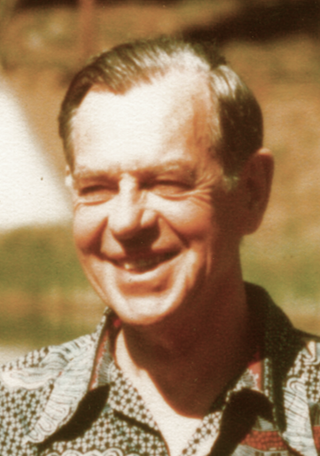
Joseph John Campbell was an American writer. He was a professor of literature at Sarah Lawrence College who worked in comparative mythology and comparative religion. His work covers many aspects of the human experience. Campbell's best-known work is his book The Hero with a Thousand Faces (1949), in which he discusses his theory of the journey of the archetypal hero shared by world mythologies, termed the monomyth.
Thomas Morgenstern, Austrian ski jumper births
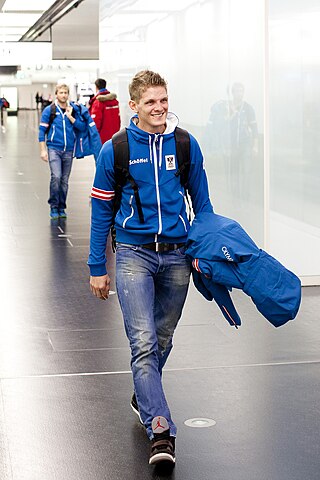
Thomas Morgenstern is an Austrian former ski jumper who competed from 2002 to 2014. He is one of the most successful ski jumpers of all time, having won the World Cup overall title twice with 23 individual wins, the Four Hills Tournament and the Nordic Tournament once each, eight World Championship gold medals, and three Winter Olympic gold medals.
Keisuke Sohma, Japanese actor births
Keisuke Sohma is a Japanese actor.
Ragnar Klavan, Estonian footballer births
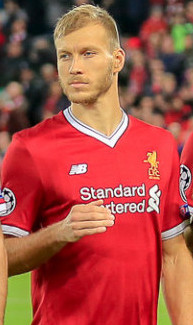
Ragnar Klavan is an Estonian professional footballer who plays as a defender for Estonian club Paide Linnameeskond and the Estonia national team. A left-footed centre back, he has also played as a left back during his career.
Eva Marcille, American model and actress births

Eva Marcille Sterling is an American actress, fashion model and television personality. She started her career by winning the third cycle of America's Next Top Model.
Gedo, Egyptian footballer births

Mohamed Nagy Ismail Afash ; born 30 October 1984), known by his nickname Gedo, is an Egyptian footballer who plays for National Bank of Egypt in the Egyptian Premier League, as well as Egypt national team.
David Mooney, Irish footballer births
David Mooney is an Irish footballer who has played for several clubs in Ireland and the United Kingdom. As of 2019, he was playing as a striker for Leinster Senior League side Lucan United.
Isaac Ross, New Zealand rugby player births

Isaac Beattie Ross is a New Zealand rugby union player. He plays in the lock position for the Austin Gilgronis of Major League Rugby (MLR) competition.
Tyson Strachan, Canadian ice hockey player births

Tyson Strachan is a Canadian former professional ice hockey defenceman. He most recently played for the Cardiff Devils in the EIHL. He was drafted by the Carolina Hurricanes in the fifth round, 137th overall, in the 2003 NHL Entry Draft.
Trent Edwards, American football player births

Trent Addison Edwards is a former American football quarterback. He played college football at Stanford and was drafted by the Buffalo Bills in the third round of the 2007 NFL Draft. As a rookie, Edwards took over the starting position after an injury to incumbent starter J. P. Losman, leading Buffalo to a 5–1 start in 2008 before injuries and declining play resulted in his own demotion and eventual release from the team in 2010.
Iain Hume, Scottish-Canadian footballer births

Iain Edward Hume is a Canadian football manager and former professional soccer player who played as a forward. He began his career at Tranmere Rovers in 2000, and six years later moved to Leicester City for an initial £500,000 fee. Three years later he was signed by Barnsley for £1.2 million, where he suffered a serious head injury in a match against Sheffield United. He later played for Preston North End, and was loaned to Doncaster Rovers and Fleetwood Town, where he won League One and the League Two play-offs respectively.
Maor Melikson, Israeli footballer births

Maor Melikson is an Israeli former association footballer who played as a winger for the Israel national team. As a result of injury he announced his retirement on 1 January 2020.
Stalley, American rapper births

Kyle Alfonso Myricks, better known by his stage name Stalley, is an American rapper from Massillon, Ohio.
Andy Greene, American ice hockey player births

Andrew Greene is an American former professional ice hockey defenseman who played sixteen seasons in the National Hockey League (NHL), primarily for the New Jersey Devils, with whom he served as team captain.
Manny Parra, American baseball player births
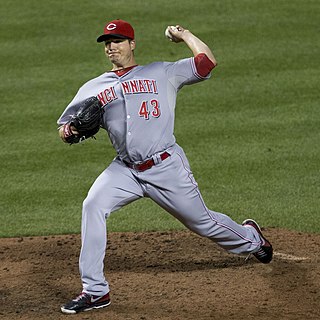
Manuel Alex Parra is an American professional baseball player for the Leones de Yucatán of the Mexican League. He has played as a pitcher in Major League Baseball (MLB) for the Milwaukee Brewers and Cincinnati Reds.
Iryna Vilde, Ukrainian author and educator (b. 1907) deaths
Daryna Dmytrivna Polotniuk, better known by her pen name Iryna Vilde, was a Ukrainian and Soviet writer and correspondent. Vilde's works are now considered classics of Ukrainian literature.
Joshua Jay, American magician and author births

Joshua Jay is a magician, author, and lecturer. He has performed in over 100 countries, and he was awarded the top prize at the World Magic Seminar in 1998. He fooled Penn and Teller on their hit show, Fool Us, and he holds a Guinness World Record for card tricks. Jay has done magic on numerous television shows, most recently Good Morning America and The Today Show. Most recently, in January 2018, Joshua was recognized by the Society of American Magicians with their highest proclamation, for his contribution to the art of magic. Joshua attended Ohio State University and currently resides in New York City.
Jun Ji-hyun, South Korean model and actress births

Jun Ji-hyun, also known by her English name Gianna Jun, is a South Korean actress and model. She has received multiple awards, including two Grand Bell Awards for Best Actress and a Daesang for Television at the Baeksang Art Awards.
Ayaka Kimura, Japanese singer and actress births
Ayaka Tanihara , born Ayaka Kimura October 30, 1981 and known professionally as Ayaka Nagate , is a Japanese actress and former singer. From 1998 to 2008, Nagate was part of Hello! Project as a member of the Japan-based girl group Coconuts Musume.
Ian Snell, American baseball player births

Ian Dante Snell is an American former professional baseball right-handed pitcher. He played in Major League Baseball (MLB) for the Pittsburgh Pirates and Seattle Mariners. From 2001 to 2003, he went by the name Ian Oquendo, adopting the last name of his wife, and during the 2009 World Baseball Classic he went by Ian Davila-Snell, adopting his stepfather's surname. He throws a mid-90s fastball, along with a curveball, slider and changeup.
Ivanka Trump, American model and businesswoman births

Ivana Marie "Ivanka" Trump is an American businesswoman and the first daughter of Donald Trump, 45th president of the United States from 2017 to 2021. She was a senior advisor in his administration, and also was the director of the Office of Economic Initiatives and Entrepreneurship. She is the daughter of Trump's first wife, Ivana, and is the first Jewish member of an American first family, having converted before marrying her Jewish husband, Jared Kushner.
Choi Hong-man, South Korean wrestler and mixed martial artist births

Choi Hong-man, often anglicised to Hongman Choi, is a South Korean kickboxer, mixed martial artist, and former ssireum wrestler. In Asia, he is called "Che Man", "Techno Goliath", "Korean Monster" and "Korean Colossus". He won the 2005 K-1 Seoul Grand Prix beating Kaoklai Kaennorsing in the finals. He stands 2.18 m and weighs 159 kg.
Kareem Rush, American basketball player births

Kareem Lamar Rush is an American former professional basketball player. Rush's younger brother, Brandon, last played for the Minnesota Timberwolves, while older brother JaRon played college basketball for UCLA.
Rich Alvarez, Filipino-Japanese basketball player births

Richard Alvarez is a Japanese-born Filipino former professional basketball player and coach. He last played for the Kia Picanto of the Philippine Basketball Association (PBA). He was the first overall pick of 2004 PBA Draft by the Shell Turbo Chargers. He is currently an assistant coach for the Phoenix Super LPG Fuel Masters of the PBA.
Jason Bartlett, American baseball player births

Jason Alan Bartlett is a Filipino American former professional baseball shortstop. He played in Major League Baseball (MLB) for the Minnesota Twins, Tampa Bay Rays, and San Diego Padres.
Barnes Wallis, English scientist and engineer, inventor of the "bouncing bomb" (b. 1887) deaths

Sir Barnes Neville Wallis was an English engineer and inventor. He is best known for inventing the bouncing bomb used by the Royal Air Force in Operation Chastise to attack the dams of the Ruhr Valley during World War II.

A bouncing bomb is a bomb designed to bounce to a target across water in a calculated manner to avoid obstacles such as torpedo nets, and to allow both the bomb's speed on arrival at the target and the timing of its detonation to be pre-determined, in a similar fashion to a regular naval depth charge. The inventor of the first such bomb was the British engineer Barnes Wallis, whose "Upkeep" bouncing bomb was used in the RAF's Operation Chastise of May 1943 to bounce into German dams and explode under water, with effect similar to the underground detonation of the Grand Slam and Tallboy earthquake bombs, both of which he also invented.
Martin Dossett, American football player births
Martin William Dossett is a former NFL wide receiver who signed with the Green Bay Packers. He played college football & ran track at Baylor University. He has played in leagues such as NFL Europe and AF2 before playing in Corpus Christi, Texas for the Corpus Christi Hammerheads of the Intense Football League.
Stephanie Izard, American chef births
Stephanie Izard is an American chef and television personality best known as the first female chef to win Bravo's Top Chef, taking the title during its fourth season. She is the co-owner and executive chef of three award-winning Chicago restaurants, Girl and the Goat, Little Goat, and Duck Duck Goat, and opened her first restaurant, Scylla as chef-owner at the age of 27. Izard received a James Beard Foundation Award for "Best Chef: Great Lakes" in 2013 for her work at Girl and the Goat. She has made a number of appearances on Top Chef since her win, both as a guest judge on subsequent seasons and as a participant in Top Chef Duels. In 2017, Izard competed in the Food Network series Iron Chef Gauntlet, where she overall defeated chefs Bobby Flay, Michael Symon, and Masaharu Morimoto to obtain the title of Iron Chef.
Matthew Morrison, American singer-songwriter and actor births

Matthew James Morrison is an American actor, dancer and singer-songwriter, best known for his role as Will Schuester on the Fox television show Glee (2009–2015). He has starred in multiple Broadway and Off-Broadway productions, including appearing as Link Larkin in the original Broadway cast of Hairspray (2002), Fabrizio Nacarelli in the original Broadway cast of the musical The Light in the Piazza, and the starring role of J.M. Barrie in the original Broadway cast of Finding Neverland (2015-2016).
Dan Poulter, English physician and politician births

Daniel Leonard James Poulter is a British Conservative Party politician, who was elected at the 2010 general election as the Member of Parliament (MP) for Central Suffolk and North Ipswich. Poulter is a psychiatrist and served as a Parliamentary Under-Secretary of State in the Department of Health between September 2012 and May 2015 when he returned to the backbenches.
Derren Witcombe, New Zealand rugby player and cricketer births
Derren John Charles Witcombe is an Australian-born New Zealand rugby union coach and former player. As a player, he played at hooker.
Stern John, Trinidadian footballer births

Stern John, CM is a Trinidadian football manager and former player who is currently managing Saint Lucia. He managed Anguilla from 2020 to 2022. He previously played for a number of American and English football clubs that included Columbus Crew, Nottingham Forest, Birmingham City, Coventry City, Derby County, Sunderland, Southampton, Bristol City, Crystal Palace and Ipswich Town.
Ümit Özat, Turkish footballer and manager births
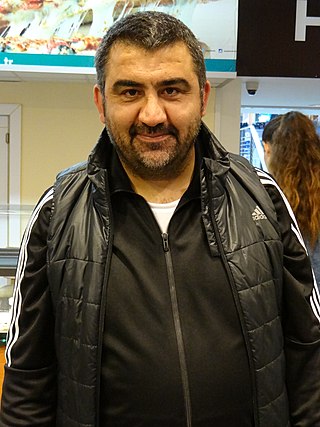
Ümit Özat is a Turkish professional football manager and former player.
Maurice Taylor, American basketball player births

Maurice De Shawn Taylor is an American former professional basketball player. He played power forward and center positions. Originally from Detroit, Taylor played college basketball at Michigan and was selected by the Los Angeles Clippers as the 14th overall pick in the 1997 NBA draft. Taylor played from 1997 to 2007 in the NBA for the Clippers, Houston Rockets, New York Knicks, and Sacramento Kings. From 2009 to 2011, Taylor played internationally in Italy and China.
Ian D'Sa, English-Canadian singer-songwriter, guitarist, and producer births

Ian D'Sa is a Canadian guitarist and producer best known as a member of the rock band Billy Talent.
Marco Scutaro, Venezuelan baseball player births
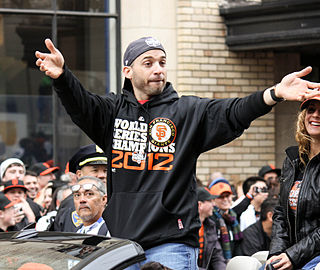
Marcos Scutaro, better known as Marco Scutaro, is a Venezuelan former professional baseball infielder. He bats and throws right-handed. Scutaro made his major league debut with the New York Mets in 2002, and subsequently played for the Oakland Athletics, Toronto Blue Jays, Boston Red Sox, Colorado Rockies and San Francisco Giants. Scutaro was named the most valuable player of the 2012 National League Championship Series while with the Giants; he and the team then won the 2012 World Series over the Detroit Tigers.
Gustav Ludwig Hertz, German physicist and academic, Nobel Prize laureate (b. 1887) deaths

Gustav Ludwig Hertz was a German experimental physicist and Nobel Prize winner for his work on inelastic electron collisions in gases, and a nephew of Heinrich Rudolf Hertz.

The Nobel Prize in Physics is a yearly award given by the Royal Swedish Academy of Sciences for those who have made the most outstanding contributions for humankind in the field of physics. It is one of the five Nobel Prizes established by the will of Alfred Nobel in 1895 and awarded since 1901, the others being the Nobel Prize in Chemistry, Nobel Prize in Literature, Nobel Peace Prize, and Nobel Prize in Physiology or Medicine. Physics is traditionally the first award presented in the Nobel Prize ceremony.
Michael Buettner, Australian rugby league player and official births
Michael Buettner is an Australian rugby league official and former professional footballer of the 1990s and 2000s. An Australian international and New South Wales State of Origin representative back, he played club football for the North Sydney Bears, the Northern Eagles, the Parramatta Eels and the Wests Tigers.
Silvia Corzo, Colombian lawyer and journalist births

Silvia Milena Corzo Pinto is a Colombian lawyer and presenter.
Edge, Canadian wrestler and actor births

Adam Joseph Copeland, is a Canadian professional wrestler and actor. He is currently signed to WWE, where he performs on the Raw brand under the ring name Edge. He is considered to be one of the greatest professional wrestlers of all time.
Michael Oakes, English footballer and manager births
Michael Christian Oakes is an English football coach and former professional footballer.
Raci Şaşmaz, Turkish actor, producer, and screenwriter births
Raci Şaşmaz is a Turkish film producer, writer and actor.
Ants Lauter, Estonian actor and director (b. 1894) deaths

Ants Lauter was an Estonian actor, theatre director and pedagogue, People's Artist of the USSR (1948). He was born in Veski, Wiek County, and died, aged 79, in Tallinn.
Jessica Hynes, English actress, producer, and screenwriter births
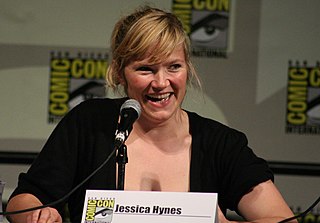
Tallulah Jessica Elina Hynes is an English actress, director and writer. Known professionally as Jessica Stevenson until 2007, she was one of the creators, writers and stars of the British sitcom Spaced and has worked as a writer and actress for over two decades.
Fredi Bobic, Slovenian-German footballer and manager births

Fredi Bobic is a German football executive and former player who played as a striker. He is the sporting director of Bundesliga club Hertha BSC.
Tzanis Stavrakopoulos, Greek basketball player births
Tzanis Stavrakopoulos is a Greek former professional basketball player. At a height of 2.02 m, he played at the small forward position.
Peter New, Canadian actor, voice actor and screenwriters births
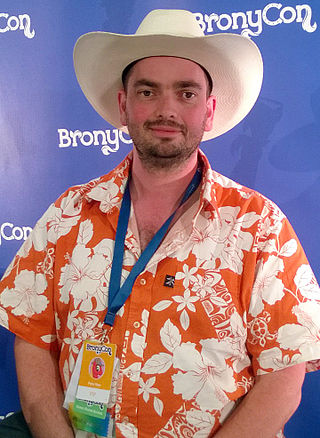
Peter New is a Canadian actor and screenwriter, best known for his roles as Big McIntosh in My Little Pony: Friendship Is Magic and Sunil Nevla in Littlest Pet Shop.
Suzan van der Wielen, Dutch field hockey player births
Suzan Jacobien Unia van der Wielen is a former field hockey player from the Netherlands, who played 191 international matches for the Netherlands, in which the striker scored a total number of seventy goals.
Ben Bailey, American comedian and game show host births

Benjamin Ray Bailey is an American comedian.
Tory Belleci, American visual effects designer and television presenter births

Salvatore "Tory" Paul Belleci is an American television personality and model maker, best known for his work on the Discovery Channel television program MythBusters. He has also worked with Industrial Light and Magic on films including Star Wars: Episode I – The Phantom Menace and Star Wars: Episode II – Attack of the Clones. The Federation battleships and podracers are some of Belleci's pieces. He is currently one of the three stars of Motor Trend's TV show Motor Mythbusters.
Christine Bersola-Babao, Filipino journalist and actress births

Christine Peji Bersola-Babao, known professionally as Tin Tin, is a Filipina multi-media personality. She is best known for starring in the educational television program Sine'skwela.
Nia Long, American actress births

Nia Talita Long is an American actress. Best known for her work in Black cinema, Long rose to prominence after starring in the film Boyz n the Hood (1991), and for her portrayal of Beullah "Lisa" Wilkes on the NBC sitcom The Fresh Prince of Bel-Air (1991–1995). She then appeared in Friday (1995), as well as the 1997 films Love Jones and Soul Food.
Ekaterini Voggoli, Greek discus thrower births
Ekaterini Voggoli is a retired Greek discus thrower.
Stanislav Gross, Czech lawyer and politician, 5th Prime Minister of the Czech Republic (d. 2015) births

Stanislav Gross was a Czech lawyer and politician who served as the prime minister of the Czech Republic and leader of the Czech Social Democratic Party from 2004 until 2005 when he resigned as a result of his financial irregularities. He previously served as minister of the Interior in cabinets of Miloš Zeman and Vladimír Špidla from 2000 to 2004. Gross was Member of the Chamber of Deputies (MP) from 1992 to 2004.

The prime minister of the Czech Republic is the head of the government of the Czech Republic. The prime minister is the de-facto leader of the executive branch, chairs the Cabinet and selects its ministers.
Snow, Canadian rapper and reggae singer-songwriter births
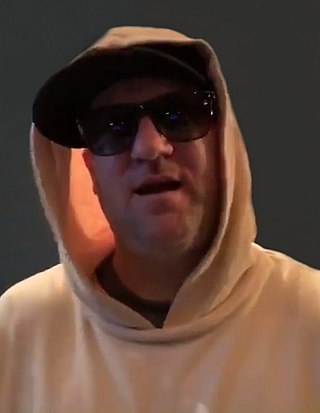
Darrin Kenneth O'Brien, known by his stage name Snow, is a Canadian reggae musician, rapper and singer. His 1992 single "Informer" spent seven weeks at No. 1 on the US Billboard Hot 100.
Vangelis Vourtzoumis, Greek basketball player births
Evangelos "Vangelis" Vourtzoumis is a retired Greek professional basketball player.
Emmanuelle Claret, French biathlete (d. 2013) births
Emmanuelle Claret was a French biathlete. Her best performance came in 1996 when she became world champion in the Biathlon World Championships 1996 in Ruhpolding at 15 km. She also won a silver medal with the French relay at the same championships. She won the overall World Cup in 1996. She has won three individual victories in the world cup. She died of leukemia on 11 May 2013, aged 44.
Jack Plotnick, American actor, director, and producer births
Jack Stuart Plotnick is an American film and television actor, writer, and producer.
Ken Stringfellow, American singer-songwriter and guitarist births

Kenneth Stuart Stringfellow is an American singer, songwriter, multi-instrumentalist, arranger, and producer. Best known for his work with The Posies, R.E.M., and the re-formed Big Star, Stringfellow's discography includes more than 200 albums.
Ramon Novarro, Mexican-American actor, singer, and director (b. 1899) deaths

José Ramón Gil Samaniego, known professionally as Ramon Novarro, was a Mexican-American actor. He began his career in silent films in 1917 and eventually became a leading man and one of the top box office attractions of the 1920s and early 1930s. Novarro was promoted by MGM as a "Latin lover" and became known as a sex symbol after the death of Rudolph Valentino. He is recognized as the first Latin American actor to succeed in Hollywood.
Conrad Richter, American journalist and novelist (b. 1890) deaths

Conrad Michael Richter was an American novelist whose lyrical work is concerned largely with life on the American frontier in various periods. His novel The Town (1950), the last story of his trilogy The Awakening Land about the Ohio frontier, won the 1951 Pulitzer Prize for Fiction. His novel The Waters of Kronos won the 1961 National Book Award for Fiction. Two collections of short stories were published posthumously during the 20th century, and several of his novels have been reissued during the 21st century by academic presses.
Rose Wilder Lane, American journalist and author (b. 1886) deaths

Rose Wilder Lane was an American journalist, travel writer, novelist, political theorist and daughter of American writer Laura Ingalls Wilder. Along with two other female writers, Ayn Rand and Isabel Paterson, Lane is noted as one of the most influential advocates of the American libertarian movement.
Brad Aitken, Canadian ice hockey player births
Bradley E. Aitken is a Canadian former professional ice hockey Left Wing who played 14 games in the National Hockey League.
Leonidas Kavakos, Greek violinist and conductor births

Leonidas Kavakos is a Greek violinist and conductor. As a violinist, he has won prizes at several international violin competitions, including the Sibelius, Paganini, Naumburg, and Indianapolis competitions. He is an Onassis Foundation scholar. He has also recorded for record labels such as Sony/BMG and BIS. As a conductor, he was an artistic director of the Camerata Salzburg and has been a guest conductor of the London Symphony Orchestra and Boston Symphony Orchestra.
Yiorgos Theotokas, Greek author and playwright (b. 1906) deaths

Yiorgos Theotokas, formally Georgios Theotokas, was a Greek novelist.
Gavin Rossdale, English singer-songwriter, guitarist, and actor births
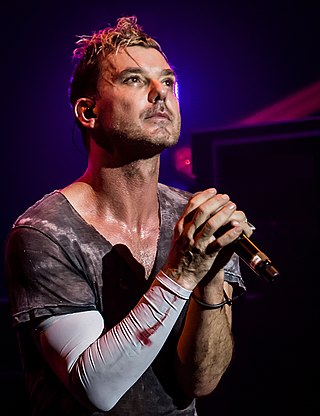
Gavin McGregor Rossdale is an English guitarist and actor, best known as the lead singer and rhythm guitarist of the rock band Bush. He helped form Bush in 1992; on the band's separation in 2002, he became the lead singer and guitarist for Institute and later began a solo career. He resumed his role in Bush when the band reunited in 2010. In 2013, he received the British Academy's Ivor Novello Award for International Achievement.
Arthur M. Schlesinger, Sr., American historian and author (b. 1888) deaths

Arthur Meier Schlesinger Sr. was an American historian who taught at Harvard University, pioneering social history and urban history. He was a Progressive Era intellectual who stressed material causes and downplayed ideology and values as motivations for historical actors. He was highly influential as a director of PhD dissertations at Harvard for three decades, especially in the fields of social, women's, and immigration history. His son, Arthur M. Schlesinger Jr. (1917–2007), also taught at Harvard and was a noted historian.
Adnan Al Talyani, Emirati footballer births

Adnan Khamis Mohammed Obaid Al-Talyani Al Suwaidi is a retired footballer from the United Arab Emirates who played as a forward in the UAE Football League club Al Shaab and the United Arab Emirates national team. for which he is one of the best football players in the UAE and one of the best goal scorers in the history of the UAE League and the national team.
Humayun Kabir Dhali, Bangladeshi journalist and author births
Humayun Kabir Dhali is an author and journalist from Bangladesh.
Howard Lederer, American poker player births

Howard Henry Lederer is an American professional poker player. He has won two World Series of Poker bracelets and holds two World Poker Tour titles. Lederer has also contributed to several books on poker strategy and has provided commentary for poker programming. He is known by poker fans and players as "The Professor" and is the older brother of professional poker player Annie Duke.
Michael Beach, American actor and producer births

Michael Anthony Beach is an American actor. He has appeared in films Lean on Me (1989), One False Move (1992), Short Cuts (1993), Waiting to Exhale (1995), A Family Thing (1996), Soul Food (1997), and Aquaman (2018). On television, he played Al Boulet on the NBC medical drama ER from 1995 to 1997. From 1999 to 2005, Beach was a regular cast member in another NBC drama series, Third Watch, as Monte Parker, and as T.O. Cross in FX's Sons of Anarchy.
Rebecca Heineman, American video game designer and programmer births

Rebecca Ann Heineman is an American video game designer and programmer. Heineman was a founding member of video game companies Interplay Productions, Logicware, Contraband Entertainment, and Olde Sküül. She has been chief executive officer for Olde Sküül since 2013.
Andrew Solomon, American-English journalist and author births

Andrew Solomon is a writer on politics, culture and psychology, who lives in New York City and London. He has written for The New York Times, The New Yorker, Artforum, Travel and Leisure, and other publications on a range of subjects, including depression, Soviet artists, the cultural rebirth of Afghanistan, Libyan politics, and Deaf politics.
Mike Veletta, Australian cricketer and coach births
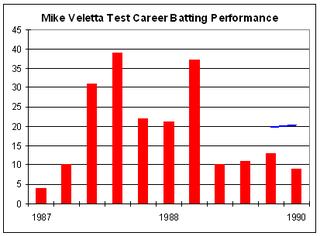
Michael Robert John Veletta is a former Australian cricketer.
Kristina Wagner, American actress births
Kristina Wagner is an American actress. She is sometimes credited by the name Kristina Malandro. She is best known for her role as Felicia Jones on the ABC soap opera General Hospital. She also briefly had a small role on the ABC series Hotel in the late 1980s.
U. Muthuramalingam Thevar, Indian lawyer and politician (b. 1908) deaths
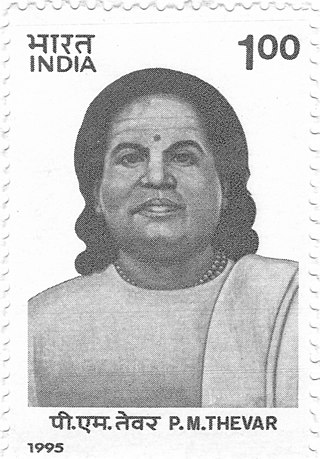
Ukkirapandi Muthuramalinga Thevar, also known as Pasumpon Muthuramalinga Thevar, was a Indian freedom struggle fighter, politician,patriarch of Thevar community and a close accomplice of Subash Chandra Bose from the state of Tamil Nadu, India. He was elected three times to the national Parliamentary Constituency. The birth anniversary of Muthuramalinga Thevar on October 30 is celebrated annually by the Thevar community in the southern districts of Tamil Nadu as Thevar Jayanthi.
Stefan Kuntz, German footballer and manager births
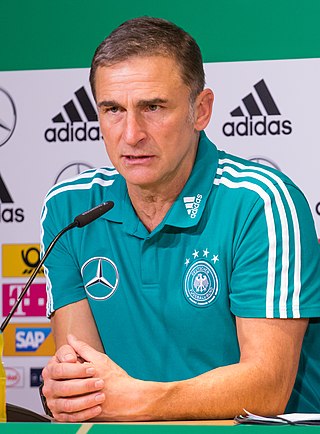
Stefan Kuntz is a German professional football manager and former player who played as a striker. He is the head coach of the Turkey national team.
Danny Tartabull, Puerto Rican baseball player births

Danilo Tartabull Mora is a Cuban–Puerto Rican former professional baseball right fielder and designated hitter. He played 14 seasons in Major League Baseball (MLB) for the Seattle Mariners (1984–1986), Kansas City Royals (1987–1991), New York Yankees (1992–1995), Oakland Athletics (1995), Chicago White Sox (1996), and Philadelphia Phillies (1997).
Courtney Walsh, Jamaican cricketer births
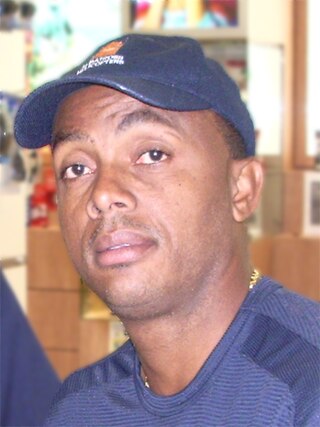
Courtney Andrew Walsh OJ is a former Jamaican cricketer who represented the West Indies from 1984 to 2001, captaining the West Indies in 22 Test matches. He is a fast bowler and considered one of the all time greats, best known for a remarkable opening bowling partnership along with fellow West Indian Curtly Ambrose for several years. Walsh played 132 Tests and 205 ODIs for the West Indies and took 519 and 227 wickets respectively. He shared 421 Test wickets with Ambrose in 49 matches. He held the record of most Test wickets from 2000, after he broke the record of Kapil Dev. This record was later broken in 2004 by Shane Warne. He was the first bowler to reach 500 wickets in Test cricket. His autobiography is entitled "Heart of the Lion". Walsh was named one of the Wisden Cricketers of the Year in 1987. In October 2010, he was inducted into the ICC Cricket Hall of Fame. He was appointed as the Specialist Bowling Coach of Bangladesh Cricket Team in August 2016.
Scott Garrelts, American baseball player births

Scott William Garrelts is a former Major League Baseball pitcher who played for the San Francisco Giants from 1982 to 1991. Garrelts's best year as a Giant came during the 1989 season, when he went 14-5 with a 2.28 ERA, leading his team to the World Series against their Bay Area rivals, the Oakland Athletics.
Giorgos Papakonstantinou, Greek economist and politician, Greek Minister of Finance births
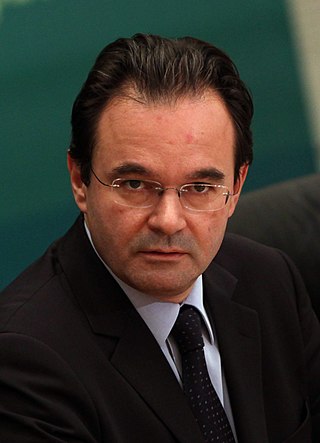
Giórgos Papakonstantínou in Athens, Greece, is a Greek economist and politician and former Minister for the Environment, Energy and Climate Change of Greece and former Minister for Finance. He is currently working in an advisory capacity in the private sector.

The Ministry of Finance is the government department responsible for Greece's public finances. The incumbent minister is Christos Staikouras of New Democracy.
Larry Wilmore, American comedian and television host births

Elister Larry Wilmore is an American comedian, writer, producer, and actor. He served as the "Senior Black Correspondent" on The Daily Show from 2006 to 2014, and hosted The Nightly Show with Larry Wilmore in 2015 and 2016. He is also the creator of the sitcom The Bernie Mac Show. He served as an executive producer for the ABC television series Black-ish, and is the co-creator, with Issa Rae, of the HBO television series Insecure. Since May 2017, he has hosted a podcast, Black on the Air, where he discusses current events and interviews guests. He is the host of the talk show Wilmore.
Luigi Einaudi, Italian economist and politician, 2nd President of the Italian Republic (b. 1874) deaths

Luigi Numa Lorenzo Einaudi was an Italian politician and economist. He served as the president of Italy from 1948 to 1955.
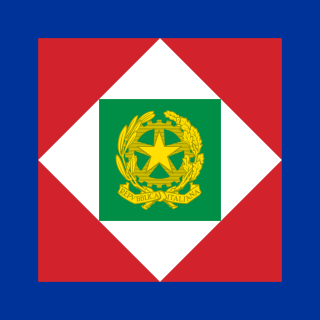
The president of Italy, officially denoted as president of the Italian Republic is the head of state of Italy. In that role, the president represents national unity, and guarantees that Italian politics comply with the Constitution. The president is the commander-in-chief of the Italian Armed Forces and chairs the High Council of the Judiciary. A president's term of office lasts for seven years. The incumbent president is former constitutional judge Sergio Mattarella, who was elected on 31 January 2015, and re-elected on 29 January 2022.
Charnele Brown, American actress and singer births
Karen Charnele Brown is an American actress, producer, writer, fashion designer and singer. Brown is perhaps best known for her role as Kimberly Reese on NBC comedy sitcom A Different World from 1988 until 1993.
Grayson Hugh, American singer-songwriter births
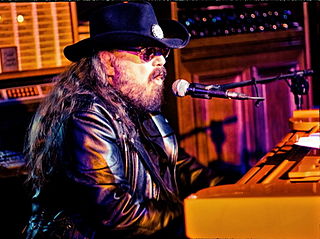
Grayson Hugh is an American singer-songwriter, pianist, Hammond B3 organ player and composer. He is best known for his 1988 hit "Talk It Over", and his other blue-eyed soul hits "Bring It All Back" and "How 'Bout Us?".
Diego Maradona, Argentinian footballer, coach, and manager (d. 2020) births

Diego Armando Maradona was an Argentine professional football player and manager. Widely regarded as one of the greatest players in the history of the sport, he was one of the two joint winners of the FIFA Player of the 20th Century award. Maradona's vision, passing, ball control, and dribbling skills were combined with his small stature, which gave him a low centre of gravity allowing him to manoeuvre better than most other players. His presence and leadership on the field had a great effect on his team's general performance, while he would often be singled out by the opposition. In addition to his creative abilities, he possessed an eye for goal and was known to be a free kick specialist. A precocious talent, Maradona was given the nickname "El Pibe de Oro", a name that stuck with him throughout his career. He also had a troubled off-field life and was banned in both 1991 and 1994 for abusing drugs.
Vincent Lagaf', French actor, singer, and game show host births

Vincent Rouil, better known as Vincent Lagaf', is a French humorist, TV presenter, singer and actor.
Olav Dale, Norwegian saxophonist and composer (d. 2014) births
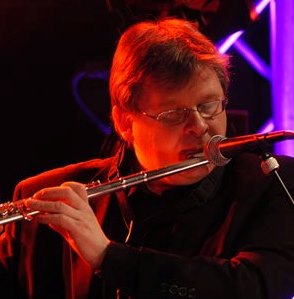
Olav Dale was a Norwegian composer, orchestra leader and jazz saxophonist. In addition to saxophone he played other woodwinds. He received little formal education in music, but he completed studies at the Voss Folk High School and the Toneheim Folk High School (1976–78).
Joe Delaney, American football player (d. 1983) births
Joe Alton Delaney was an American football running back who played two seasons in the National Football League (NFL). In his two seasons with the Kansas City Chiefs, Delaney set four franchise records that would stand for more than 20 years. His nephew is Terrace Marshall Jr.
Ramona d'Viola, American cyclist and photographer births
Ramona d'Viola is an American cyclist.
Shlomo Mintz, Israeli violinist and conductor births

Shlomo Mintz is an Israeli violin virtuoso, violinist and conductor. He regularly appears with orchestras and conductors on the international scene and is heard in recitals and chamber music concerts around the world.
Kevin Pollak, American actor, game show host, and producer births
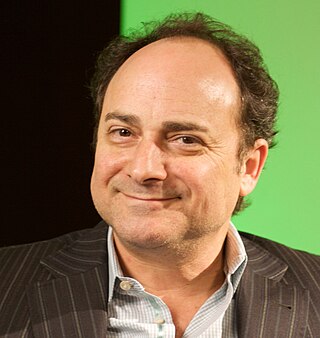
Kevin Elliot Pollak is an American actor, comedian, impressionist and podcast host. He has appeared in over 80 films; his roles include Sam Weinberg in Rob Reiner's legal film A Few Good Men, Jacob Goldman in Grumpy Old Men and its sequel Grumpier Old Men; Todd Hockney in The Usual Suspects, Phillip Green in Martin Scorsese's Casino, and Bobby Chicago in End of Days.
Fred Beebe, American baseball player and coach (b. 1880) deaths

Frederick Leonard Beebe was a professional baseball player. He played for the Chicago Cubs, St. Louis Cardinals, Cincinnati Reds, Philadelphia Phillies and Cleveland Indians.
Juliet Stevenson, English actress births
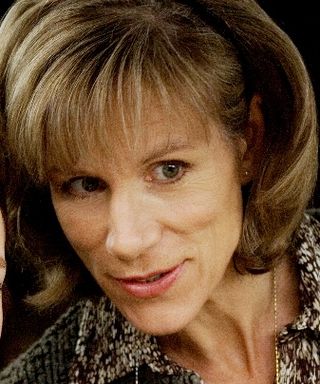
Juliet Anne Virginia Stevenson, is an English actor of stage and screen. She is known for her role in the film Truly, Madly, Deeply (1991), for which she was nominated for the BAFTA Award for Best Actress in a Leading Role. Her other film appearances include Emma (1996), Bend It Like Beckham (2002), Mona Lisa Smile (2003), Being Julia (2004) and Infamous (2006).
Heidi Heitkamp, American lawyer and politician, 28th Attorney General of North Dakota births

Mary Kathryn "Heidi" Heitkamp is an American politician who served as a United States senator from North Dakota from 2013 to 2019. A member of the North Dakota Democratic–Nonpartisan League Party, she was the first woman elected to the U.S. Senate from North Dakota. Heitkamp served as the 28th North Dakota attorney general from 1992 to 2000 and 20th North Dakota tax commissioner from 1986 to 1992. As of 2022, she is the last Democrat to have represented North Dakota in Congress, and the last to hold statewide office.

The North Dakota Attorney General is the chief legal officer of the North Dakota state government. The Attorney General's office represents the state government in court cases and issues opinions of points of law upon request. Drew Wrigley was appointed to the position on February 8, 2022, to finish the term of Wayne Stenehjem, who died in office.
Mahmoud El Khatib, Egyptian footballer births

Mahmoud Ibrahim Ibrahim El Khatib, popularly nicknamed Bibo, is an Egyptian retired footballer and current President of Al Ahly. He is widely regarded as one of the best players in African football history.
T. Graham Brown, American country singer-songwriter births

Anthony Graham Brown, known professionally as T. Graham Brown, is an American country music singer. Active since 1973, Brown has recorded a total of thirteen studio albums, and has charted more than twenty singles on the Billboard Hot Country Songs chart. Three of these singles — "Hell and High Water" and "Don't Go to Strangers" from 1986, and "Darlene" from 1988 — reached Number One, and eight more made Top Ten.
Jeannie Kendall, American country singer-songwriter births
The Kendalls were an American country music duo, consisting of Royce Kendall and his daughter Jeannie Kendall. Between the 1960s and 1990s, they released 16 albums on various labels, including five on Mercury Records. Between 1977 and 1985, 22 of their singles reached the top 40 on the Billboard country singles charts, including three number-one hits: "Heaven's Just a Sin Away", "Sweet Desire", and "Thank God for the Radio". Eight other singles also reached the top 10. The Kendalls continues performing today as Jeannie Kendall one of the original founding members joined by Carl Acuff Jr. with a newly released CD “You Got Me” in 2022 recorded on Leaping Hawk Record Label. Includes another hit from writer Jerry Gillespie ”Island In The Kitchen” and co writer Dan Willis. Jeannie Kendall is currently signed with Leaping Hawk Records in the Ozarks working with Bonnie and Rune Trulove.
Mario Testino, Peruvian-English photographer births

Mario Eduardo Testino Silva OBE HonFRPS is a Peruvian fashion and portrait photographer.
Pete Hoekstra, Dutch-American lawyer and politician births

Cornelis Piet "Pete" Hoekstra is a Dutch-American politician who served as the United States Ambassador to the Netherlands from January 10, 2018, to January 17, 2021. A member of the Republican Party, he previously served as the U.S. representative for Michigan's 2nd congressional district from 1993 to 2011.
Charles Martin Smith, American actor, director, and screenwriter births

Charles Martin Smith is an American actor, writer, and director of film and television, based in British Columbia. He is known for his roles in American Graffiti (1973), The Buddy Holly Story (1978), Never Cry Wolf (1983), Starman (1984), The Untouchables (1987), Deep Cover (1992), And the Band Played On (1993), Speechless (1994) and Deep Impact (1998).
Tony Bettenhausen Jr., American race car driver and businessman (d. 2000) births
Tony Lee Bettenhausen Jr. was a Champ Car team owner and driver who died in a 2000 plane crash. He was the son of former 14-time Indianapolis 500 competitor Tony Bettenhausen and the brother of 21-time Indy racer Gary Bettenhausen. Another brother, Merle Bettenhausen, was maimed in his only Indy Car start.
Trilok Gurtu, Indian drummer and songwriter births

Trilok Gurtu is an Indian percussionist and composer whose work has blended the music of India with jazz fusion and world music.
Harry Hamlin, American actor births

Harry Robinson Hamlin is an American actor, author, and entrepreneur. He is best known for his roles as Perseus in the 1981 fantasy film Clash of the Titans and as Michael Kuzak in the legal drama series L.A. Law, for which he received three Golden Globe nominations. For his recurring role as Jim Cutler on the AMC drama series Mad Men, Hamlin received a Primetime Emmy nomination for Outstanding Guest Actor in a Drama Series.
Poncho Sanchez, American singer and conga player births
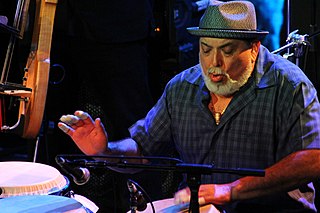
Poncho Sánchez is an American conguero, Latin jazz band leader, and salsa singer. In 2000, he and his ensemble won the Grammy Award for Best Latin Jazz Album for their work on the Concord Picante album Latin Soul. Sanchez has performed with artists including Cal Tjader, Mongo Santamaría, Hugh Masekela, Clare Fischer, and Tower of Power.

The conga, also known as tumbadora, is a tall, narrow, single-headed drum from Cuba. Congas are staved like barrels and classified into three types: quinto, tres dos or tres golpes (middle), and tumba or salidor (lowest). Congas were originally used in Afro-Cuban music genres such as conga and rumba, where each drummer would play a single drum. Following numerous innovations in conga drumming and construction during the mid-20th century, as well as its internationalization, it became increasingly common for drummers to play two or three drums. Congas have become a popular instrument in many forms of Latin music such as son, descarga, Afro-Cuban jazz, salsa, songo, merengue and Latin rock.
Tim Sheens, Australian rugby league player and coach births

Tim Sheens is an Australian professional rugby league football coach and former player. Head Coach of the Australia national team between 2009 and 2015, he has also been the head coach of National Rugby League (NRL) clubs, the Penrith Panthers, the Canberra Raiders, the North Queensland Cowboys and the Wests Tigers. As a player, Sheens was a prop forward with Sydney's Penrith club in the 1970s and 1980s before he retired and became their coach. Sheens returned to the Wests Tigers in 2021 as the Head of Football Operations.
Larry Gene Bell, American murderer (d. 1996) births
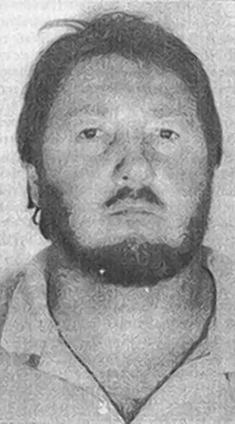
Larry Gene Bell was an American murderer and suspected serial killer in Lexington County, South Carolina, who was electrocuted for the murders of Sharon Faye "Shari" Smith and Debra May Helmick. Bell forced Smith to write a "Last Will and Testament" before he murdered her and taunted her family by telephone.
Richard Alston, English dancer and choreographer births
Sir Richard Alston CBE is a British choreographer. He has been resident choreographer and artistic director for the Ballet Rambert and is currently artistic director at The Place. Among his works should be mentioned “Windhover” (1972), “Soda Lake” and “Pulsinella” (1987).
Garry McDonald, Australian actor and screenwriter births
Garry George McDonald AO is an Australian actor, satirist and comedian. In a career spanning five decades he has had many theatre, television and film roles, and has been listed as a National Living Treasure. He is best known as the seemingly naive celebrity interviewer Norman Gunston, through whom he pioneered the "ambush interviewer" technique since followed by many others. He received a Gold Logie award for the television Norman Gunston Show in which he developed the character. He is also famed for his role of the hapless Arthur Beare in the television sitcom Mother and Son. Appointed an Officer of the Order of Australia in 2003 for service to the community in the mental health field and to the arts as an entertainer, he has also been a board member of the Australian mental health organisation Beyond Blue.
Glenn Andreotta, American soldier (d. 1968) births
Glenn Urban Andreotta was an American helicopter crew chief in the Vietnam War noted for being one of three who intervened in the Mỹ Lai massacre, in which 504 unarmed children, women and men were murdered.
Timothy B. Schmit, American singer-songwriter and bass player births

Timothy Bruce Schmit is an American musician, singer, and songwriter. He has performed as the bassist and vocalist for Poco and Eagles, having replaced bassist and vocalist Randy Meisner in both cases. Schmit has also worked for decades as a session musician and solo artist. In 1998, he was inducted into the Rock and Roll Hall of Fame as a member of Eagles.
Herschel Weingrod, American screenwriter and producer births
Herschel Alan Weingrod is an American screenwriter. He has written and co-written a number of Hollywood blockbusters including Trading Places, Twins, Kindergarten Cop and Space Jam with fellow writer Timothy Harris. His parents are of Jewish descent.
Robert L. Gibson, American captain, pilot, and astronaut births

Robert Lee "Hoot" Gibson, , is a former American naval officer and aviator, test pilot, and aeronautical engineer. A retired NASA astronaut, he also served as Chief of the Astronaut Office from 1992 to 1994. Today Gibson is active as a professional pilot, racing regularly at the annual Reno Air Races. He was inducted into the U.S. Astronaut Hall of Fame in 2003 and the National Aviation Hall of Fame in 2013, and has received several military decorations throughout his career.
Andrea Mitchell, American journalist births
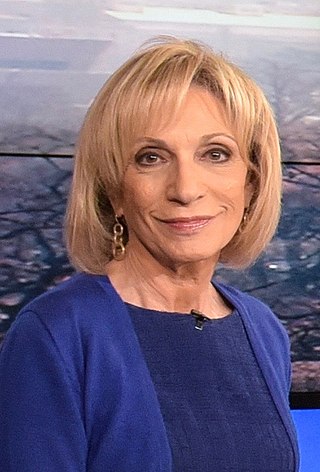
Andrea Mitchell is an American television journalist, anchor and commentator for NBC News, based in Washington, D.C.
Anthony Shorrocks, English economist, author, and academic births
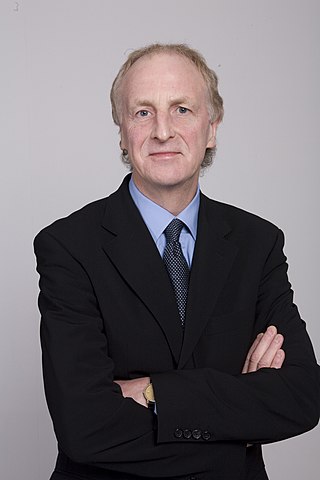
Anthony F. Shorrocks is a British development economist.
Chris Slade, Welsh drummer births
Chris Slade is a Welsh musician, best known for playing for the Australian rock band AC/DC. He drummed for the band from 1989 to 1994, performing on their 1990 album The Razors Edge along with their first live album with singer Brian Johnson, AC/DC Live. He returned to the band in February 2015 to replace Phil Rudd for the "Rock or Bust World Tour". Slade has also played with Manfred Mann's Earth Band, Tom Jones, Toomorrow, The Firm, and Asia.
Henry Winkler, American actor, comedian, director, and producer births

Henry Franklin Winkler, OBE, is an American actor, comedian, author, executive producer, and director. After rising to fame as Arthur "Fonzie" Fonzarelli on the American television series Happy Days, Winkler has distinguished himself as a character actor for roles such as Arthur Himbry in Scream, Coach Klein in The Waterboy, Barry Zuckerkorn in Arrested Development, Eddie R. Lawson in Royal Pains, Dr. Saperstein in Parks and Recreation, Fritz in Monsters at Work, Stanley Yelnats III in Holes, Uncle Joe in The French Dispatch, Al Pratt in Black Adam, and Gene Cousineau in Barry. In 2016, he also became a reality television star on the NBC series, Better Late Than Never. Winkler's accolades include a Primetime Emmy, two Daytime Emmys, two Golden Globe Awards, and a Critics Choice Award.
Ahmed Chalabi, Iraqi businessman and politician (d. 2015) births

Ahmed Abdel Hadi Chalabi was an Iraqi politician, a founder of the Iraqi National Congress (INC) who served as the President of the Governing Council of Iraq and a Deputy Prime Minister of Iraq under Ibrahim al-Jaafari.
Paul Claes, Belgian poet and translator births

Paul Claes is a Flemish scholar, writer, poet and translator.
Joanna Shimkus, Canadian actress births
Joanna Marie Poitier is a Canadian film actress. She is the widow of actor Sidney Poitier and mother of actress Sydney Tamiia Poitier.
David Triesman, Baron Triesman, English union leader and politician births

David Maxim Triesman, Baron Triesman is a British politician, merchant banker and former trade union leader.
Max Reinhardt, Austrian-born American actor and director (b. 1873) deaths

Max Reinhardt was an Austrian-born theatre and film director, intendant, and theatrical producer. With his innovative stage productions, he is regarded as one of the most prominent directors of German-language theatre in the early 20th century. In 1920, he established the Salzburg Festival with the performance of Hugo von Hofmannsthal's Jedermann.
Sven-David Sandström, Swedish composer and historian (d. 2019) births
Sven-David Sandström was a Swedish classical composer of operas, oratorios, ballets, and choral works, as well as orchestral works.
Walter Buckmaster, English polo player and stockbroker, co-founder of Buckmaster & Moore (b. 1872) deaths

Walter Selby Buckmaster was a British polo player in the 1900 Summer Olympics and in the 1908 Summer Olympics.
Buckmaster & Moore (B&M) was a London stockbroker established in 1895 and acquired by Credit Suisse Group in 1987.
Marcel Berlins, French-English lawyer, journalist, and academic (d. 2019) births
Marcel Berlins was a French-born lawyer, legal commentator, author, broadcaster and columnist. He was best known for his work in the United Kingdom, writing for British national newspapers The Times and The Guardian, presenting BBC Radio 4's legal programme Law in Action for 16 years, and teaching Media Law at City, University of London.
Aleksandr Dulichenko, Russian-Estonian linguist and academic births

Aleksandr Dmitrievich Dulichenko is a Russian-Estonian Esperantist, linguist, and an expert in Slavic microlanguages currently living in Estonia. He is a professor at the University of Tartu in Tartu, where he is the head of the department of Slavic studies.
Theodor W. Hänsch, German physicist and academic, Nobel Prize laureate births
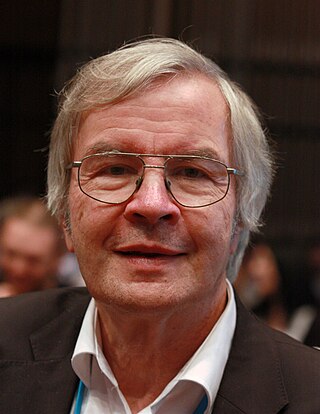
Theodor Wolfgang Hänsch is a German physicist. He received one-third of the 2005 Nobel Prize in Physics for "contributions to the development of laser-based precision spectroscopy, including the optical frequency comb technique", sharing the prize with John L. Hall and Roy J. Glauber.

The Nobel Prize in Physics is a yearly award given by the Royal Swedish Academy of Sciences for those who have made the most outstanding contributions for humankind in the field of physics. It is one of the five Nobel Prizes established by the will of Alfred Nobel in 1895 and awarded since 1901, the others being the Nobel Prize in Chemistry, Nobel Prize in Literature, Nobel Peace Prize, and Nobel Prize in Physiology or Medicine. Physics is traditionally the first award presented in the Nobel Prize ceremony.
Otis Williams, American singer-songwriter and producer births
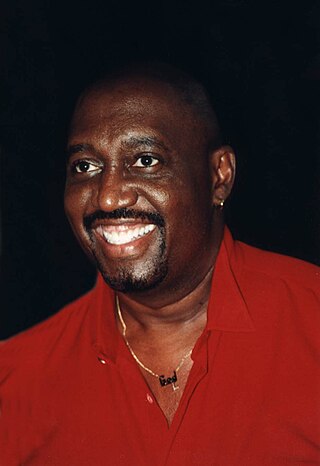
Otis Williams is an American baritone singer. He is occasionally also a songwriter and a record producer.
Bob Wilson, English footballer and sportscaster births

Robert Primrose "Bob" Wilson is a former Scotland international football goalkeeper and later broadcaster.
Harvey Goldstein, English statistician and academic (d. 2020) births
Harvey Goldstein was a British statistician known for his contributions to multilevel modelling methodology and software, and for applying this to educational assessment and league tables.
Leland H. Hartwell, American biologist and academic, Nobel Prize laureate births
Leland Harrison (Lee) Hartwell is former president and director of the Fred Hutchinson Cancer Research Center in Seattle, Washington. He shared the 2001 Nobel Prize in Physiology or Medicine with Paul Nurse and Tim Hunt, for their discoveries of protein molecules that control the division (duplication) of cells.

The Nobel Prize in Physiology or Medicine is awarded yearly by the Nobel Assembly at the Karolinska Institute for outstanding discoveries in physiology or medicine. The Nobel Prize is not a single prize, but five separate prizes that, according to Alfred Nobel's 1895 will, are awarded "to those who, during the preceding year, have conferred the greatest benefit to humankind". Nobel Prizes are awarded in the fields of Physics, Chemistry, Physiology or Medicine, Literature, and Peace.
Eddie Holland, American singer-songwriter and producer births
Edward Holland Jr. is an American singer, songwriter, and record producer.
Grace Slick, American singer-songwriter and model births

Grace Slick is an American singer-songwriter, artist, and painter. Slick was a key figure in San Francisco's early psychedelic music scene in the mid-1960s. With a music career spanning four decades, she first performed with The Great Society, but is best known for her work with Jefferson Airplane and the subsequent successor bands Jefferson Starship and Starship. Slick and Jefferson Airplane first achieved fame with their 1967 album Surrealistic Pillow, which included the top-ten Billboard hits "White Rabbit" and "Somebody to Love". She provided the lead vocals on both tracks. With Starship, she sang co-lead for two number one hits, "We Built This City" and "Nothing's Gonna Stop Us Now". She also released four solo albums. Slick retired from music in 1990, but continues to be active in the visual arts field. Slick was inducted into the Rock and Roll Hall of Fame in 1996 as a member of Jefferson Airplane.
Morris Lurie, Australian novelist, short story writer, and playwright (d. 2014) births
Moses "Morris" Lurie was an Australian writer of comic novels, short stories, essays, plays, and children's books. His work focused on the comic mishaps of Jewish-Australian men of Lurie's generation, who are invariably jazz fans.
Claude Lelouch, French actor, director, producer, and screenwriter births
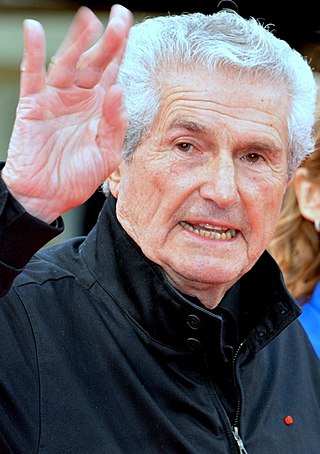
Claude Barruck Joseph Lelouch is a French film director, writer, cinematographer, actor and producer. Lelouch grew up in an Algerian Jewish Family. He emerged as a prominent director in the 1960s. Lelouch gained critical acclaim for his 1966 romantic melodrama film A Man and A Woman. At the 39th Academy Awards in 1967, A Man and a Woman won Best Original Screenplay and Best Foreign Language Film. Lelouch was also nominated for Best Director. While his films have gained him international recognition since the 1960s, Lelouch's methods and style of film are known for attracting criticism.
Brian Price, Welsh rugby player births
Brian Price is a former Wales international rugby union player. Price first played international rugby for Wales in 1961 after impressing in the Barbarians squad against South African. He was selected for the 1966 British Lions tour of Australia and New Zealand playing in all four tests, and spent the majority of his career playing at club level for Newport. A teacher by profession he later became a journalist and aports presenter for radio and television. In 2006 he became President of the Former Player Association.
Polina Astakhova, Ukrainian gymnast and trainer (d. 2005) births
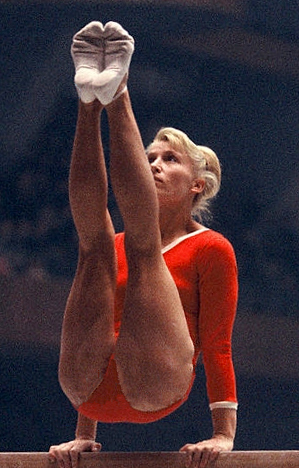
Polina Ghrighorievna Astakhova was a Soviet and Ukrainian artistic gymnast. She won ten medals at the 1956, 1960 and 1964 Summer Olympics.
Dick Vermeil, American football player and coach births
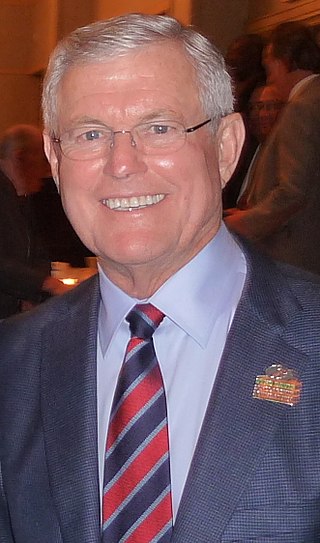
Richard Albert Vermeil is a former American football coach who served as a head coach in the National Football League (NFL) for 15 seasons. He was the head coach of the Philadelphia Eagles for seven seasons, the St. Louis Rams for three, and the Kansas City Chiefs for five. Prior to the NFL, he was the head football coach at Hillsdale High School from 1960 to 1962, Napa Junior College in 1964, and UCLA from 1974 to 1975. With UCLA, Vermeil led the team to victory in the 1976 Rose Bowl. Vermeil's NFL tenure would see him improve the fortunes of teams that had a losing record before he arrived and bring them all to the playoffs by his third season, which included a Super Bowl title with the Rams.
Robert Caro, American journalist and author births
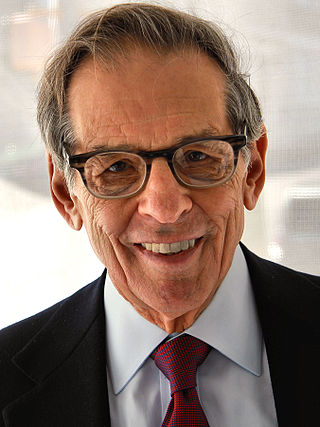
Robert Allan Caro is an American journalist and author known for his biographies of United States political figures Robert Moses and Lyndon B. Johnson.
Ágota Kristóf, Hungarian-Swiss author (d. 2011) births
Ágota Kristóf was a Hungarian writer who lived in Switzerland and wrote in French. Kristof received the European prize for French literature for The Notebook (1986). She won the 2001 Gottfried Keller Award in Switzerland and the Austrian State Prize for European Literature in 2008.
Jim Perry, American baseball player births
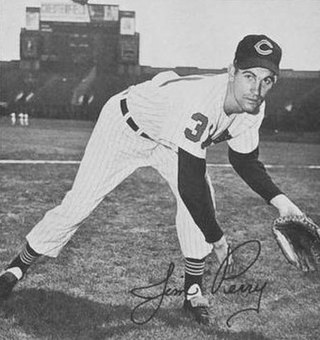
James Evan Perry, Jr. is an American former Major League Baseball pitcher. He pitched from 1959 to 1975 for four teams. During a 17-year baseball career, Perry compiled 215 wins, 1,576 strikeouts, and a 3.45 earned run average.
Michael Winner, English director, producer, and screenwriter (d. 2013) births
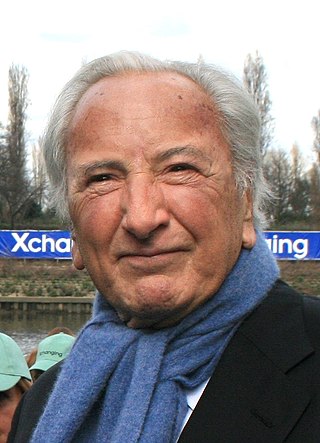
Robert Michael Winner was a British filmmaker, writer, and media personality. He is known for directing numerous action, thriller, and black comedy films in the 1960s, 1970s and 1980s, including several collaborations with actors Oliver Reed and Charles Bronson.
Keith Barnes, Welsh-Australian rugby player and coach births
William Keith Barnes AM, also known by the nickname of "Golden Boots", is a Welsh-born Australian former rugby league footballer who played in the 1950s and 1960s, and coached in the 1960s, 1970s and 1980s. He was a fullback for the Australian national team and for the Balmain Tigers. He played in 14 Tests between 1959 and 1966, as national captain on 12 occasions. He was known as "Golden Boots" due to his exceptional goal-kicking ability. After his playing days he became a referee and later co-commentated on the Amco Cup on Network Ten with Ray Warren in the 1970s. He is considered one of the nation's finest footballers of the 20th century.
Frans Brüggen, Dutch flute player and conductor (d. 2014) births

Franciscus ("Frans") Jozef Brüggen was a Dutch conductor, recorder player and baroque flautist.
Col Campbell, New Zealand gardener and television host (d. 2012) births
Colin "Col" Campbell was a presenter on Gardening Australia, a TV show on the Australian Broadcasting Corporation. He was also a presenter on Brisbane radio station 4BC as the "Gardening Guru" of weekend mornings, in which he answered a wide range of questions from callers. Campbell began his radio career in 1983, television in 1985 and newspaper in 1991.
Svend Kornbeck, Danish actor (b. 1869) deaths
Svend Kornbeck was a Danish stage and film actor.
Barun De, Indian historian and author (d. 2013) births
Barun De was an Indian historian. He served as the first professor of social and economic history of the Indian Institute of Management, Calcutta, founder-director of the Centre for Studies in Social Sciences, Calcutta and the Maulana Abul Kalam Azad Institute of Asian Studies, Kolkata and as the honorary state editor for the West Bengal District Gazetteers. He was chairman of the West Bengal Heritage Commission.
Louis Malle, French director, producer, and screenwriter (d. 1995) births
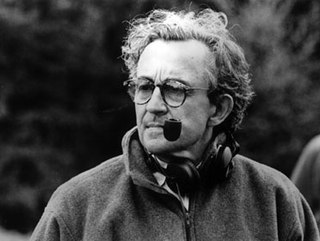
Louis Marie Malle was a French film director, screenwriter, and producer who worked in both French cinema and Hollywood. Described as "eclectic" and "a filmmaker difficult to pin down," Malle's filmography encompassed a variety genres ranging from documentaries, to romances, to period dramas, and thrillers; often detailing provocative or controversial subject matter.
Vince Callahan, American lieutenant and politician (d. 2014) births

Vincent Francis Callahan Jr. was an American politician who served for 40 years as a member of the Virginia House of Delegates. From January 1968 to January 2008, he represented the 34th district, which covers McLean, Great Falls, Tysons Corner, and parts of Herndon and Vienna. At the time of his retirement, he was the longest-serving Republican in the Virginia General Assembly.
David M. Wilson, Manx archaeologist, historian, and curator births
Sir David Mackenzie Wilson, FBA is a British archaeologist, art historian, and museum curator, specialising in Anglo-Saxon art and the Viking Age. From 1977 until 1992 he served as the Director of the British Museum, where he had previously worked, from 1955 to 1964, as an assistant keeper. In his role as director of the museum, he became embroiled in the controversy over the ownership of the Elgin Marbles with the Greek government, engaging with a "disastrous" televised debate with Greek Minister of Culture Melina Mercouri.
Néstor Almendros, Spanish-American director and cinematographer (d. 1992) births
Néstor Almendros Cuyás, ASC was a Spanish cinematographer. One of the most highly appraised contemporary cinematographers, "Almendros was an artist of deep integrity, who believed the most beautiful light was natural light...he will always be remembered as a cinematographer of absolute truth...a true master of light".
Christopher Foster, English economist and academic births
Sir Christopher David Foster was a British academic at the University of Oxford and MIT, a professor of economics at the London School of Economics, a consultant at Coopers & Lybrand and PricewaterhouseCoopers, and a temporary civil servant.
Clifford Brown, American trumpet player and composer (d. 1956) births

Clifford Benjamin Brown was an American jazz trumpeter and composer. He died at the age of 25 in a car accident, leaving behind four years' worth of recordings. His compositions "Sandu", "Joy Spring", and "Daahoud" have become jazz standards. Brown won the DownBeat magazine Critics' Poll for New Star of the Year in 1954; he was inducted into the DownBeat Hall of Fame in 1972.
Don Meineke, American basketball player (d. 2013) births
Don "Monk" Meineke was an American professional basketball player.
Olga Zubarry, Argentinian actress (d. 2012) births

Olga Zubarry was a classic Argentine actress who appeared in film between 1943 and 1997. She made over 60 appearances in film, spanning 6 decades of Argentine cinema, but is best known for her work during the Golden Age of Argentine Cinema. Throughout the course of her career, she received four Silver Condor Awards, two Martín Fierro Awards, a Konex Foundation Award and several others for her films and television performances. She is credited with starring in the first film in Argentina which featured nudity, though only her back was shown and she stated repeatedly that she wore a flesh-colored mesh and was not truly nude.
Jean Chapman, English author births
Jean Chapman is a British writer of romance novels since 1981 and a lecturer in creative writing. Her debut novel The Unreasoning Earth and The Red Pavilion were both shortlisted for the Parker Pen Romantic Novel of the Year Award. She was elected the twenty Chairman (2001–2003) of the Romantic Novelists' Association and is the three-time President of the Leicester Writer's Club.
Norman Pritchard, Indian-English hurdler and actor (b. 1877) deaths

Norman Gilbert Pritchard, also known by his stage name Norman Trevor, was a British-Indian athlete and actor who became the first Asian-born athlete to win an Olympic medal when he won two silver medals in athletics at the 1900 Paris Olympics representing India. He won India's first medal at the Olympics in the 200 metres and the 200 metres hurdles.
Daniel Nathans, American microbiologist and academic, Nobel Prize laureate (d. 1999) births

Daniel Nathans was an American microbiologist. He shared the 1978 Nobel Prize in Physiology or Medicine for the discovery of restriction enzymes and their application in restriction mapping.

The Nobel Prize in Physiology or Medicine is awarded yearly by the Nobel Assembly at the Karolinska Institute for outstanding discoveries in physiology or medicine. The Nobel Prize is not a single prize, but five separate prizes that, according to Alfred Nobel's 1895 will, are awarded "to those who, during the preceding year, have conferred the greatest benefit to humankind". Nobel Prizes are awarded in the fields of Physics, Chemistry, Physiology or Medicine, Literature, and Peace.
Joe Adcock, American baseball player and manager (d. 1999) births

Joseph Wilbur Adcock was an American professional baseball player and manager. He played in Major League Baseball as a first baseman from 1950 to 1966, most prominently as a member of the Milwaukee Braves teams that won two consecutive National League pennants and won the 1957 World Series.
Jacques Swaters, Belgian race car driver and manager (d. 2010) births

Jacques Swaters was a racing driver from Belgium and former team owner of Ecurie Francorchamps and Ecurie Nationale Belge.
Tommy Ridgley, American singer and bandleader (d. 1999) births

Thomas Herman Ridgley was an American R&B singer, pianist, songwriter and bandleader in New Orleans, Louisiana. In a musical career lasting half a century Ridgley was a stalwart of the New Orleans rhythm and blues scene. Although he never had a national hit, unlike several of his contemporaries, he made numerous, popular recordings that sold mainly in New Orleans and Louisiana beginning in 1949 with a final release in 1995. His voice was variously described as similar to Roy Brown and Bull Moose Jackson and thus able to adapt to a variety of styles: Blues, Jump blues, Rhythm and Blues and Soul. In the late 50s he became bandleader of The Untouchables with whom he held residencies at important night venues often backing visiting artists. His recording career consisted of over forty singles and three albums. Most of his recordings have been anthologised on compilations in vinyl and CDs.
John P. Craven, American soldier and engineer (d. 2015) births
John Piña Craven was an American scientist who was known for his involvement with Bayesian search theory and the recovery of lost objects at sea. He was Chief Scientist of the Special Projects Office of the United States Navy.
Gloria Oden, American poet and academic (d. 2011) births
Gloria Catherine Oden was an American poet, editor and retired professor of English. She was nominated for the Pulitzer Prize in 1979 for Resurrections, a collection of poems that responded to the unsolved murder of her mother and sister in their home in Washington, D.C.
Bonar Law, Canadian-English banker and politician, Prime Minister of the United Kingdom (b. 1858) deaths

Andrew Bonar Law was a British Conservative politician who served as Prime Minister of the United Kingdom from October 1922 to May 1923.

The prime minister of the United Kingdom is the head of government of the United Kingdom. The prime minister advises the sovereign on the exercise of much of the royal prerogative, chairs the Cabinet and selects its ministers. As modern prime ministers hold office by virtue of their ability to command the confidence of the House of Commons, they sit as members of Parliament.
Jane White, American actress and singer (d. 2011) births
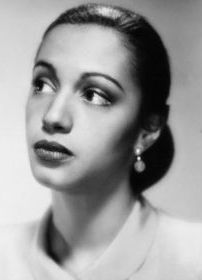
Jane White was an African-American actress. Born in New York City, she attended Smith College and The New School.
Iancu Țucărman, Romanian Holocaust survivor (d. 2021) births
Iancu Țucărman was a Romanian Jewish agricultural engineer and survivor of the Holocaust and the Iași pogrom. He was the penultimate survivor of the "Train of the Dead" that was used to deport Jews from the Iași railway station after Leonard Zăicescu. Țucărman was buried at the Giurgiului Jewish Cemetery of Bucharest on 11 January 2021.
Valli Lember-Bogatkina (d. 2016) births

Valli Lember-Bogatkina was known as "The Grand Old Lady of Estonian watercolor". Her works are exhibited in cities around the world.
Christy Ring, Irish sportsman (d. 1979) births

Nicholas Christopher Michael Ring was an Irish hurler whose league and championship career at senior level with the Cork county team spanned twenty-four years from 1939 to 1963. He established many championship records, including career appearances (65), scoring tally (33-208) and number of All-Ireland medals won (8); however, these records were subsequently bested by a number of players. Ring is widely regarded as one of the greatest hurlers in the history of the game, with many former players, commentators and fans rating him as the number one player of all time.
Ella Wheeler Wilcox, American author and poet (b. 1850) deaths

Ella Wheeler Wilcox was an American author and poet. Her works include the collection Poems of Passion and the poem "Solitude", which contains the lines "Laugh, and the world laughs with you; weep, and you weep alone." Her autobiography, The Worlds and I, was published in 1918, a year before her death.
Bobby Bragan, American baseball player, coach, and manager (d. 2010) births

Robert Randall Bragan was an American shortstop, catcher, manager, and coach in Major League Baseball and an influential minor league executive. His professional baseball career encompassed 73 years, from his first season as a player in the Class D Alabama–Florida League in 1937, to 2009, the last full year of his life, when he was still listed as a consultant to the Texas Rangers' organization.
Minni Nurme, Estonian writer and poet (d. 1994) births
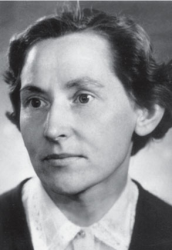
Minni Katharina Nurme was an Estonian writer.
Nikolai Ogarkov, Russian field marshal (d. 1994) births

Nikolai Vasilyevich Ogarkov was a prominent Soviet military personality. He was promoted to Marshal of the Soviet Union in 1977. Between 1977 and 1984, he was Chief of the General Staff of the USSR. He became widely known in the West when he became the Soviet military's spokesman following the shootdown of Korean Air Lines Flight 007 near Moneron Island in September 1983. He was dismissed as Chief of the General Staff on 6 September 1984.
Maurice Trintignant, French race car driver (d. 2005) births

Maurice Bienvenu Jean Paul Trintignant was a motor racing driver and vintner from France. He competed in the Formula One World Championship for fourteen years, between 1950 and 1964, one of the longest careers in the early years of Formula One. During this time he also competed in sports car racing, including winning the 1954 24 Hours of Le Mans race. Following his retirement from the track Trintignant concentrated on the wine trade.
Talbot Mercer Papineau, Canadian lawyer and soldier (b. 1883) deaths
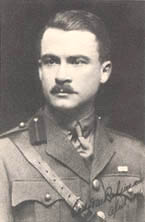
Major Talbot Mercer Papineau, MC was a lawyer and decorated soldier from Quebec, Canada.
Leon Day, American baseball player (d. 1995) births
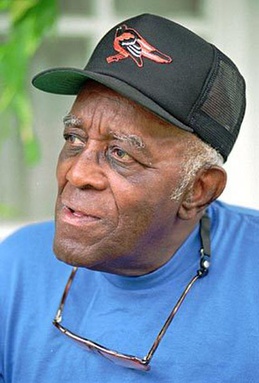
Leon Day was an American professional baseball pitcher who spent the majority of his career in the Negro leagues. Recognized as one of the most versatile athletes in the league during his prime, Day could play every position, with the exception of catcher, and often was the starting second baseman or center fielder when he was not on the mound. A right-handed pitcher with a trademark no wind-up delivery, Day excelled at striking batters out, especially with his high-speed fastball. At the same time, he was an above-average contact hitter, which, combined with his effectiveness as a baserunner and his tenacious fielding, helped cement Day as one of the most dynamic players of the era.
Fred W. Friendly, American journalist and producer (d. 1998) births

Fred W. Friendly was a president of CBS News and the creator, along with Edward R. Murrow, of the documentary television program See It Now. He originated the concept of public-access television cable TV channels.
Jane Randolph, American-Swiss actress and singer (d. 2009) births
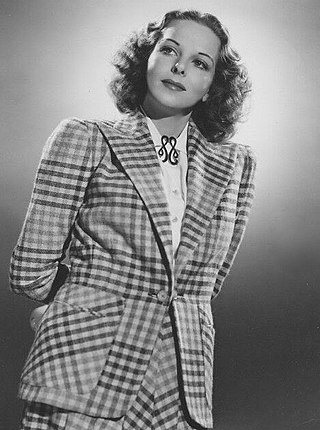
Jane Randolph, was an American film actress. She is best known for her portrayals of Alice Moore in the 1942 horror film Cat People, and its sequel, The Curse of the Cat People (1944). She was born in Youngstown, Ohio and died in Gstaad, Switzerland, in 2009.
Charles Tupper, Canadian physician, lawyer, and politician, 6th Prime Minister of Canada (b. 1821) deaths
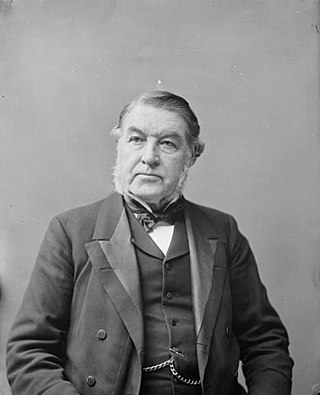
Sir Charles Tupper, 1st Baronet, was a Canadian Father of Confederation who served as the sixth prime minister of Canada from May 1 to July 8, 1896. As the premier of Nova Scotia from 1864 to 1867, he led Nova Scotia into Confederation. He briefly served as the Canadian prime minister, from seven days after parliament had been dissolved, until he resigned on July 8, 1896 following his party's loss in the 1896 Canadian federal election. His 69-day tenure as prime minister is the shortest in Canadian history.

The prime minister of Canada is the head of government of Canada. Under the Westminster system, the prime minister governs with the confidence of a majority the elected House of Commons; as such, the prime minister typically sits as a member of Parliament (MP) and leads the largest party or a coalition of parties. As first minister, the prime minister selects ministers to form the Cabinet, and serves as its chair. Constitutionally, the Crown exercises executive power on the advice of the Cabinet, which is collectively responsible to the House of Commons.
Richard E. Holz, American minister and composer (d. 1986) births
Richard E Holz, was an American brass band composer, served as Chaplain to the U.S. Air Force in New Guinea, Philippines and Japan. He married Ruby Walker in 1941. After the war, Holz was active in the Salvation Army.
Leabua Jonathan, Basotho lawyer and politician, 2nd Prime Minister of Lesotho (d. 1987) births

Joseph Leabua Jonathan was the second prime minister of Lesotho. He succeeded Chief Sekhonyana Nehemia Maseribane following a by-election and held that post from 1965 to 1986.

This is a list of prime ministers of Lesotho since the formation of the post of Prime Minister of Lesotho in 1965, to the present day.
Anna Wing, English actress (d. 2013) births

Anna Eva Lydia Catherine Wing was an English actress who had a long career in television and theatre, known for portraying the role of Beale family matriarch Lou Beale in the BBC soap opera EastEnders.
Alejandro Gorostiaga, Chilean colonel (b. 1840) deaths
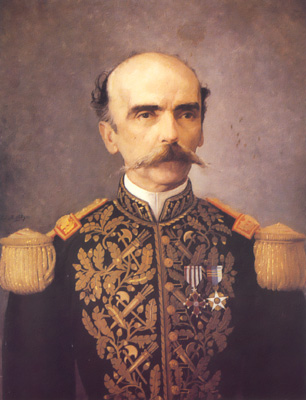
Alejandro Gorostiaga Orrego, was a Chilean military officer born in La Serena. He joined the Escuela Militar de Chile in 1857 until his retirement in 1878. Alejandro Gorostiaga was of Basque descent.
James S. Sherman, American lawyer and politician, 27th Vice President of the United States (b. 1855) deaths
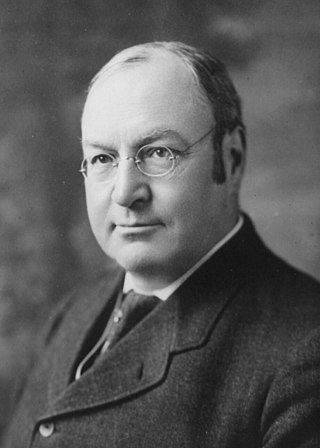
James Schoolcraft Sherman was an American politician who was a United States representative from New York from 1887 to 1891 and 1893 to 1909, and the 27th vice president of the United States under President William Howard Taft from 1909 until his death in 1912. He was a member of the interrelated Baldwin, Hoar, and Sherman families, prominent lawyers and politicians of New England and New York.

The vice president of the United States (VPOTUS) is the second-highest officer in the executive branch of the U.S. federal government, after the president of the United States, and ranks first in the presidential line of succession. The vice president is also an officer in the legislative branch, as the president of the Senate. In this capacity, the vice president is empowered to preside over Senate deliberations at any time, but may not vote except to cast a tie-breaking vote. The vice president is indirectly elected together with the president to a four-year term of office by the people of the United States through the Electoral College.
Ruth Hussey, American actress (d. 2005) births

Ruth Carol Hussey was an American actress best known for her Academy Award-nominated role as photographer Elizabeth Imbrie in The Philadelphia Story.
Luciano Sgrizzi, Italian-Monegasque organist and composer (d. 1994) births
Luciano Sgrizzi was an Italian harpsichordist, organist, pianist and composer.
Miguel Hernández, Spanish poet and playwright (d. 1942) births

Miguel Hernández Gilabert was a 20th-century Spanish-language poet and playwright associated with the Generation of '27 and the Generation of '36 movements. Born and raised in a family of low resources, he was self-taught in what refers to literature, and struggled against an unfavourable environment to build up his intellectual education, such as a father who physically abused him for spending time with books instead of working, and who took him out of school as soon as he finished his primary education. At school, he became a friend of Ramón Sijé, a well-educated boy who lent and recommended books to Hernández, and whose death would inspire his most famous poem, Elegy.
Henry Dunant, Swiss activist, founded the Red Cross, Nobel Prize laureate (b. 1828) deaths

Henry Dunant, also known as Henri Dunant, was a Swiss humanitarian, businessman, and social activist. He was the visionary, promoter, and co-founder of the Red Cross. In 1901, he received the first Nobel Peace Prize together with Frédéric Passy. Dunant was the first Swiss Nobel laureate.

The International Red Cross and Red Crescent Movement is a humanitarian movement with approximately 97 million volunteers, members and staff worldwide. It was founded to protect human life and health, to ensure respect for all human beings, and to prevent and alleviate human suffering. Within it there are three distinct organisations that are legally independent from each other, but are united within the movement through common basic principles, objectives, symbols, statutes and governing organisations.

The Nobel Peace Prize is one of the five Nobel Prizes established by the will of Swedish industrialist, inventor and armaments manufacturer Alfred Nobel, along with the prizes in Chemistry, Physics, Physiology or Medicine and Literature. Since March 1901, it has been awarded annually to those who have "done the most or the best work for fraternity between nations, for the abolition or reduction of standing armies and for the holding and promotion of peace congresses".
Homi J. Bhabha, Indian-French physicist and academic (d. 1966) births

Homi Jehangir Bhabha, was an Indian nuclear physicist, founding director, and professor of physics at the Tata Institute of Fundamental Research (TIFR). Colloquially known as "Father of Indian nuclear programme", Bhabha was also the founding director of the Atomic Energy Establishment, Trombay (AEET) which is now named the Bhabha Atomic Research Centre in his honour. TIFR and AEET were the cornerstone of Indian development of nuclear weapons which Bhabha also supervised as director.
Patsy Montana, American singer-songwriter and actress (d. 1996) births

Rubye Rose Blevins, known professionally as Patsy Montana, was an American country music singer, songwriter and actress. Montana was the first female country performer to have a million-selling single with her signature song "I Want to Be a Cowboy's Sweetheart", and is a member of the Country Music Hall of Fame.
U. Muthuramalingam Thevar, Indian politician (d. 1963) births

Ukkirapandi Muthuramalinga Thevar, also known as Pasumpon Muthuramalinga Thevar, was a Indian freedom struggle fighter, politician,patriarch of Thevar community and a close accomplice of Subash Chandra Bose from the state of Tamil Nadu, India. He was elected three times to the national Parliamentary Constituency. The birth anniversary of Muthuramalinga Thevar on October 30 is celebrated annually by the Thevar community in the southern districts of Tamil Nadu as Thevar Jayanthi.
Peter Smith, English cricketer (d. 1967) births

Thomas Peter Bromley Smith was an English cricketer, who played for Essex and England. Smith was one of the five Wisden Cricketers of the Year in 1947. An all-rounder, Smith played for Essex from 1929 to 1951.
Dmitry Ustinov, Marshal of the Soviet Union (d. 1984) births

Dmitriy Fyodorovich Ustinov was a Marshal of the Soviet Union and Soviet politician during the Cold War. He served as a Central Committee secretary in charge of the Soviet military–industrial complex from 1965 to 1976 and as Minister of Defence of the Soviet Union from 1976 until his death in 1984.
Marshal of the Soviet Union was the highest military rank of the Soviet Union.
Sol Tax, American anthropologist and academic (d. 1995) births
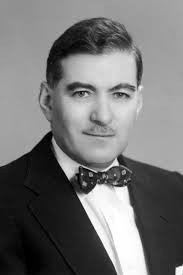
Sol Tax was an American anthropologist. He is best known for creating action anthropology and his studies of the Meskwaki, or Fox, Indians, for "action-anthropological" research titled the Fox Project, and for founding the academic journal Current Anthropology. He received his doctorate from the University of Chicago in 1935 and, together with Fred Eggan, was a student of Alfred Radcliffe-Brown.
Giuseppe Farina, Italian race car driver (d. 1966) births

Emilio Giuseppe Farina, also known as Giuseppe Antonio "Nino" Farina, was an Italian racing driver and first official Formula One World Champion. He gained the title in 1950. He was the Italian Champion in 1937, 1938 and 1939.
Hermann Fegelein, German general (d. 1945) births
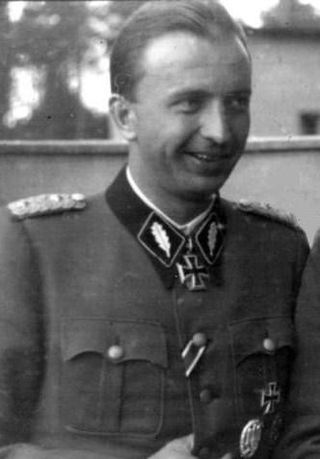
Hans Otto Georg Hermann Fegelein was a high-ranking commander in the Waffen-SS of Nazi Germany. He was a member of Adolf Hitler's entourage and brother-in-law to Eva Braun through his marriage to her sister Gretl.
Alexander Gode, German-American linguist and translator (d. 1970) births
Alexander Gottfried Friedrich Gode-von Aesch was a German-born American linguist, translator and the driving force behind the creation of the auxiliary language Interlingua.
Johnny Miles, English-Canadian runner (d. 2003) births

John C. Miles, was a Canadian marathon runner. He won the Boston Marathon in 1926 and 1929.
Boyd Dunlop Morehead, Australian politician, 10th Premier of Queensland (b. 1843) deaths

Boyd Dunlop Morehead was a politician in Queensland, Australia. He was Premier of Queensland from November 1888 to June 1890.

The premier of Queensland is the head of government in the Australian state of Queensland.
Ragnar Granit, Finnish-Swedish physiologist and academic, Nobel Prize laureate (d. 1991) births

Ragnar Arthur Granit was a Finnish-Swedish scientist who was awarded the Nobel Prize in Physiology or Medicine in 1967 along with Haldan Keffer Hartline and George Wald "for their discoveries concerning the primary physiological and chemical visual processes in the eye".

The Nobel Prize in Physiology or Medicine is awarded yearly by the Nobel Assembly at the Karolinska Institute for outstanding discoveries in physiology or medicine. The Nobel Prize is not a single prize, but five separate prizes that, according to Alfred Nobel's 1895 will, are awarded "to those who, during the preceding year, have conferred the greatest benefit to humankind". Nobel Prizes are awarded in the fields of Physics, Chemistry, Physiology or Medicine, Literature, and Peace.
William H. Webb, American shipbuilder and philanthropist (b. 1816) deaths
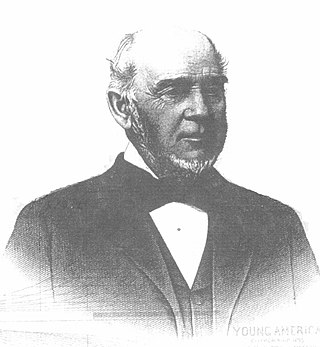
William Henry Webb was a 19th-century New York City shipbuilder and philanthropist, who has been called America's first true naval architect.
Bill Terry, American baseball player and manager (d. 1989) births

William Harold Terry was an American professional baseball first baseman and manager. He played in Major League Baseball (MLB) for the New York Giants from 1923 to 1936 and managed the Giants from 1932 to 1941. Terry was inducted into the Baseball Hall of Fame in 1954. In 1999, he ranked number 59 on The Sporting News list of the 100 Greatest Baseball Players, and was a nominee for the Major League Baseball All-Century Team. The Giants retired Terry's uniform number 3 in 1984; it is posted on the facade of the upper deck in the left field corner of Oracle Park. Nicknamed "Memphis Bill", he is most remembered for being the last National League player to hit .400, a feat he accomplished by batting .401 in 1930.
Agustín Lara, Mexican singer-songwriter and actor (d. 1970) births

Ángel Agustín María Carlos Fausto Mariano Alfonso del Sagrado Corazón de Jesús Lara y Aguirre del Pino, known as Agustín Lara, was a Mexican composer and performer of songs and boleros. He is recognized as one of the most popular songwriters of his era. His work was widely appreciated not only in Mexico but also in Central and South America, the Caribbean and Spain. After his death, he has also been recognized in the United States, Italy and Japan.
Rex Cherryman, American actor (d. 1928) births

Rexford Raymond "Rex" Cherryman was an American actor of the stage and screen whose career was most prolific during the 1920s.
Ruth Gordon, American actress and screenwriter (d. 1985) births

Ruth Gordon Jones was an American actress, screenwriter, and playwright. She began her career performing on Broadway at age 19. Known for her nasal voice and distinctive personality, Gordon gained international recognition and critical acclaim for film roles that continued into her 70s and 80s. Her later work included performances in Rosemary's Baby (1968), What Ever Happened to Aunt Alice (1969), Where's Poppa? (1970), Harold and Maude (1971), Every Which Way but Loose (1978), and Any Which Way You Can (1980).
Kostas Karyotakis, Greek poet and educator (d. 1928) births
Kostas Karyotakis is considered one of the most representative Greek poets of the 1920s and one of the first poets to use iconoclastic themes in Greece. His poetry conveys a great deal of nature, imagery and traces of expressionism and surrealism. He also belongs to the Greek Lost Generation movement. The majority of Karyotakis' contemporaries viewed him in a dim light throughout his lifetime without a pragmatic accountability for their contemptuous views; for after his suicide, the majority began to revert to the view that he was indeed a great poet. He had a significant, almost disproportionately progressive influence on later Greek poets.
Harry R. Truman, American soldier (d. 1980) births
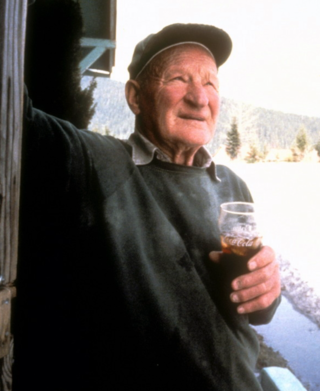
Harry R. Truman was an American businessman, bootlegger, and prospector. He lived near Mount St. Helens, an active volcano in the state of Washington, and was the owner and caretaker of Mount St. Helens Lodge at Spirit Lake near the base of the mountain. Truman came to fame as a folk hero in the months leading up to the volcano's 1980 eruption after refusing to leave his home despite evacuation orders. He was killed by a pyroclastic flow that overtook his lodge and buried the site under 150 ft (46 m) of volcanic debris.
Antonino Votto, Italian conductor (d. 1985) births

Antonino Votto, sometimes spelled Antonio Votto, was an Italian operatic conductor and vocal coach. Votto developed an extensive discography with the Teatro alla Scala in Milan during the 1950s, when EMI produced the bulk of its studio recordings featuring Maria Callas. Though Votto was a dependable conductor, critics frequently faulted his recordings for their lack of emotional immediacy. This may have been an occupational hazard of working in the studio, as his live sets with Callas, including a Norma and La sonnambula are considered to be great performances. Among his pupils was soprano Claudia Pinza Bozzolla.
Carol Benesch, Czech architect, designed Peleș Castle (b. 1822) deaths
Carol Benesch was a Silesian architect of Historicism and Eclecticism orientation established in the Kingdom of Romania.

Peleș Castle is a Neo-Renaissance castle in the Carpathian Mountains, near Sinaia, in Prahova County, Romania, on an existing medieval route linking Transylvania and Wallachia, built between 1873 and 1914. Its inauguration was held in 1883. It was constructed for King Carol I.
Gerhard Domagk, German pathologist and bacteriologist, Nobel Prize laureate (d. 1964) births

Gerhard Johannes Paul Domagk was a German pathologist and bacteriologist. He is credited with the discovery of sulfonamidochrysoidine (KL730) as an antibiotic for which he received the 1939 Nobel Prize in Physiology or Medicine. The drug became the first commercially available antibiotic and marketed under the brand name Prontosil.

The Nobel Prize in Physiology or Medicine is awarded yearly by the Nobel Assembly at the Karolinska Institute for outstanding discoveries in physiology or medicine. The Nobel Prize is not a single prize, but five separate prizes that, according to Alfred Nobel's 1895 will, are awarded "to those who, during the preceding year, have conferred the greatest benefit to humankind". Nobel Prizes are awarded in the fields of Physics, Chemistry, Physiology or Medicine, Literature, and Peace.
Dickinson W. Richards, American physician and physiologist, Nobel Prize laureate (d. 1973) births

Dickinson Woodruff Richards, Jr. was an American physician and physiologist. He was a co-recipient of the Nobel Prize in Physiology or Medicine in 1956 with André Cournand and Werner Forssmann for the development of cardiac catheterization and the characterisation of a number of cardiac diseases.

The Nobel Prize in Physiology or Medicine is awarded yearly by the Nobel Assembly at the Karolinska Institute for outstanding discoveries in physiology or medicine. The Nobel Prize is not a single prize, but five separate prizes that, according to Alfred Nobel's 1895 will, are awarded "to those who, during the preceding year, have conferred the greatest benefit to humankind". Nobel Prizes are awarded in the fields of Physics, Chemistry, Physiology or Medicine, Literature, and Peace.
James Patterson, English-Australian politician, 17th Premier of Victoria (b. 1833) deaths

Sir James Brown Patterson, was an Australian politician who served as premier of Victoria from 1893 to 1894.

The premier of Victoria is the head of government in the Australian state of Victoria. The premier is appointed by the governor of Victoria, and is the leader of the political party able to secure a majority in the Victorian Legislative Assembly.
Jean Rostand, French biologist and philosopher (d. 1977) births
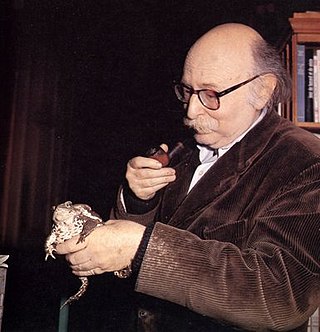
Jean Edmond Cyrus Rostand was a French biologist, historian of science, and philosopher.
Peter Warlock, English composer and critic (d. 1930) births

Philip Arnold Heseltine, known by the pseudonym Peter Warlock, was a British composer and music critic. The Warlock name, which reflects Heseltine's interest in occult practices, was used for all his published musical works. He is best known as a composer of songs and other vocal music; he also achieved notoriety in his lifetime through his unconventional and often scandalous lifestyle.
Honoré Mercier, Canadian lawyer and politician, 9th Premier of Quebec (b. 1840) deaths

Honoré Mercier was a Canadian lawyer, journalist and politician in Quebec. He was the ninth premier of Quebec from January 27, 1887, to December 21, 1891, as leader of the Parti National or Quebec Liberal Party (PLQ). He rose to power by mobilizing the Francophone opposition to the execution of Louis Riel, denouncing it as a betrayal by John A. Macdonald's Conservative government.

The premier of Quebec is the head of government of the Canadian province of Quebec. The current premier of Quebec is François Legault of the Coalition Avenir Québec, sworn in on October 18, 2018, following that year's election.
Charles Atlas, Italian-American bodybuilder (d. 1972) births

Charles Atlas was an Italian-born American bodybuilder best remembered as the developer of a bodybuilding method and its associated exercise program which spawned a landmark advertising campaign featuring his name and likeness; it has been described as one of the longest-lasting and most memorable ad campaigns of all time.
Roland Freisler, German soldier, lawyer, and judge (d. 1945) births

Roland Freisler, a German Nazi jurist, judge, and politician, served as the State Secretary of the Reich Ministry of Justice from 1934 to 1942 and as President of the People's Court from 1942 to 1945.
John Abbott, Canadian lawyer and politician, 3rd Prime Minister of Canada (b. 1821) deaths

Sir John Joseph Caldwell Abbott was a Canadian lawyer and politician who served as the third prime minister of Canada from 1891 to 1892. He held office as the leader of the Conservative Party.

The prime minister of Canada is the head of government of Canada. Under the Westminster system, the prime minister governs with the confidence of a majority the elected House of Commons; as such, the prime minister typically sits as a member of Parliament (MP) and leads the largest party or a coalition of parties. As first minister, the prime minister selects ministers to form the Cabinet, and serves as its chair. Constitutionally, the Crown exercises executive power on the advice of the Cabinet, which is collectively responsible to the House of Commons.
Louis Menges, American soccer player, soldier, and politician (d. 1969) births
Louis John Menges was an American politician, businessman, and amateur soccer player who competed in the 1904 Summer Olympics.
Konstantinos Tsiklitiras, Greek footballer and high jumper (d. 1913) births
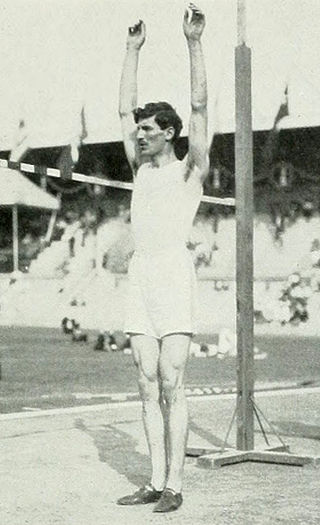
Konstantinos "Kostas" Tsiklitiras was a Greek athlete and Olympic champion.
Sukumar Ray, Indian-Bangladeshi author, poet, and playwright (d. 1923) births

Sukumar Ray was a Bengali writer and poet from the Indian subcontinent. He is remembered mainly for his writings for children. He was the son of children's story writer Upendrakishore Ray Chowdhury and the father of Indian filmmaker Satyajit Ray.
Zoë Akins, American author, poet, and playwright (d. 1958) births

Zoe Byrd Akins was an American playwright, poet, and author. She won the 1935 Pulitzer Prize for drama for The Old Maid.
Ezra Pound, American poet and critic (d. 1972) births
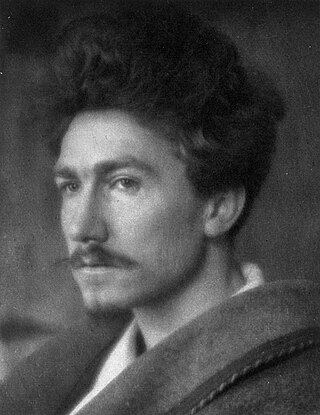
Ezra Weston Loomis Pound was an expatriate American poet and critic, a major figure in the early modernist poetry movement, and a fascist collaborator in Italy during World War II. His works include Ripostes (1912), Hugh Selwyn Mauberley (1920), and his 800-page epic poem, The Cantos (c. 1917–1962).
Dayananda Saraswati, Indian philosopher and scholar (b. 1824) deaths
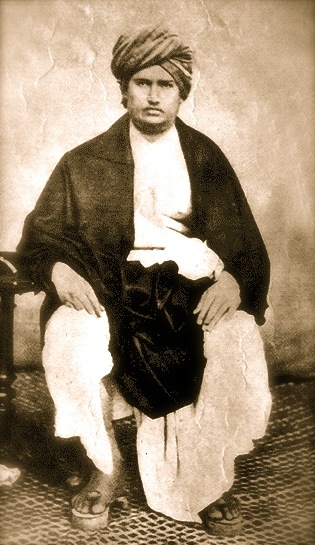
Dayanand Saraswati also known as Maharshi Dayanand is an Indian philosopher, social leader and founder of the Arya Samaj, a reform movement of the Vedic dharma. His Magnus Opus is the book Satyarth Prakash which has remained a highly influential text on the Philosophy of the Vedas and clarifications of various ideas and duties of Human Beings. He was the first to give the call for Swaraj as "India for Indians" in 1876, a call later taken up by Lokmanya Tilak. Denouncing the idolatry and ritualistic worship, he worked towards reviving Vedic ideologies. Subsequently, the philosopher and President of India, S. Radhakrishnan called him one of the "makers of Modern India", as did Sri Aurobindo.
Robert Volkmann, German pianist and composer (b. 1815) deaths
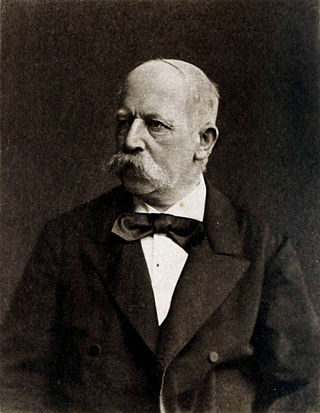
Friedrich Robert Volkmann was a German composer.
Oldřich Duras, Czech chess player and composer (d. 1957) births
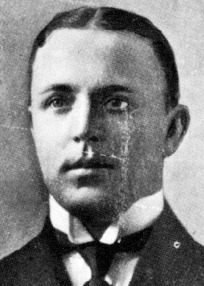
Oldřich Duras was a leading Czech chess master of the early 20th century. FIDE awarded him the title of International Grandmaster in 1950, when the title was first introduced, in recognition of his achievements in the early twentieth century. Duras retired from active play after 1914.
William Halsey Jr., American admiral (d. 1959) births

William Frederick "Bull" Halsey Jr. was an American Navy admiral during World War II. He is one of four officers to have attained the rank of five-star fleet admiral of the United States Navy, the others being William Leahy, Ernest King, and Chester W. Nimitz.
Günther von Kluge, Polish-German field marshal (d. 1944) births

Günther Adolf Ferdinand von Kluge was a German field marshal during World War II who held commands on both the Eastern and Western Fronts. He commanded the 4th Army of the Wehrmacht during the invasion of Poland in 1939 and the Battle of France in 1940, earning a promotion to Generalfeldmarschall. Kluge went on to command the 4th Army in Operation Barbarossa and the Battle for Moscow in 1941.
William Forster, Indian-Australian politician, 4th Premier of New South Wales (b. 1818) deaths

William Forster was a pastoral squatter, colonial British politician, Premier of New South Wales from 27 October 1859 to 9 March 1860, and poet.

The premier of New South Wales is the head of government in the state of New South Wales, Australia. The Government of New South Wales follows the Westminster Parliamentary System, with a Parliament of New South Wales acting as the legislature. The premier is appointed by the governor of New South Wales, and by modern convention holds office by his or her ability to command the support of a majority of members of the lower house of Parliament, the Legislative Assembly.
Elizabeth Madox Roberts, American poet and author (d. 1941) births
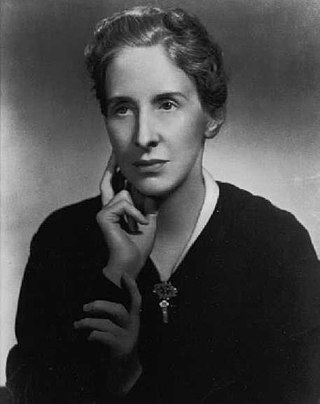
Elizabeth Madox Roberts was a Kentucky novelist and poet, primarily known for her novels and stories set in central Kentucky's Washington County, including The Time of Man (1926), "My Heart and My Flesh," The Great Meadow (1930) and A Buried Treasure (1931). All of her writings are characterized by her distinct, rhythmic prose. Robert Penn Warren called "The Time of Man" a classic; the eminent Southern critic and Southern Review editor Lewis P. Simpson counted her among the half dozen major Southern renascence writers. Three book-length studies of her work, three collections of critical articles, a major conference on her 100th birthday, a collection of her unpublished poems, and a flourishing Roberts Society that generates 20-odd papers at its annual April conferences have yet to revive wide interest in her work.
Arthur Scherbius, German electrical engineer, invented the Enigma machine (d. 1929) births

Arthur Scherbius was a German electrical engineer who invented the mechanical cipher Enigma machine. He patented the invention and later sold the machine under the brand name Enigma.
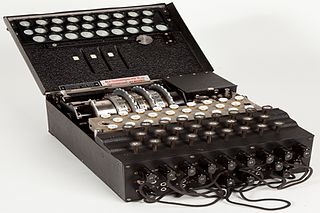
The Enigma machine is a cipher device developed and used in the early- to mid-20th century to protect commercial, diplomatic, and military communication. It was employed extensively by Nazi Germany during World War II, in all branches of the German military. The Enigma machine was considered so secure that it was used to encipher the most top-secret messages.
Hugo Celmiņš, Latvian politician, Prime Minister of Latvia (d. 1941) births

Hugo Celmiņš was a Latvian politician, a public employee, agronomist, twice the Prime Minister of Latvia. Arrested and deported to the USSR after the Soviet occupation of Latvia in 1940, imprisoned in Moscow's Lefortovo Prison. On 30 July 1941 shot and buried in the mass graves of Kommunarka shooting ground. Hugo Celmiņš was one of those who developed agrarian reform in Latvia.

The prime minister of Latvia is the most powerful member of the Government of Latvia, who presides over the Latvian Cabinet of Ministers. The officeholder is nominated by the president of Latvia, but must be able to obtain the support of a parliamentary majority in the Saeima.
Francisco I. Madero, Mexican businessman and politician, 33rd President of Mexico (d. 1913) births
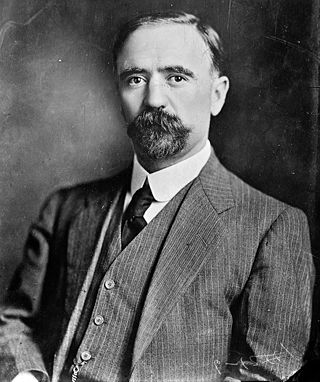
Francisco Ignacio Madero González was a Mexican businessman, revolutionary, writer and statesman, who became the 37th president of Mexico from 1911 until he was deposed in a coup d'etat in February 1913, and assassinated.
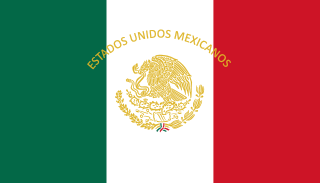
The president of Mexico, officially the president of the United Mexican States, is the head of state and head of government of Mexico. Under the Constitution of Mexico, the president heads the executive branch of the federal government and is the commander-in-chief of the Mexican Armed Forces. The current president is Andrés Manuel López Obrador, who took office on 1 December 2018.
Buck Freeman, American baseball player (d. 1949) births
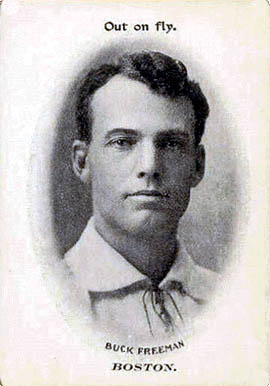
John Frank "Buck" Freeman was an American right fielder in Major League Baseball at the turn of the 20th century. Listed at 5 ft 9 in (1.75 m) and 169 lb (77 kg), he both batted and threw left-handed. Freeman was one of the top sluggers of his era, his most famous feat being the 25 home runs he hit during the 1899 season.
Paul Valéry, French poet and philosopher (d. 1945) births

Ambroise Paul Toussaint Jules Valéry was a French poet, essayist, and philosopher. In addition to his poetry and fiction, his interests included aphorisms on art, history, letters, music, and current events. Valéry was nominated for the Nobel Prize in Literature in 12 different years.
António Cabreira, Portuguese polygraph (d. 1953) births
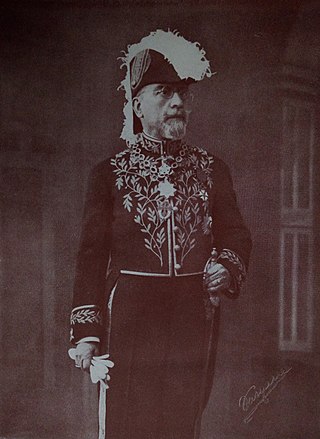
D. António Tomás da Guarda Cabreira de Faria e Alvelos Drago da Ponte was a Portuguese mathematician, polygraph and publicist. A member of the aristocratic Cabreira family, António Cabreira was a claimant to the Miguelist noble titles of Count of Lagos and Viscount of Vale da Mata, which he used.
Antoine Bourdelle, French sculptor and painter (d. 1929) births

Antoine Bourdelle, born Émile Antoine Bordelles, was an influential and prolific French sculptor and teacher. He was a student of Auguste Rodin, a teacher of Giacometti and Henri Matisse, and an important figure in the Art Deco movement and the transition from the Beaux-Arts style to modern sculpture.
Georges Gilles de la Tourette, French-Swiss physician and neurologist (d. 1904) births

Georges Albert Édouard Brutus Gilles de la Tourette was a French neurologist and the namesake of Tourette syndrome, a neurological condition characterized by tics. His main contributions in medicine were in the fields of hypnotism and hysteria.
Pietro Raimondi, Italian composer (b. 1786) deaths

Pietro Raimondi was an Italian composer, transitional between the Classical and Romantic eras. While he was famous at the time as a composer of operas and sacred music, he was also as an innovator in contrapuntal technique as well as in creation of gigantic musical simultaneities.
Allan Cunningham, Scottish author and poet (b. 1784) deaths
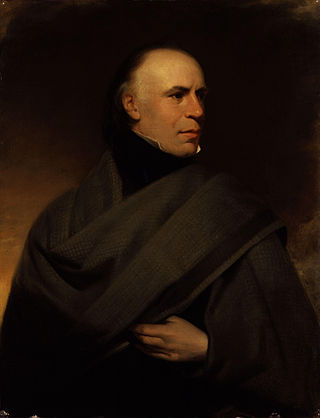
Allan Cunningham was a Scottish poet and author.
Alfred Sisley, French-English painter (d. 1899) births

Alfred Sisley was an Impressionist landscape painter who was born and spent most of his life in France, but retained British citizenship. He was the most consistent of the Impressionists in his dedication to painting landscape en plein air. He deviated into figure painting only rarely and, unlike Renoir and Pissarro, he found that Impressionism fulfilled his artistic needs.
Frederick I of Württemberg (b. 1754) deaths

Frederick I was the ruler of Württemberg from 1797 to his death. He was the last Duke of Württemberg from 1797 to 1803, then the first and only Elector of Württemberg from 1803 to 1806, before raising Württemberg to a kingdom in 1806 with the approval of Napoleon I. He was known for his size: at 2.12 m and about 200 kg (440 lb).
William Cavendish-Bentinck, 3rd Duke of Portland, English politician, Prime Minister of the United Kingdom (b. 1738) deaths

William Henry Cavendish Cavendish-Bentinck, 3rd Duke of Portland, was a British Whig and then a Tory politician during the late Georgian era. He served as Chancellor of the University of Oxford (1792–1809) and twice as Prime Minister of Great Britain (1783) and then of the United Kingdom (1807–1809). The gap of 26 years between his two terms as Prime Minister is the longest of any British Prime Minister. He was also the fourth great-grandfather of King Charles III through his great-granddaughter Cecilia Bowes-Lyon, Countess of Strathmore and Kinghorne.

The prime minister of the United Kingdom is the head of government of the United Kingdom. The prime minister advises the sovereign on the exercise of much of the royal prerogative, chairs the Cabinet and selects its ministers. As modern prime ministers hold office by virtue of their ability to command the confidence of the House of Commons, they sit as members of Parliament.
Ignace Bourget, Canadian bishop (d. 1885) births

Ignace Bourget was a Canadian Roman Catholic priest who held the title of Bishop of Montreal from 1840 to 1876. Born in Lévis, Quebec, in 1799, Bourget entered the clergy at an early age, undertook several courses of religious study, and in 1837 was named co-adjutor bishop of the newly created bishopric of Montreal. Following the death of Jean-Jacques Lartigue in 1840, Bourget became Bishop of Montreal.
Philippe-Joseph Aubert de Gaspé, Canadian captain and author (d. 1871) births

Philippe-Joseph Aubert de Gaspé was a Canadian lawyer, writer, and seigneur. He is known chiefly for his novel Les Anciens Canadiens, considered the first classic of French Canadian fiction.
André Chénier, Turkish-French poet and playwright (d. 1794) births

André Marie Chénier was a French poet of Greek and Franco-Levantine origin, associated with the events of the French Revolution of which he was a victim. His sensual, emotive poetry marks him as one of the precursors of the Romantic movement. His career was brought to an abrupt end when he was guillotined for supposed "crimes against the state", just three days before the end of the Reign of Terror. Chénier's life has been the subject of Umberto Giordano's opera Andrea Chénier and other works of art.
Osman III, Ottoman sultan (b. 1699) deaths

Osman III was the Sultan of the Ottoman Empire from 1754 to 1757.
Edward Vernon, English admiral and politician (b. 1684) deaths

Admiral Edward Vernon was an English naval officer. He had a long and distinguished career, rising to the rank of admiral after 46 years service. As a vice admiral during the War of Jenkins' Ear, in 1739 he was responsible for the capture of Porto Bello, seen as expunging the failure of Admiral Hosier there in a previous conflict. However, his amphibious operation against the Spanish port of Cartagena de Indias was a disastrous defeat. Vernon also served as a Member of Parliament (MP) on three occasions and was outspoken on naval matters in Parliament, making him a controversial figure.
Richard Brinsley Sheridan, Irish-English poet, playwright, and politician, Treasurer of the Navy (d. 1816) births

Richard Brinsley Butler Sheridan was an Irish satirist, a politician, a playwright, poet, and long-term owner of the London Theatre Royal, Drury Lane. He is known for his plays such as The Rivals, The School for Scandal, The Duenna and A Trip to Scarborough. He was also a Whig MP for 32 years in the British House of Commons for Stafford (1780–1806), Westminster (1806–1807), and Ilchester (1807–1812). He is buried at Poets' Corner in Westminster Abbey. His plays remain a central part of the canon and are regularly performed worldwide.

The Treasurer of the Navy, originally called Treasurer of Marine Causes or Paymaster of the Navy, was a civilian officer of the Royal Navy, one of the principal commissioners of the Navy Board responsible for naval finance from 1524 to 1832. The treasurer was based at the Navy Pay Office.
Angelica Kauffman, painter (d. 1807) births

Maria Anna Angelika Kauffmann, usually known in English as Angelica Kauffman, was a Swiss Neoclassical painter who had a successful career in London and Rome. Remembered primarily as a history painter, Kauffmann was a skilled portraitist, landscape and decoration painter. She was, along with Mary Moser, one of two female painters among the founding members of the Royal Academy in London in 1768.
John Adams, American lawyer and politician, 2nd President of the United States (d. 1826) births

John Adams was an American statesman, attorney, diplomat, writer, and Founding Father who served as the second president of the United States from 1797 to 1801. Before his presidency, he was a leader of the American Revolution that achieved independence from Great Britain, and during the war served as a diplomat in Europe. He was twice elected vice president, serving from 1789 to 1797 in a prestigious role with little power. Adams was a dedicated diarist and regularly corresponded with many important contemporaries, including his wife and adviser Abigail Adams as well as his friend and rival Thomas Jefferson.

The president of the United States (POTUS) is the head of state and head of government of the United States of America. The president directs the executive branch of the federal government and is the commander-in-chief of the United States Armed Forces.
Nedîm, Turkish poet (b. 1681) deaths

Ahmed Nedîm Efendi (نديم) (c. 1681 – 30 October 1730) was the pen name of one of the most celebrated Ottoman poets. He achieved his greatest fame during the reign of Ahmed III, the so-called Tulip Era from 1718 to 1730. He was known for his slightly decadent, even licentious poetry often couched in the most staid of classical formats, but also for bringing the folk poetic forms of türkü and şarkı into the court.
Mary Hayley, English businesswoman (d. 1808) births

Mary Hayley née Wilkes was an English businesswoman. She parlayed an inheritance from her first husband into a sizeable estate with her second husband. Upon the latter's death, she took over the business and successfully operated a shipping firm from 1781 to 1792 before living out her life in Bath.
Giovanni Pietro Francesco Agius de Soldanis, Maltese linguist, historian and cleric (d. 1770) births

Canon Giovanni Pietro Francesco Agius de Soldanis, often called de Soldanis, was a Maltese linguist, historian and cleric from the island of Gozo. He wrote the first lexicon and systematic grammar of the Maltese language, and he was the first librarian of the Bibliotheca Publica, the precursor of the National Library of Malta.
Hieronymus van Beverningh, Dutch diplomat and politician (b. 1614) deaths
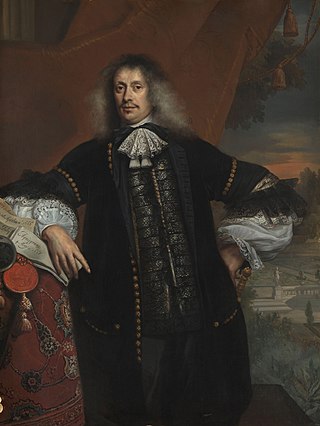
Hieronymus van Beverningh was a prominent Dutch regent, diplomat, amateur botanist, and patron of the arts, who lived during the Dutch Golden Age.
Michel Le Tellier, French lawyer and politician, French Secretary of State for War (b. 1603) deaths

Michel Le Tellier, marquis de Barbezieux, seigneur de Chaville et de Viroflay was a French statesman.

The Minister of the Armed Forces is the leader and most senior official of the French Ministry of the Armed Forces, tasked with running the French Armed Forces. The minister is the third highest civilian having authority over France's military, behind only the President of the Republic and the Prime Minister. Based on the governments, they may be assisted by a minister or state secretary for veterans' affairs.
Antoinette Bourignon, French-Flemish mystic (b. 1616) deaths

Antoinette Bourignon de la Porte was a French-Flemish mystic and adventurer. She taught that the end times would come soon and that the Last Judgment would then fall. Her belief was that she was chosen by God to restore true Christianity on earth and became the central figure of a spiritual network that extended beyond the borders of the Dutch Republic, including Holstein and Scotland. Bourignon's sect belonged to the spiritualist movements that have been characterized as the "third power".
Sophia Charlotte of Hanover (d. 1705) births

Sophia Charlotte of Hanover was the first Queen consort in Prussia as wife of King Frederick I. She was the only daughter of Elector Ernest Augustus of Hanover and his wife Sophia of the Palatinate. Her eldest brother, George Louis, succeeded to the British throne in 1714 as King George I.
Ernest August, Duke of Schleswig-Holstein-Sonderburg-Augustenburg (d. 1731) births

Ernest August, Duke of Schleswig-Holstein-Sonderburg-Augustenburg was the second son of Duke Ernest Günther and his wife Auguste.
Emperor Go-Kōmyō of Japan (b. 1633) deaths

Emperor Go-Kōmyō was the 110th emperor of Japan, according to the traditional order of succession.
Christopher Wren, English physicist, mathematician, and architect, designed St Paul's Cathedral (d. 1723) births

Sir Christopher Wren PRS FRS was one of the most highly acclaimed English architects in history, as well as an anatomist, astronomer, geometer, and mathematician-physicist. He was accorded responsibility for rebuilding 52 churches in the City of London after the Great Fire in 1666, including what is regarded as his masterpiece, St Paul's Cathedral, on Ludgate Hill, completed in 1710.

St Paul's Cathedral is an Anglican cathedral in London and is the seat of the Bishop of London. The cathedral serves as the mother church of the Diocese of London. It is on Ludgate Hill at the highest point of the City of London and is a Grade I listed building. Its dedication to Paul the Apostle dates back to the original church on this site, founded in AD 604. The present structure, dating from the late 17th century, was designed in the English Baroque style by Sir Christopher Wren. Its construction, completed in Wren's lifetime, was part of a major rebuilding programme in the city after the Great Fire of London. The earlier Gothic cathedral, largely destroyed in the Great Fire, was a central focus for medieval and early modern London, including Paul's walk and St Paul's Churchyard, being the site of St Paul's Cross.
Henri II de Montmorency, French admiral and politician (b. 1595) deaths
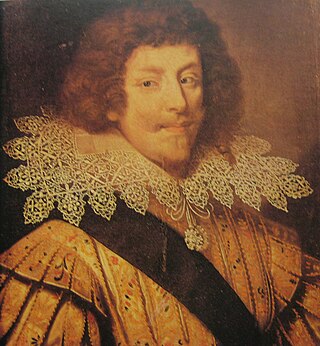
Henri II de Montmorency was a French nobleman and military commander.
Willebrord Snell, Dutch astronomer and mathematician (b. 1580) deaths
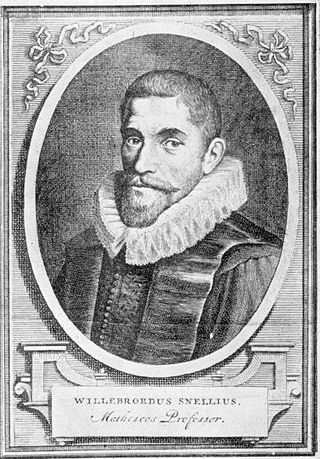
Willebrord Snellius was a Dutch astronomer and mathematician, AKA Snell. His name is usually associated with the law of refraction of light known as Snell's law.
Paul Pellisson, French historian and author (d. 1693) births

Paul Pellisson was a French author.
Charles IX of Sweden (b. 1550) deaths

Charles IX, also Carl, reigned as King of Sweden from 1604 until his death. He was the youngest son of King Gustav I and of his second wife, Margaret Leijonhufvud, the brother of King Eric XIV and of King John III, and the uncle of Sigismund, who became king both of Sweden and of Poland. By his father's will Charles received, by way of appanage, the Duchy of Södermanland, which included the provinces of Närke and Värmland; but he did not come into actual possession of them till after the fall of Eric and the succession to the throne of John in 1568.
Jean-Jacques Boissard, French poet and illustrator (b. 1528) deaths

Jean-Jacques Boissard was an antiquary and Neo-Latin poet.
Jacques-Nompar de Caumont, duc de La Force, Marshal of France (d. 1652) births

Jacques-Nompar de Caumont, duc de La Force was a Marshal of France and Peer of France. He was the son of a Huguenot, Francois de Caumont, lord of Castelnau, and Philippe de Beaupoil. He survived the St. Bartholomew's Day Massacre in 1572, but his father and older brother Armand were killed.
Jacob Sturm von Sturmeck, German politician (b. 1489) deaths

Jacob Sturm von Sturmeck was a German statesman, one of the preeminent promoters of the Protestant Reformation in Germany.
Jean Mouton, French composer and educator (b. 1459) deaths
Jean Mouton was a French composer of the Renaissance. He was famous both for his motets, which are among the most refined of the time, and for being the teacher of Adrian Willaert, one of the founders of the Venetian School.
Jacques Amyot, French bishop and translator (d. 1593) births
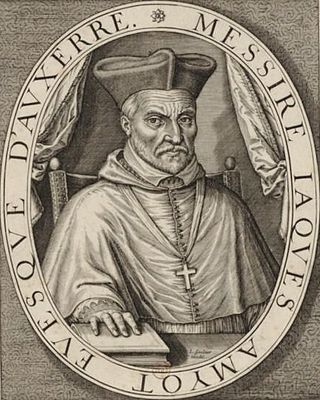
Jacques Amyot, French Renaissance bishop, scholar, writer and translator, was born of poor parents, at Melun.
Anne d'Alençon, French noblewoman (d. 1562) births

Anne d'Alençon, Lady of La Guerche, was a French noblewoman and a Marquise of Montferrat as the wife of William IX, Marquis of Montferrat. She acted as Regent of the Marquisate of Montferrat for her son, Boniface from 1518 to his death in 1530.
Johann Fust, German printer (b. c. 1400) deaths
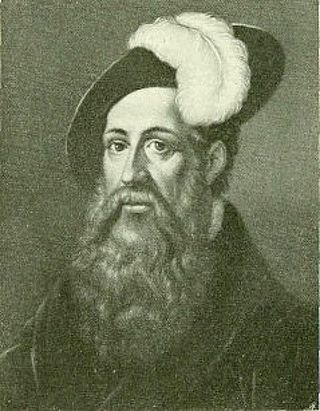
Johann Fust or Faust was an early German printer.
Poggio Bracciolini, Italian scholar and translator (b. 1380) deaths

Gian Francesco Poggio Bracciolini, usually referred to simply as Poggio Bracciolini, was an Italian scholar and an early Renaissance humanist. He was responsible for rediscovering and recovering many classical Latin manuscripts, mostly decaying and forgotten in German, Swiss, and French monastic libraries. His most celebrated finds are De rerum natura, the only surviving work by Lucretius, De architectura by Vitruvius, lost orations by Cicero such as Pro Sexto Roscio, Quintilian's Institutio Oratoria, Statius' Silvae, and Silius Italicus's Punica, as well as works by several minor authors such as Frontinus' De aquaeductu, Ammianus Marcellinus’ Res Gestae, Nonius Marcellus, Probus, Flavius Caper, and Eutyches.
Lucas Watzenrode, Prince-Bishop of Warmia (d. 1512) births
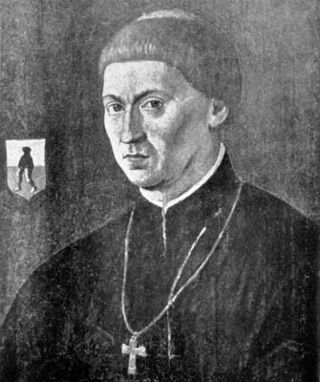
Lucas Watzenrode the Younger was Prince-Bishop of Warmia (Ermland) and patron to his nephew, astronomer Nicolaus Copernicus.
Andrew, Duke of Calabria (d. 1345) births

Andrew, Duke of Calabria was the first husband of Joanna I of Naples, and a son of Charles I of Hungary and brother of Louis I of Hungary.
Ibn Khallikan, Iraqi scholar and judge (b. 1211) deaths
Aḥmad bin Muḥammad bin Ibrāhīm bin Abū Bakr ibn Khallikān, better known as Ibn Khallikān, was a 13th century Shafi'i Islamic scholar who compiled the celebrated biographical encyclopedia of Muslim scholars and important men in Muslim history, Wafayāt al-Aʿyān wa-Anbāʾ Abnāʾ az-Zamān.
Emperor Chūkyō of Japan (d. 1234) births
Emperor Chūkyō was the 85th emperor of Japan, according to the traditional order of succession. His reign spanned only months in 1221, and he was not officially listed amongst the emperors until 1870 because of doubts caused by the length of his reign. The Imperial Household Agency recognizes Kujō no misasagi (九條陵) near Tōfuku-ji in Fushimi-ku, Kyoto as his tomb.
Sergius VII, Duke of Naples deaths

Sergius VII was the thirty-ninth and last duke of Naples. He succeeded his father John VI on the Neapolitan throne in 1122 at a time when Roger II of Sicily was rising rapidly in power. When Roger succeeded as duke of Apulia in 1127 and was crowned king in 1130, the fate of Naples hinged on Sergius' relations with the Sicilian court.
The Dukes of Naples were the military commanders of the ducatus Neapolitanus, a Byzantine outpost in Italy, one of the few remaining after the conquest of the Lombards. In 661, Emperor Constans II, highly interested in south Italian affairs, appointed a Neapolitan named Basil dux or magister militum. Thereafter a line of dukes, often largely independent and dynastic from the mid-ninth century, ruled until the coming of the Normans, a new menace they could not weather. The thirty-ninth and last duke, Sergius VII, surrendered his city to King Roger II of Sicily in 1137.
Paul of Edessa, Syriac Orthodox bishop of Edessa deaths
Paul of Edessa was the Syriac Orthodox bishop of Edessa from 510 until his death with the exception of two periods of exile in 519 and 522–526.
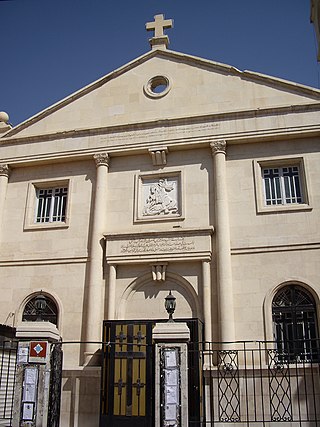
The Syriac Orthodox Church, officially known as the Syriac Orthodox Patriarchate of Antioch and All the East, and informally as the Jacobite Church, is an Oriental Orthodox church that branched from the Church of Antioch. The bishop of Antioch, known as the patriarch, heads the church, claiming apostolic succession through Saint Peter in the c. 1st century, according to sacred tradition. The church upholds Miaphysite doctrine in Christology, and employs the Divine Liturgy of Saint James, associated with James, the brother of Jesus. Classical Syriac is the official and liturgical language of the church.

Edessa was an ancient city (polis) in Upper Mesopotamia, founded during the Hellenistic period by King Seleucus I Nicator, founder of the Seleucid Empire. It later became capital of the Kingdom of Osroene, and continued as capital of the Roman province of Osroene. In Late Antiquity, it became a prominent center of Christian learning and seat of the Catechetical School of Edessa. During the Crusades, it was the capital of the County of Edessa.
Julia the Elder, Roman daughter of Augustus (d. 14) births
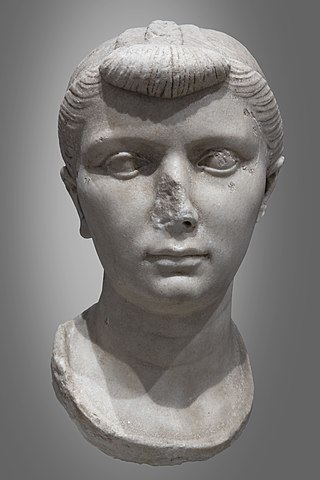
Julia the Elder, known to her contemporaries as Julia Caesaris filia or Julia Augusti filia, was the daughter and only biological child of Augustus, the first Roman Emperor, and his second wife, Scribonia. Julia was also stepsister and second wife of the Emperor Tiberius; maternal grandmother of the Emperor Caligula and the Empress Agrippina the Younger; grandmother-in-law of the Emperor Claudius; and maternal great-grandmother of the Emperor Nero. Her epithet 'the Elder' distinguishes her from her daughter, Julia the Younger.

Caesar Augustus, also known as Octavian, was the first Roman emperor; he reigned from 27 BC until his death in AD 14. He is known for being the founder of the Roman Principate, which is the first phase of the Roman Empire, and Augustus is considered one of the greatest leaders in human history. The reign of Augustus initiated an imperial cult as well as an era associated with imperial peace, the Pax Romana or Pax Augusta. The Roman world was largely free from large-scale conflict for more than two centuries despite continuous wars of imperial expansion on the empire's frontiers and the year-long civil war known as the "Year of the Four Emperors" over the imperial succession.
Anniversary of the Declaration of the Slovak Nation (Slovakia)
Remembrance Days in Slovakia are working days.

Slovakia, officially the Slovak Republic, is a landlocked country in Central Europe. It is bordered by Poland to the north, Ukraine to the east, Hungary to the south, Austria to the southwest, and the Czech Republic to the northwest. Slovakia's mostly mountainous territory spans about 49,000 square kilometres (19,000 sq mi), with a population of over 5.4 million. The capital and largest city is Bratislava, while the second largest city is Košice.
Christian feast day: Ethelnoth (Egelnoth) the Good
Æthelnoth was the archbishop of Canterbury from 1020 until his death. Descended from an earlier English king, Æthelnoth became a monk prior to becoming archbishop. While archbishop, he travelled to Rome and brought back saint's relics. He consecrated a number of other bishops who came from outside his archdiocese, leading to some friction with other archbishops. Although he was regarded as a saint after his death, there is little evidence of his veneration or of a cult in Canterbury or elsewhere.
Christian feast day: Blessed Dominic Collins (Catholic, Ireland, Society of Jesus)

Dominic Collins was an Irish Jesuit lay brother, an ex-soldier, who died for his Catholic faith. He was beatified as a martyr by Pope John Paul II on 27 September 1992.

The Society of Jesus abbreviated SJ, also known as the Jesuits, is a religious order of clerics regular of pontifical right for men in the Catholic Church headquartered in Rome. It was founded in 1540 by Ignatius of Loyola and six companions, with the approval of Pope Paul III. The society is engaged in evangelization and apostolic ministry in 112 nations. Jesuits work in education, research, and cultural pursuits. Jesuits also give retreats, minister in hospitals and parishes, sponsor direct social and humanitarian ministries, and promote ecumenical dialogue.
Christian feast day: Gerard of Potenza
Saint Gerard of Potenza, also Gerard La Porta was a Roman Catholic saint and a bishop of Potenza in Italy.
Christian feast day: Blessed Maria Teresa of St. Joseph

Beatification is a recognition accorded by the Catholic Church of a deceased person's entrance into Heaven and capacity to intercede on behalf of individuals who pray in their name. Beati is the plural form, referring to those who have undergone the process of beatification; they possess the title of "Blessed" before their names and are often referred to in English as "a Blessed" or, plurally, "Blesseds".

Blessed Maria Teresa of Saint Joseph - Anna Maria Tauscher van den Bosch was a German Roman Catholic professed religious and the founder of the Carmelite Sisters of the Divine Heart of Jesus. Tauscher worked in Cologne and was removed from her position after she converted to Roman Catholicism in 1888 so founded a religious order in the Netherlands upon choosing the Carmelite charism for her life.
Christian feast day: John Wycliffe (Episcopal Church (USA))
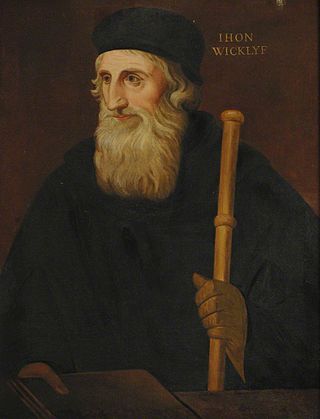
John Wycliffe was an English scholastic philosopher, theologian, biblical translator, reformer, Catholic priest, and a seminary professor at the University of Oxford. He became an influential dissident within the Catholic priesthood during the 14th century and is considered an important predecessor to Protestantism. Wycliffe questioned the privileged status of the clergy, who had bolstered their powerful role in England, and the luxury and pomp of local parishes and their ceremonies.
The veneration of saints in the Episcopal Church is a continuation of an ancient tradition from the early Church which honors important and influential people of the Christian faith. The usage of the term saint is similar to Roman Catholic and Orthodox traditions. Episcopalians believe in the communion of saints in prayer and as such the Episcopal liturgical calendar accommodates feasts for saints.
Christian feast day: Marcellus of Tangier
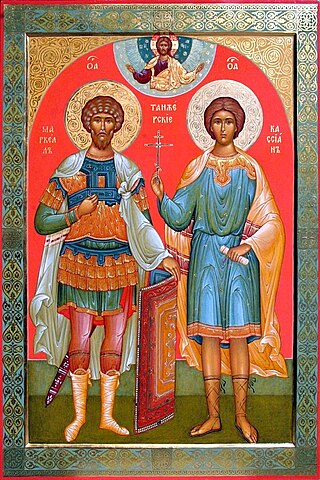
Saint Marcellus of Tangier or Saint Marcellus the Centurion was a Roman centurion who is today venerated as a martyr-saint by the Catholic Church and the Eastern Orthodox Church. His feast day is celebrated on October 30.
Christian feast day: Saturninus of Cagliari

Saint Saturninus of Cagliari is venerated as the patron saint of Cagliari. According to Christian tradition, Saturninus was a local martyr –that is, he was killed at Cagliari by order of governor Barbarus. The legend states that he was beheaded for refusing to offer sacrifices to Jupiter during the persecutions of Christians by Diocletian.
Christian feast day: Serapion of Antioch

Serapion was a Patriarch of Antioch (191–211). He is known primarily through his theological writings, although all but a few fragments of his works have perished. His feast day is celebrated on October 30.
Christian feast day: Talarican (Tarkin)
Talarican (Tarkin) was a Scottish Bishop of Sodor of the eighth century.
Christian feast day: Theonistus
Saint Theonistus is a saint venerated by the Catholic Church. Theonistus is venerated with two companions, Tabra and Tabratha. Medieval documents give accounts of his life, which are contradictory and confused.
Christian feast day: Zenobios and Zenobia
The Holy Martyrs Zenobios and Zenobia are recognized by Eastern Orthodox Church and the Roman Catholic Church; their day is October 30.
Christian feast day: October 30 (Eastern Orthodox liturgics)

October 29 - Eastern Orthodox liturgical calendar - October 31
Day of Remembrance of the Victims of Political Repressions (former Soviet republics, except Ukraine)

The Remembrance Day for the Victims of Political Repression is an annual day when victims of political repression in the Soviet Union are remembered and mourned across the Russian Federation.
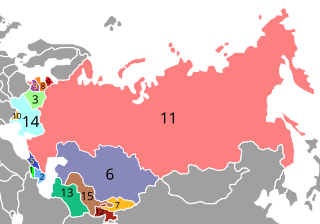
The post-Soviet states, also known as the former Soviet Union (FSU), the former Soviet Republics and in Russia as the near abroad, are the 15 sovereign states that were union republics of the Soviet Union, which emerged and re-emerged from the Soviet Union following its dissolution in 1991.

Ukraine is a country in Eastern Europe. It is the second-largest European country after Russia, which it borders to the east and northeast. Ukraine covers approximately 600,000 square kilometres (230,000 sq mi). Prior to the ongoing Russo-Ukrainian War, it was the eighth-most populous country in Europe, with a population of around 41 million people. It is also bordered by Belarus to the north; by Poland, Slovakia, and Hungary to the west; and by Romania and Moldova to the southwest; with a coastline along the Black Sea and the Sea of Azov to the south and southeast. Kyiv is the nation's capital and largest city. Ukraine's official and national language is Ukrainian; most people are also fluent in Russian.
Thevar Jayanthi (Thevar community, India)
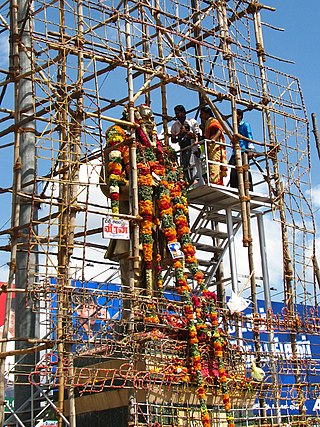
Thevar Jayanthi, celebrated on 30 October, is an annual commemoration of the birthday of Pasumpon Muthuramalingam Thevar. It is celebrated in a grand way by the Thevar community in the southern districts of Tamil Nadu. Although not an official public holiday, many schools and businesses in the area remain closed on the day.
The Mukkulathor people, who are also collectively known as Thevar, are a community or group of communities native to the central and southern districts of Tamil Nadu, India. They comprise the Agamudayar, Kallar and Maravar communities that share a common myth of origin and claim to have once been members of various ancient South Indian dynasties.

India, officially the Republic of India, is a country in South Asia. It is the seventh-largest country by area, the second-most populous country, and the most populous democracy in the world. Bounded by the Indian Ocean on the south, the Arabian Sea on the southwest, and the Bay of Bengal on the southeast, it shares land borders with Pakistan to the west; China, Nepal, and Bhutan to the north; and Bangladesh and Myanmar to the east. In the Indian Ocean, India is in the vicinity of Sri Lanka and the Maldives; its Andaman and Nicobar Islands share a maritime border with Thailand, Myanmar, and Indonesia.
Mischief Night (Ireland, Canada, United Kingdom, United States and other places)
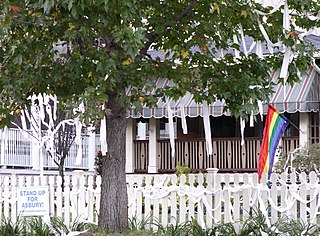
Mischief Night is an informal holiday on which children, teenagers and adults engage in jokes, pranks, vandalism and/or parties. It is known by a variety of names including Devil's Night, Gate Night, Goosey Night, Moving Night, Cabbage Night and Mat Night.

Ireland, also known as the Republic of Ireland, is a country in north-western Europe consisting of 26 of the 32 counties of the island of Ireland. The capital and largest city is Dublin, on the eastern side of the island. Around 2.1 million of the country's population of 5.13 million people resides in the Greater Dublin Area. The sovereign state shares its only land border with Northern Ireland, which is part of the United Kingdom. It is otherwise surrounded by the Atlantic Ocean, with the Celtic Sea to the south, St George's Channel to the south-east, and the Irish Sea to the east. It is a unitary, parliamentary republic. The legislature, the Oireachtas, consists of a lower house, Dáil Éireann; an upper house, Seanad Éireann; and an elected President who serves as the largely ceremonial head of state, but with some important powers and duties. The head of government is the Taoiseach, who is elected by the Dáil and appointed by the President; the Taoiseach in turn appoints other government ministers.

Canada is a country in North America. Its ten provinces and three territories extend from the Atlantic Ocean to the Pacific Ocean and northward into the Arctic Ocean, covering over 9.98 million square kilometres, making it the world's second-largest country by total area. Its southern and western border with the United States, stretching 8,891 kilometres (5,525 mi), is the world's longest binational land border. Canada's capital is Ottawa, and its three largest metropolitan areas are Toronto, Montreal, and Vancouver.

The United Kingdom of Great Britain and Northern Ireland, commonly known as the United Kingdom (UK) or Britain, is a country in Europe, off the north-western coast of the continental mainland. It comprises England, Scotland, Wales and Northern Ireland. The United Kingdom includes the island of Great Britain, the north-eastern part of the island of Ireland, and many smaller islands within the British Isles. Northern Ireland shares a land border with the Republic of Ireland; otherwise, the United Kingdom is surrounded by the Atlantic Ocean, the North Sea, the English Channel, the Celtic Sea and the Irish Sea. The total area of the United Kingdom is 242,495 square kilometres (93,628 sq mi), with an estimated 2020 population of more than 67 million people.

The United States of America, commonly known as the United States or America, is a country in North America. It consists of 50 states, a federal district, five major unincorporated territories, nine Minor Outlying Islands, and 326 Indian reservations. It is the third-largest country by both land and total area. The United States shares land borders with Canada to its north and with Mexico to its south. It has maritime borders with the Bahamas, Cuba, Russia, and other nations. With a population of over 331 million, it is the most populous country in North America and the third most populous in the world. The national capital is Washington, D.C., and the most populous city and financial center is New York City.